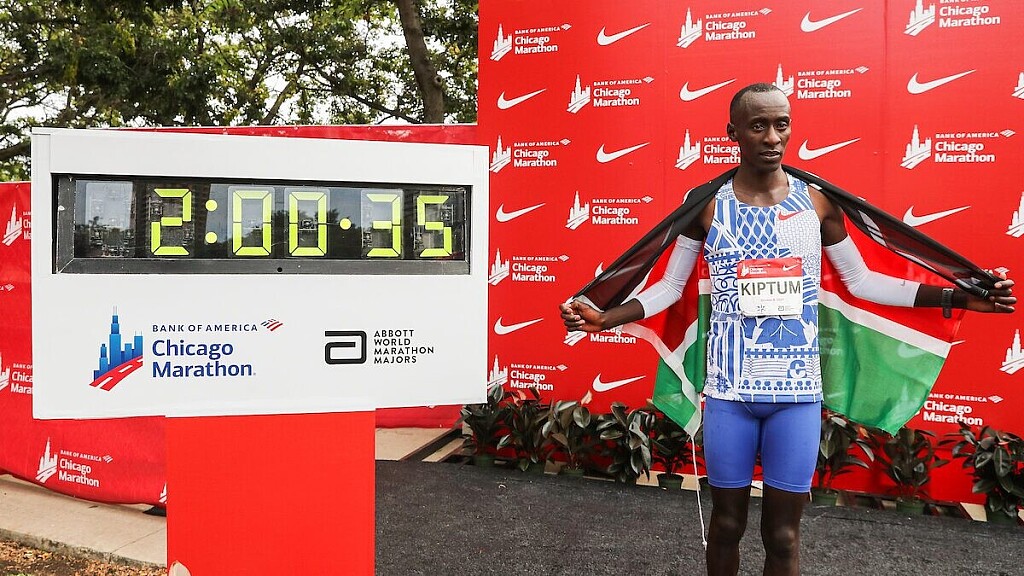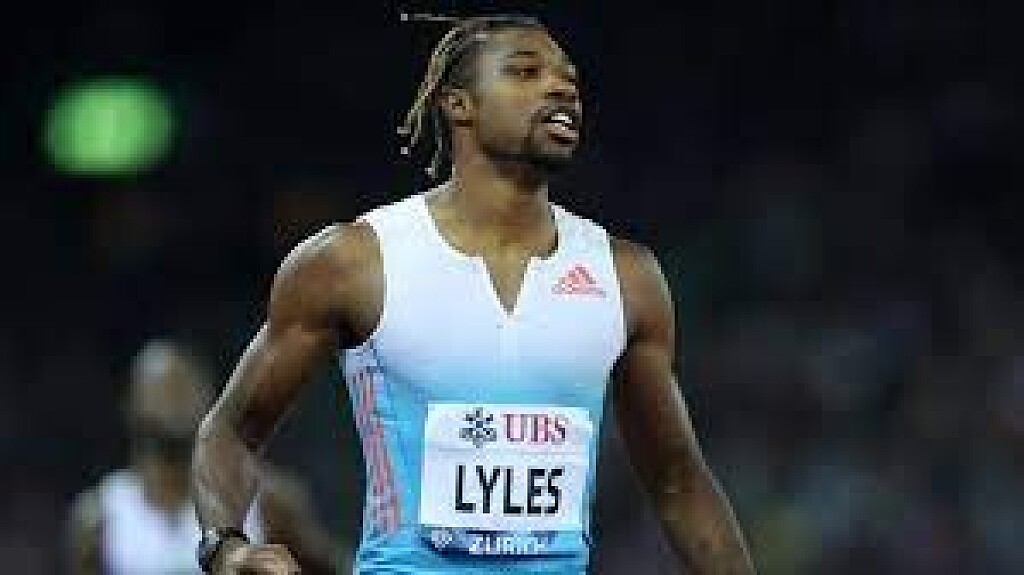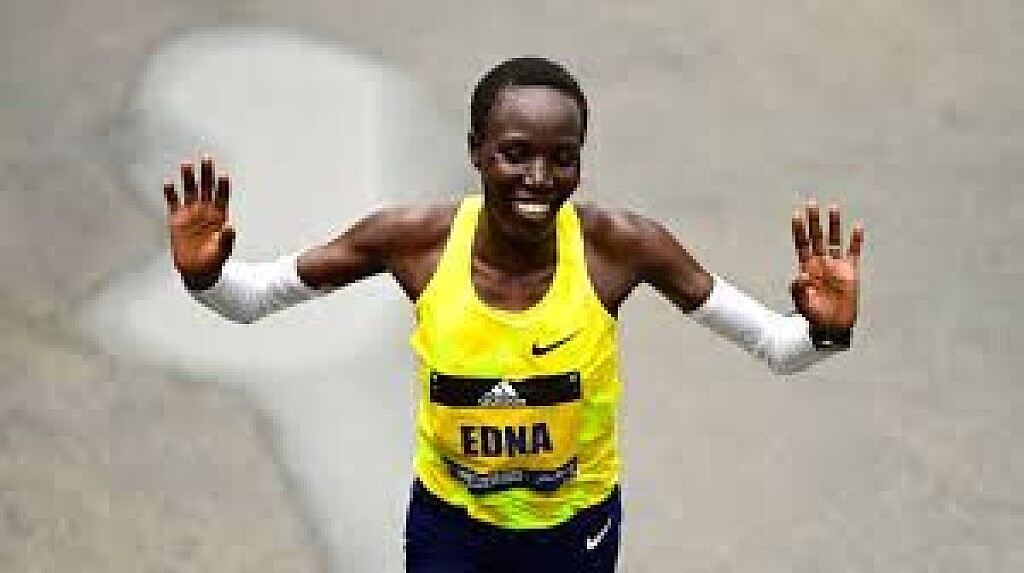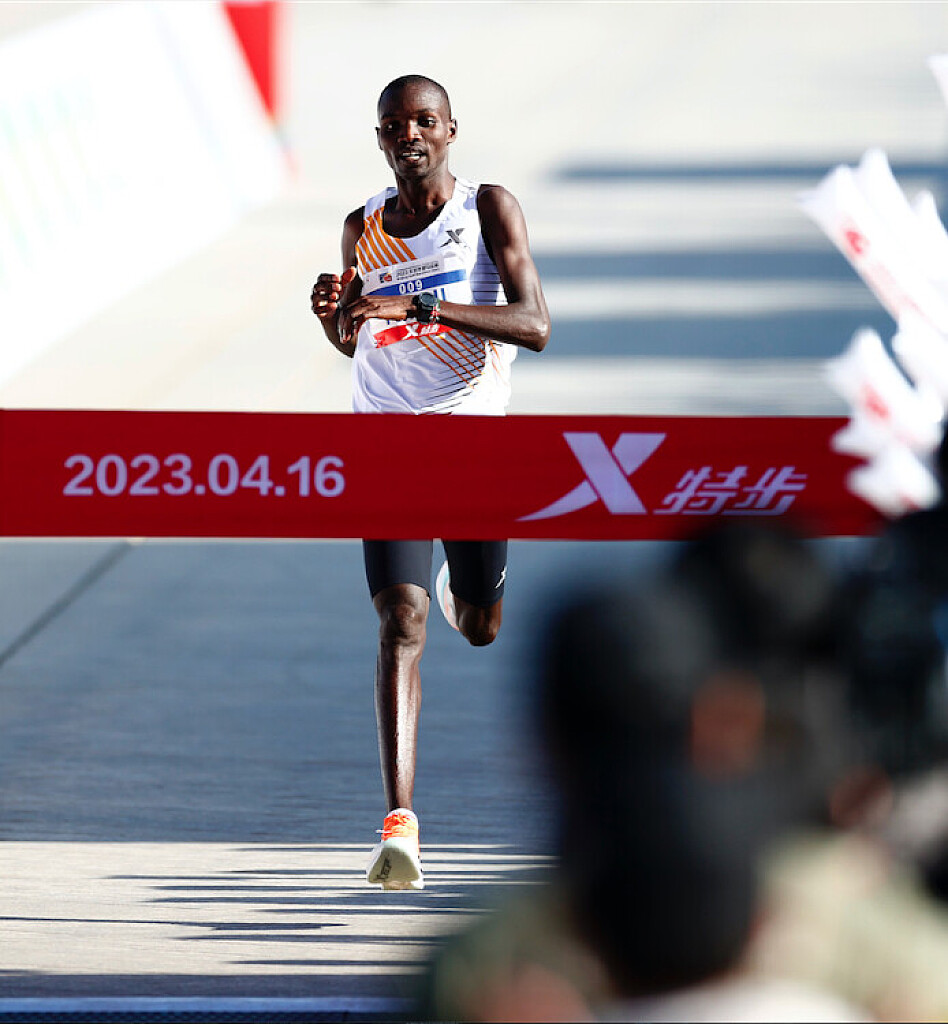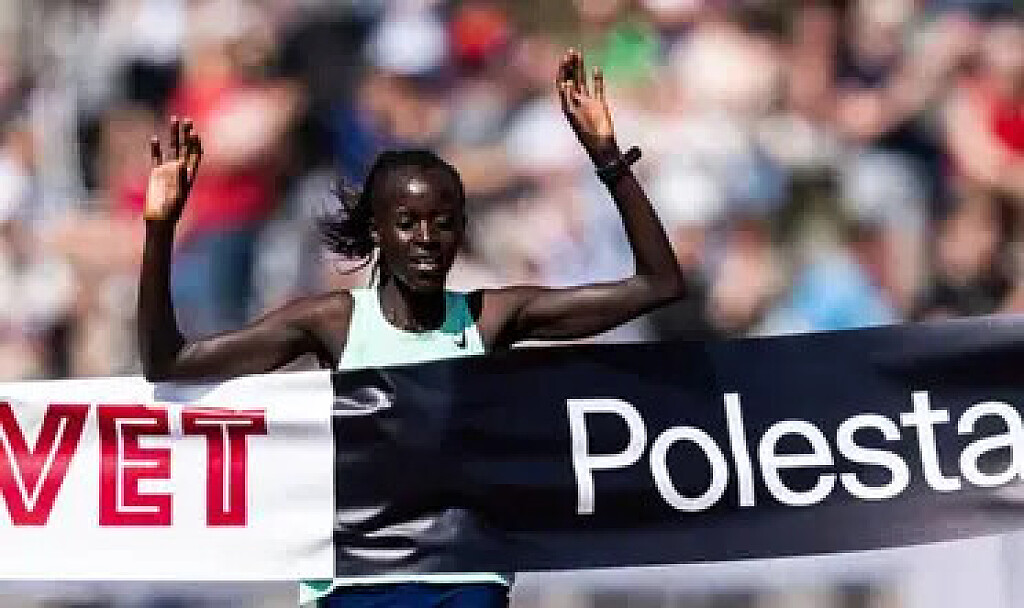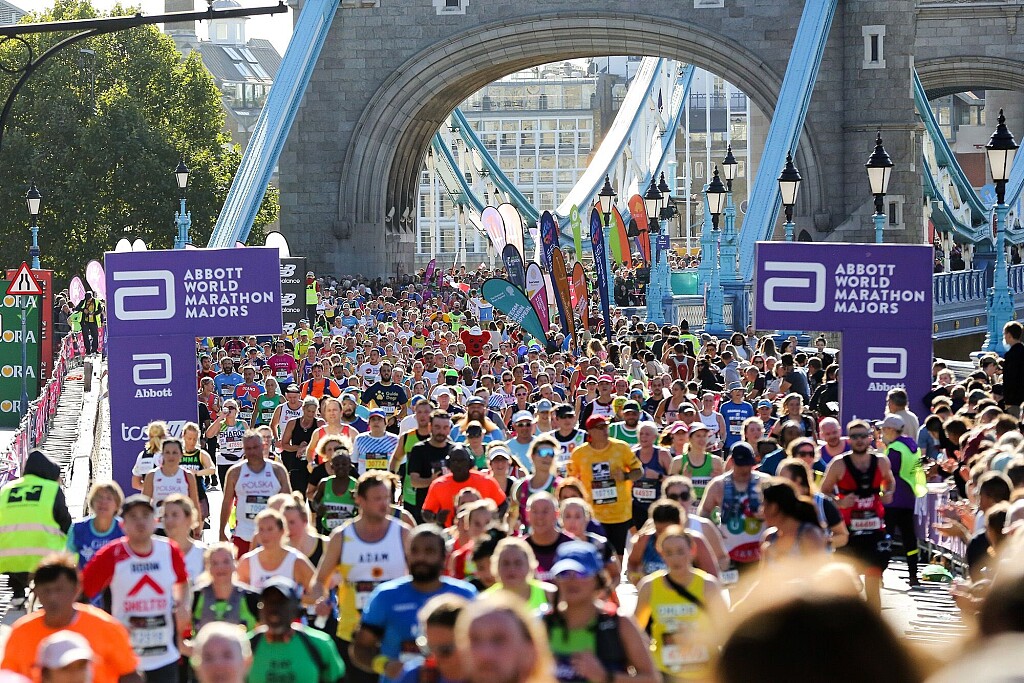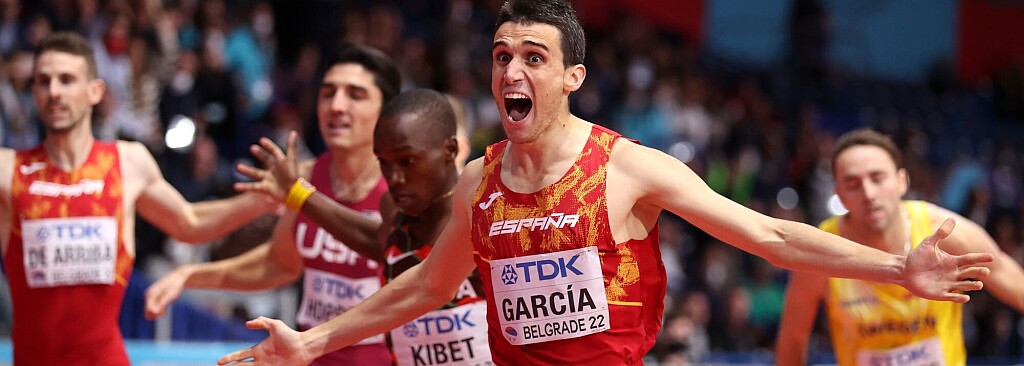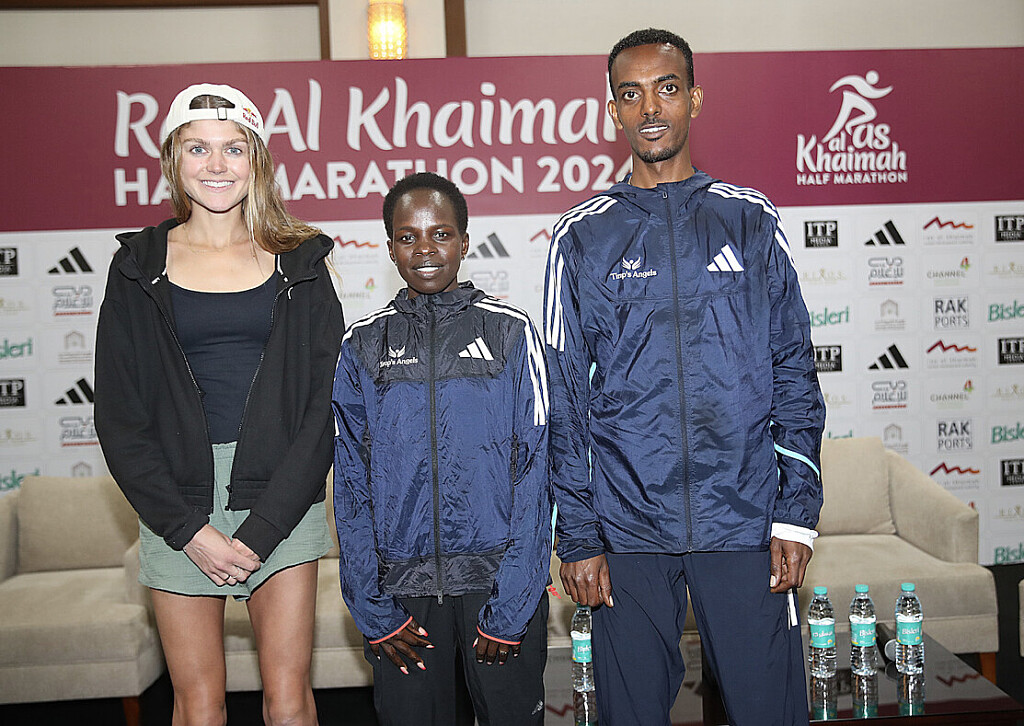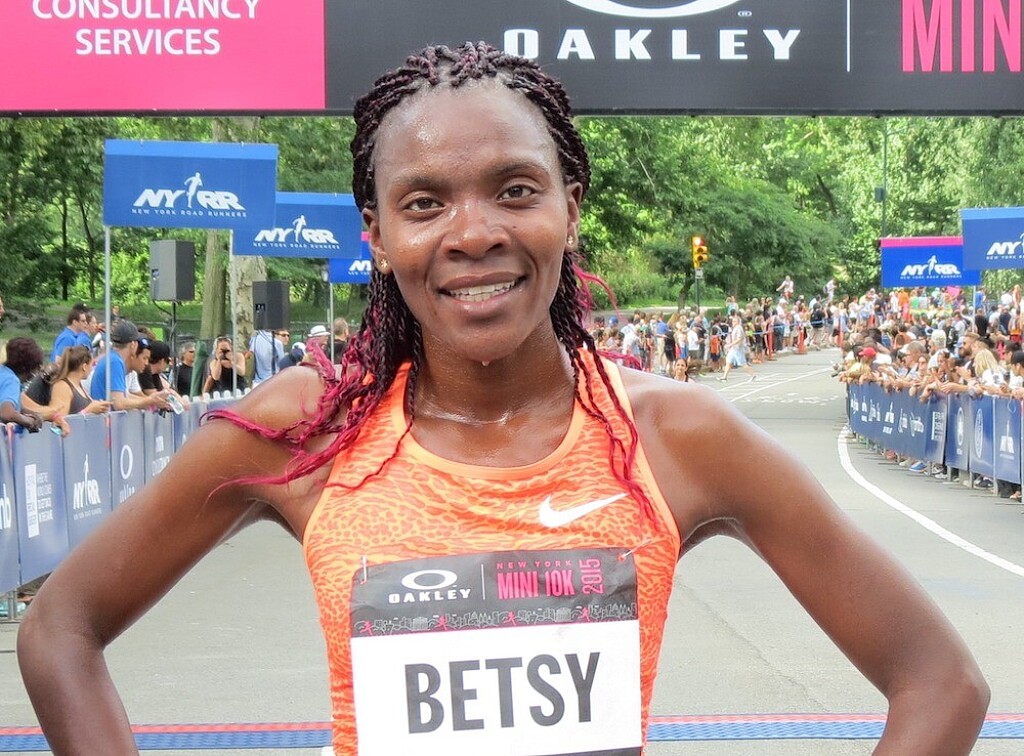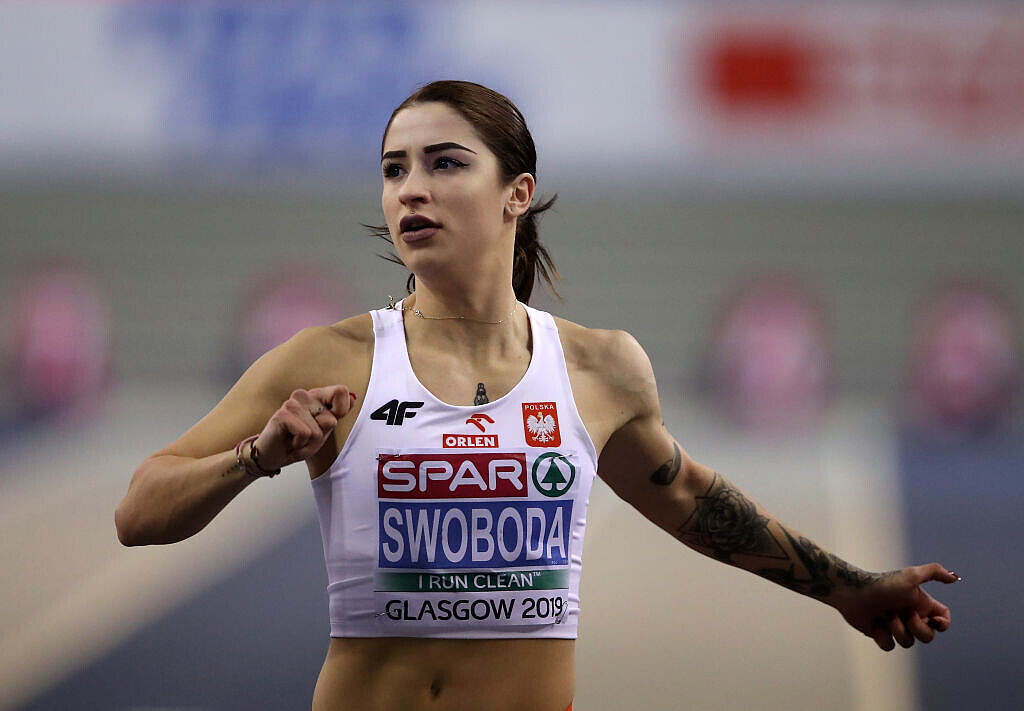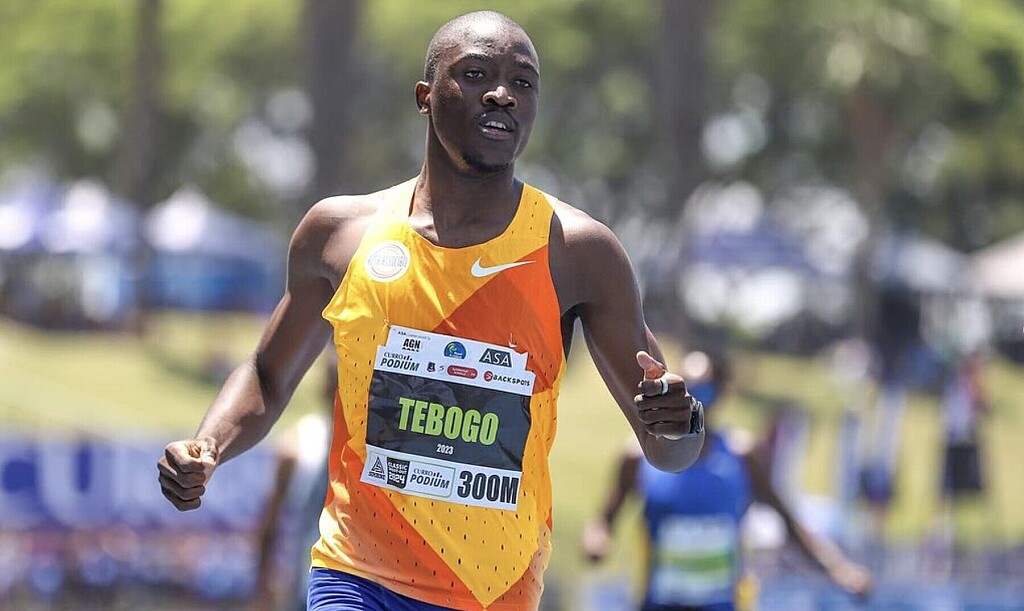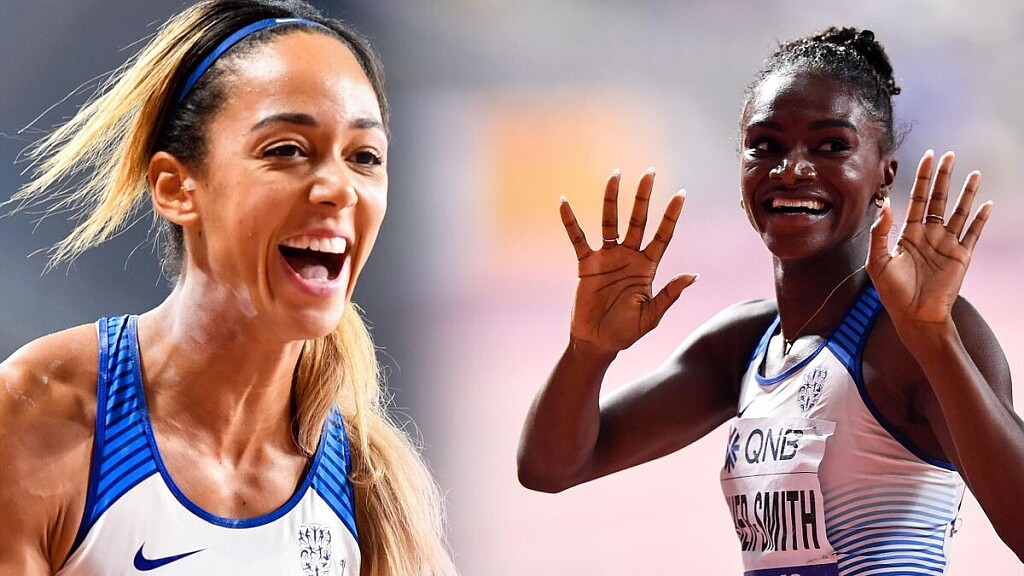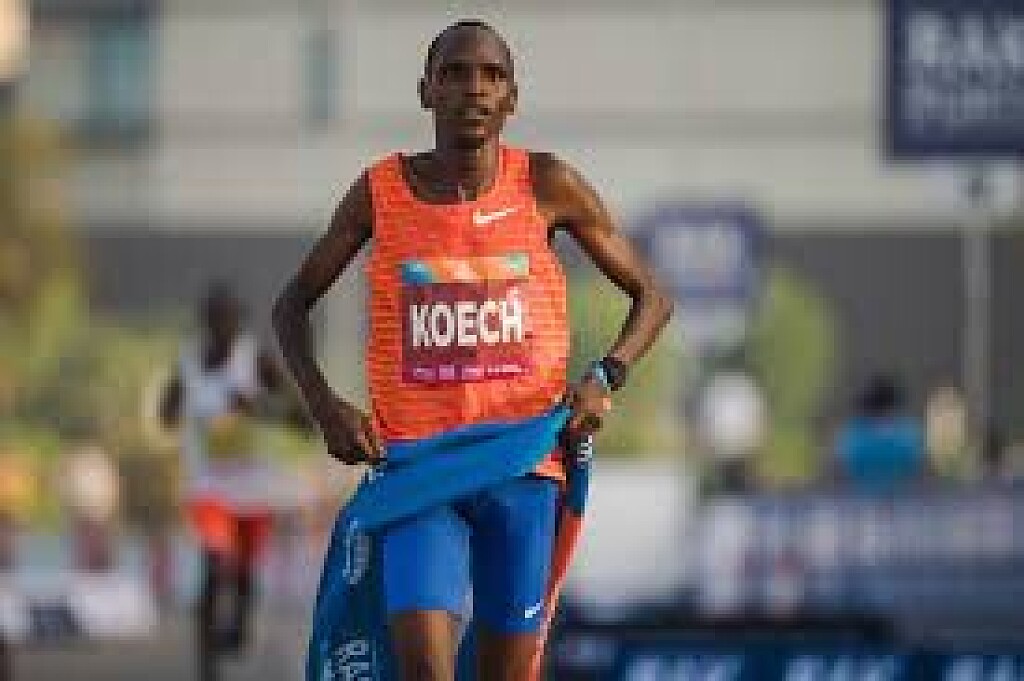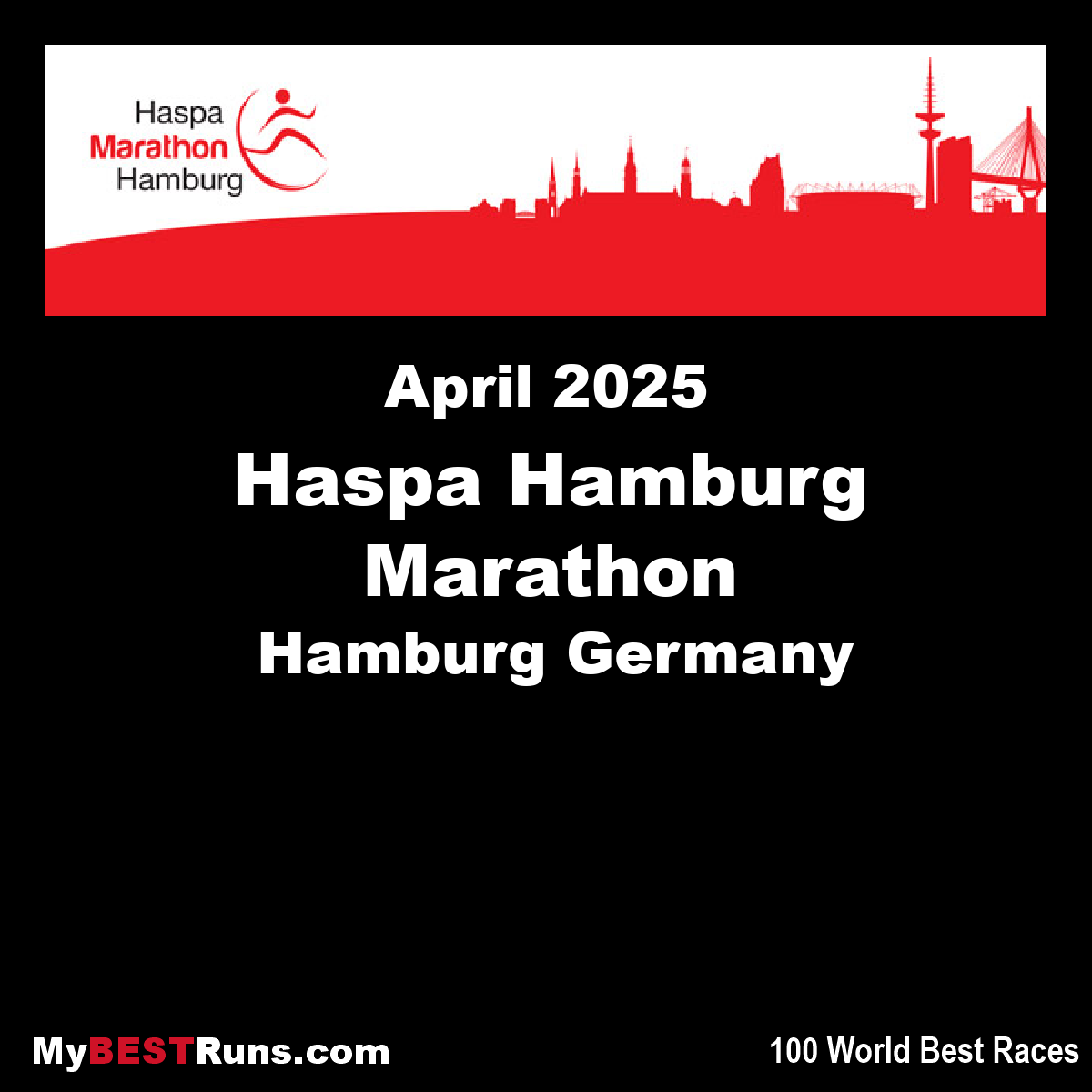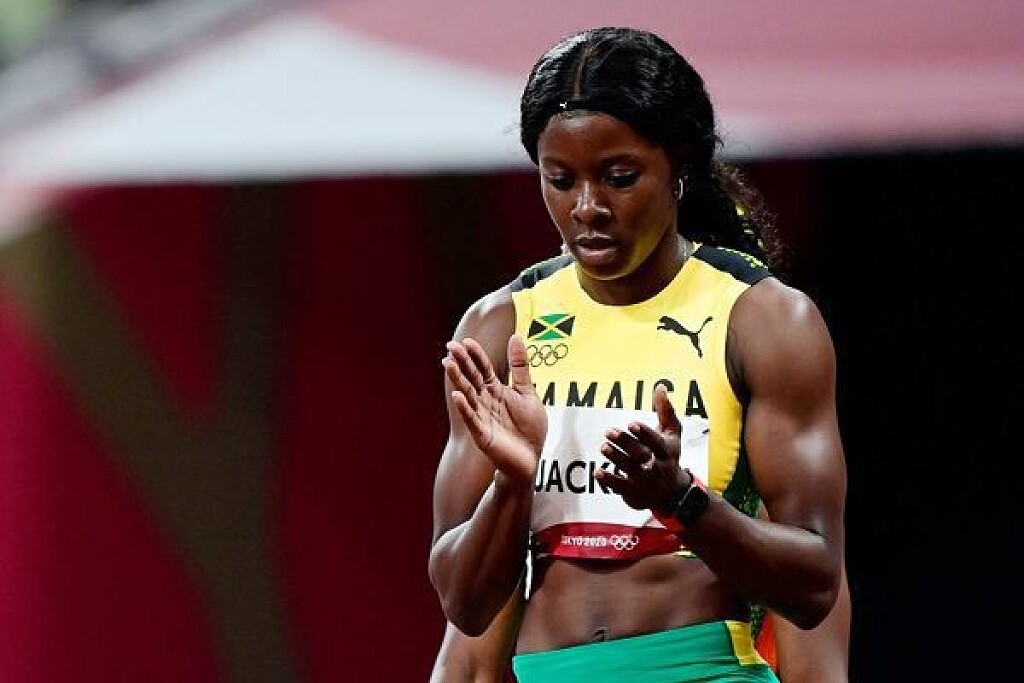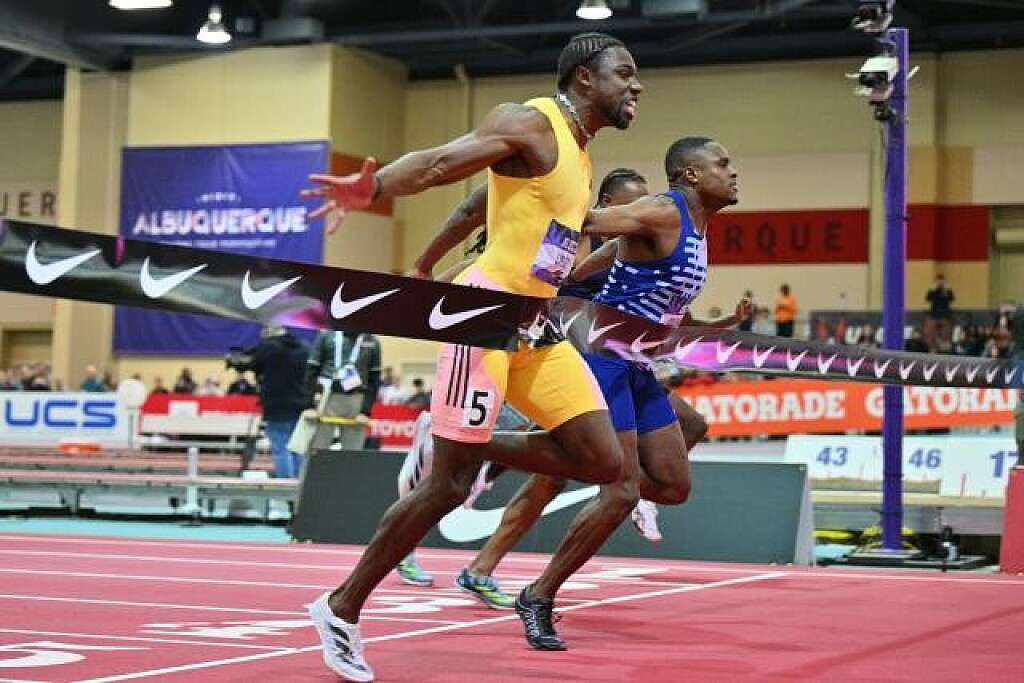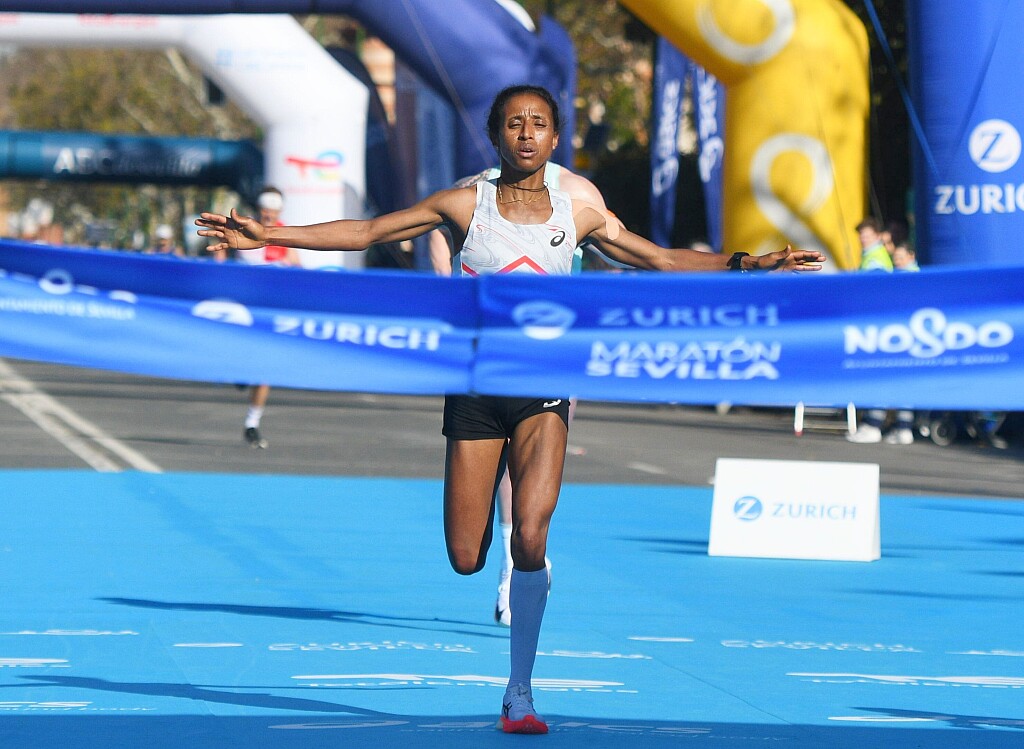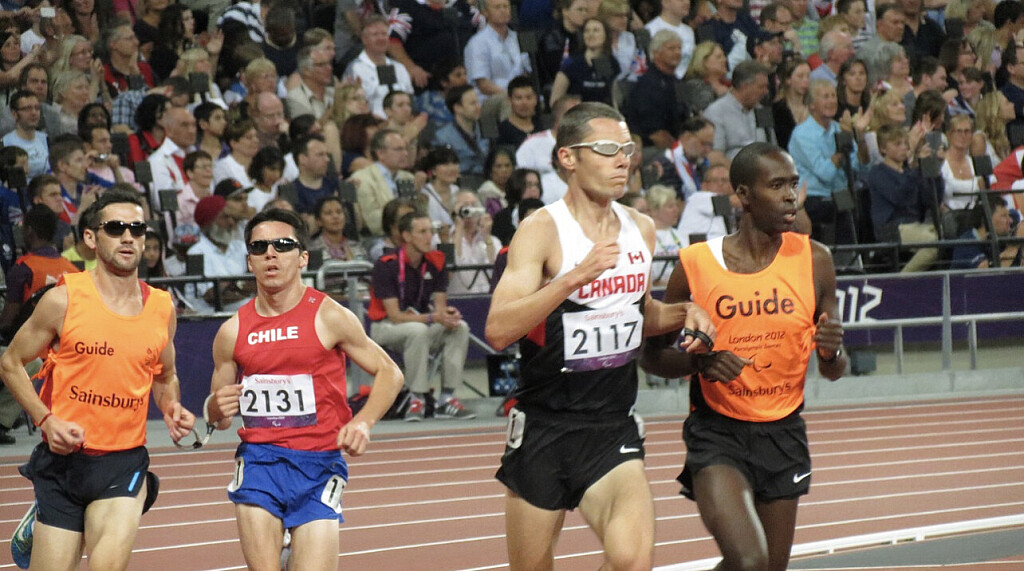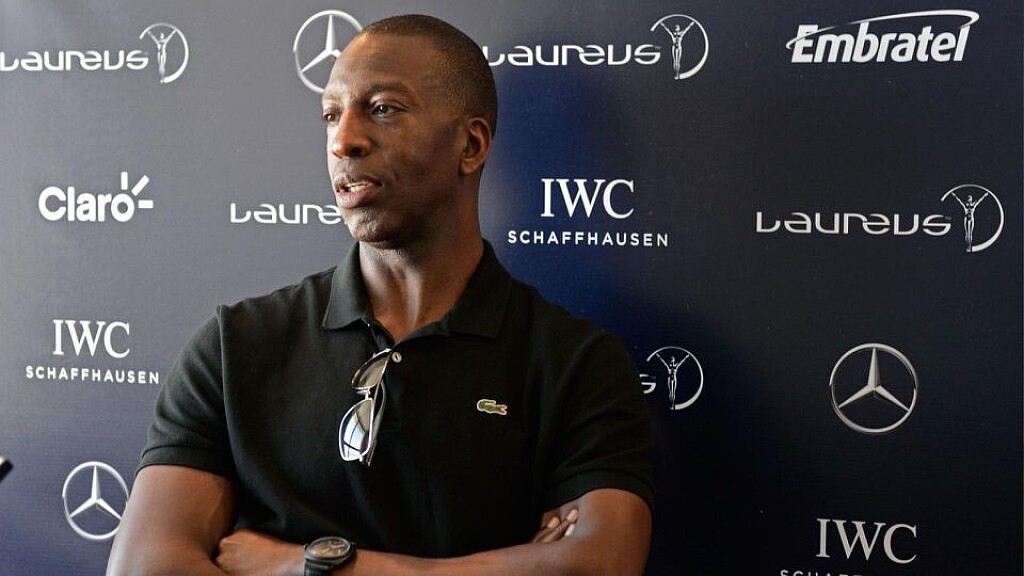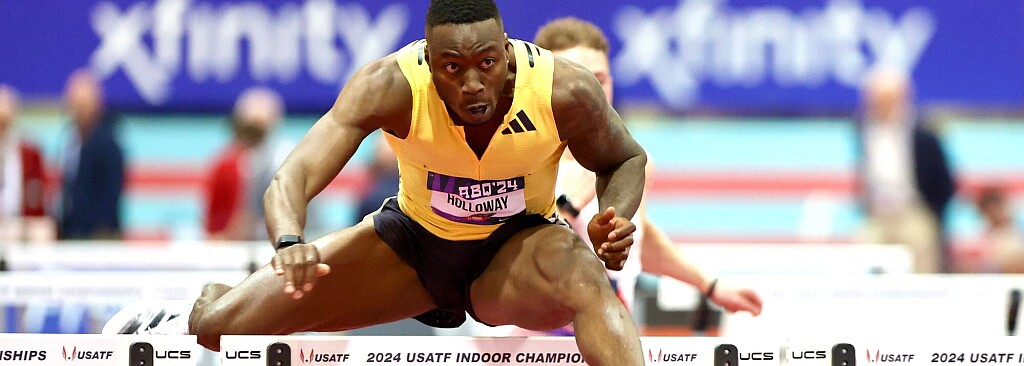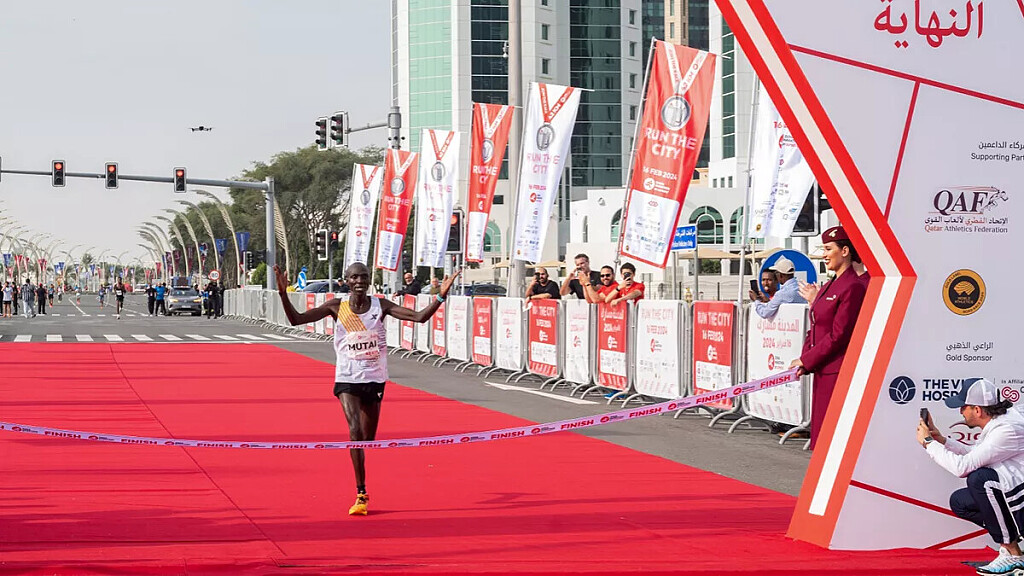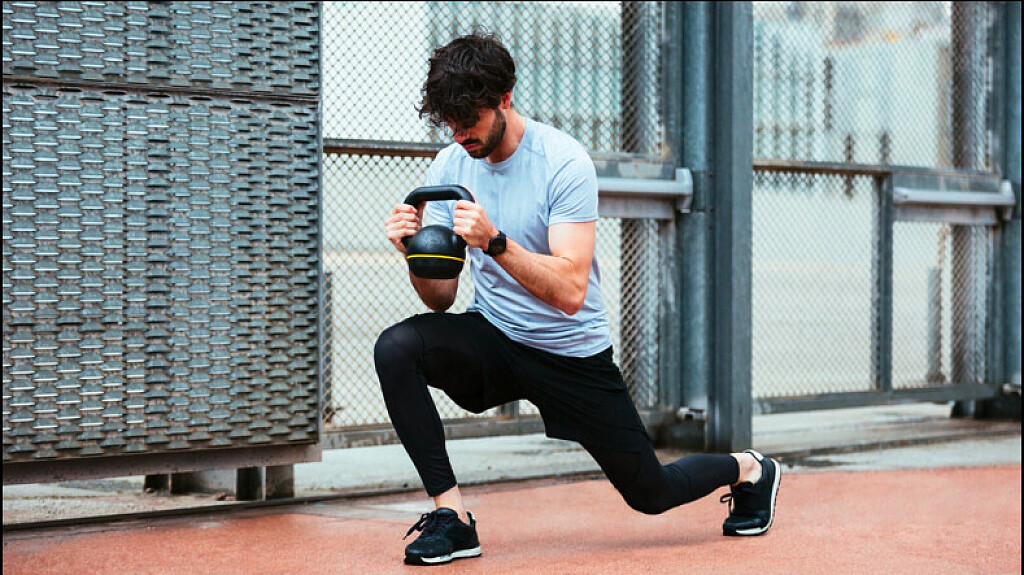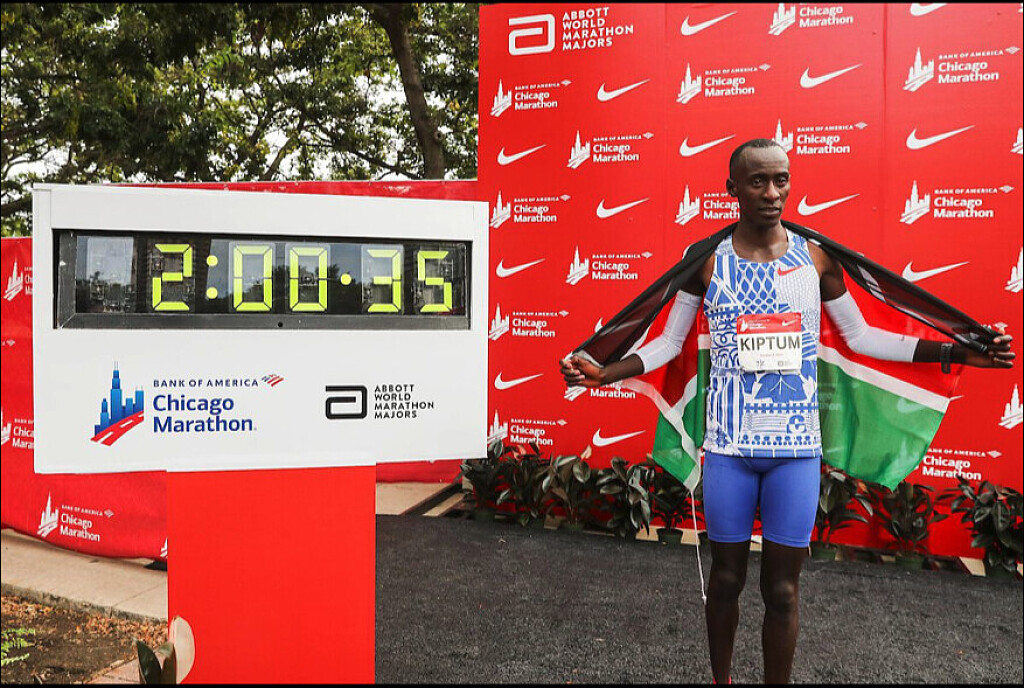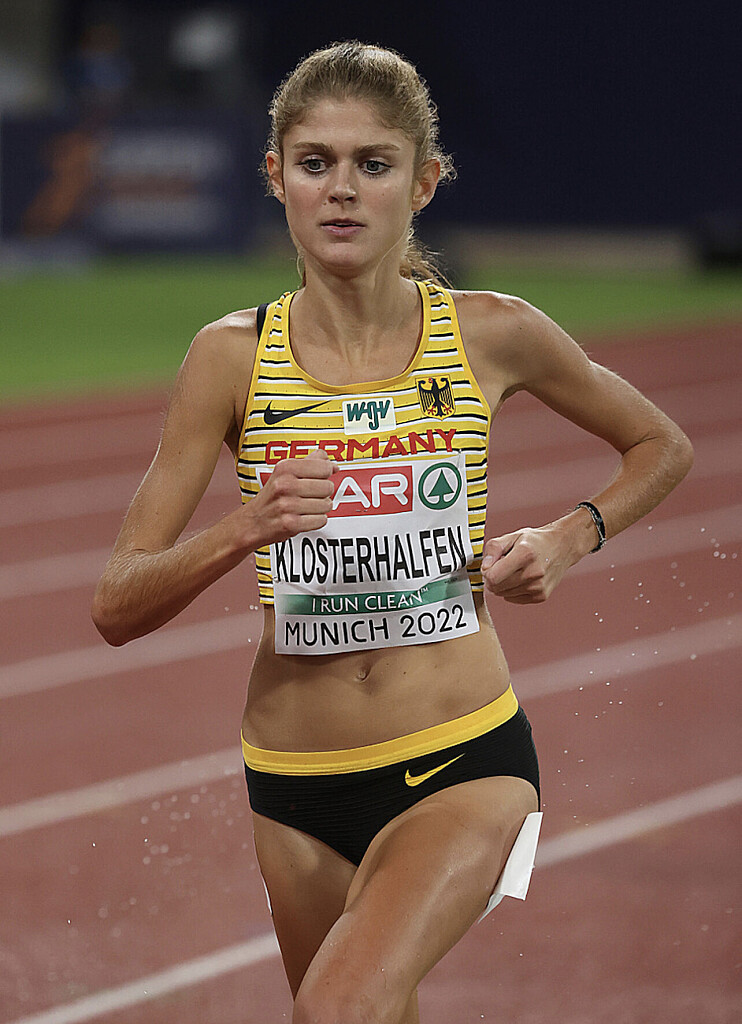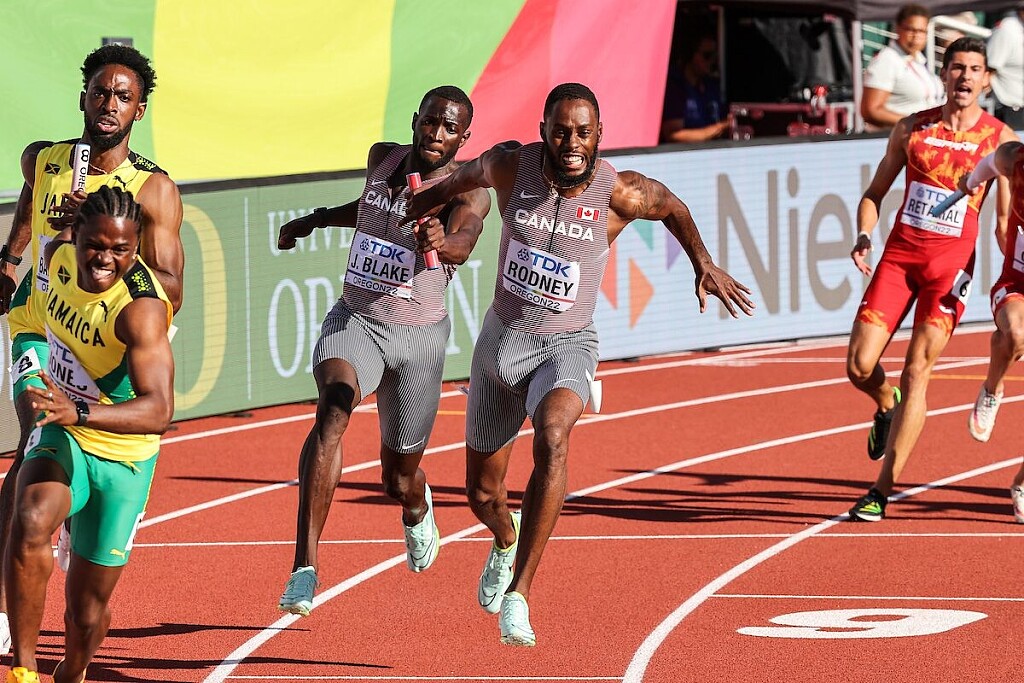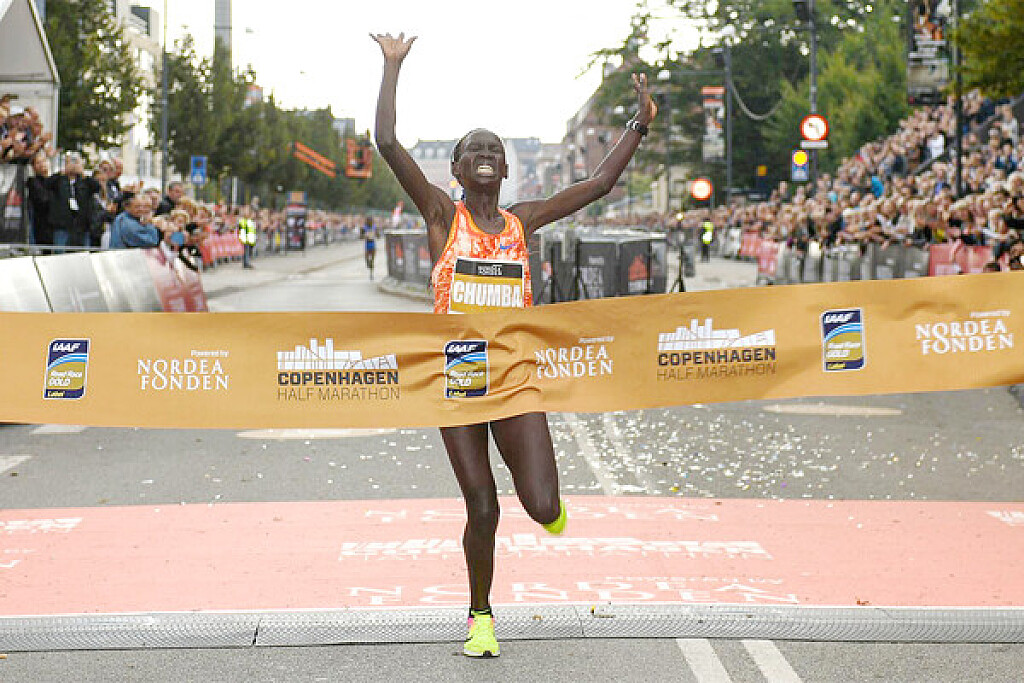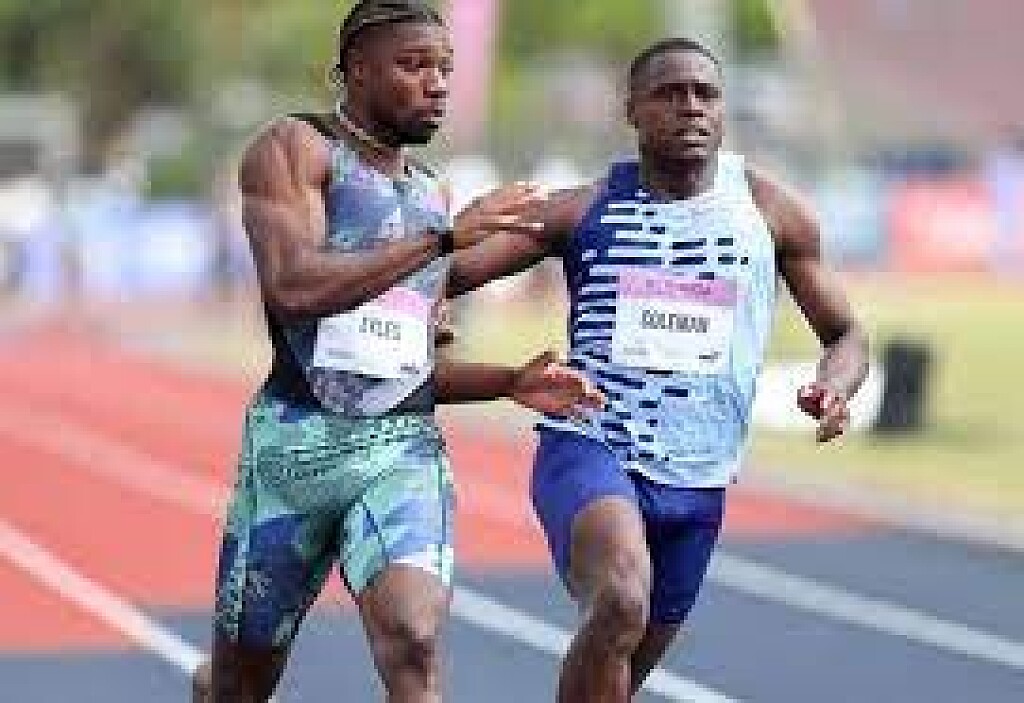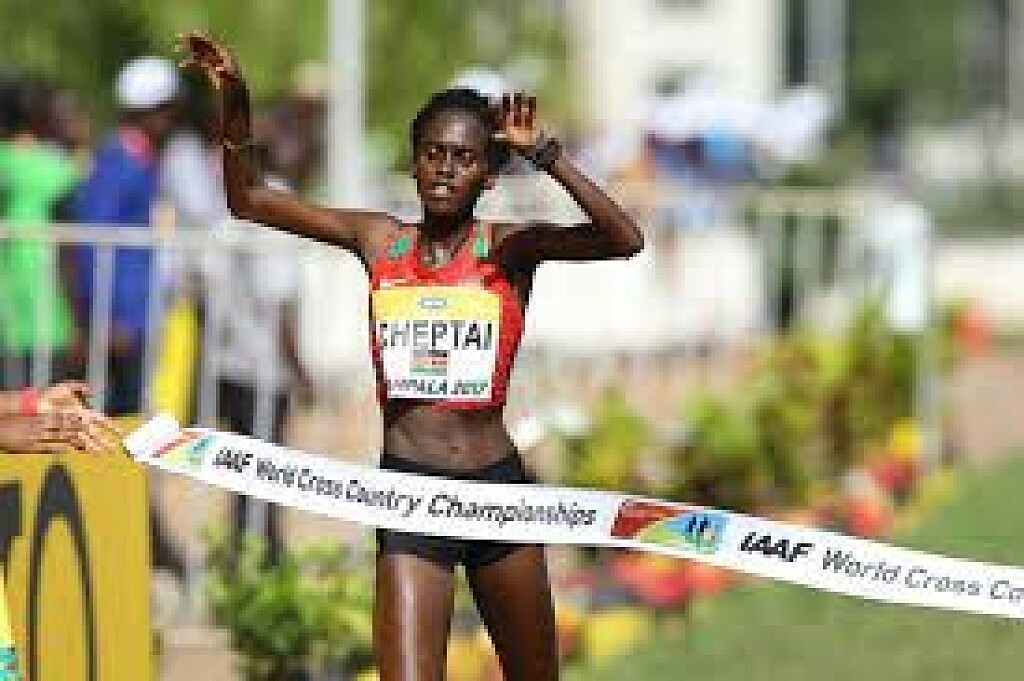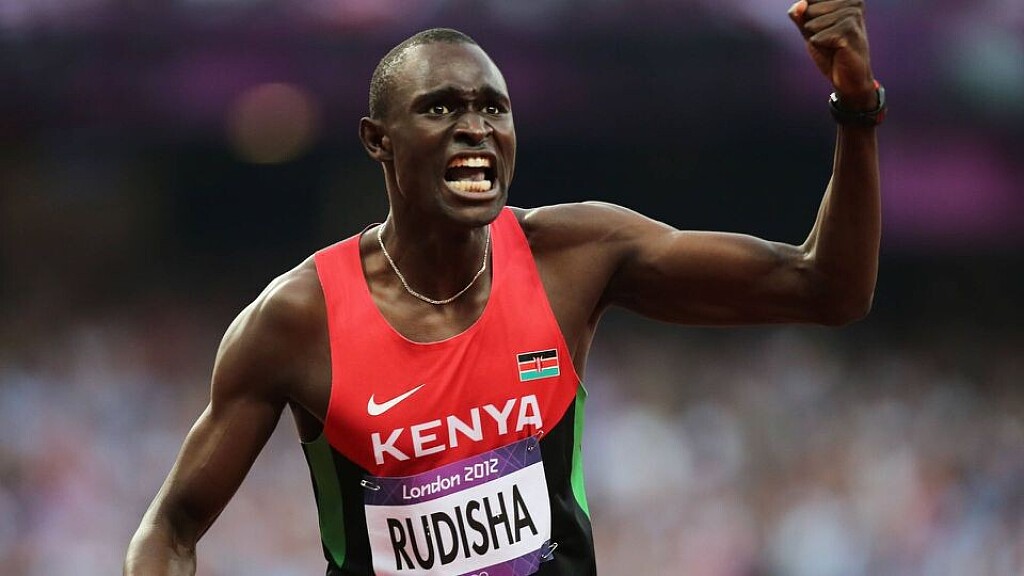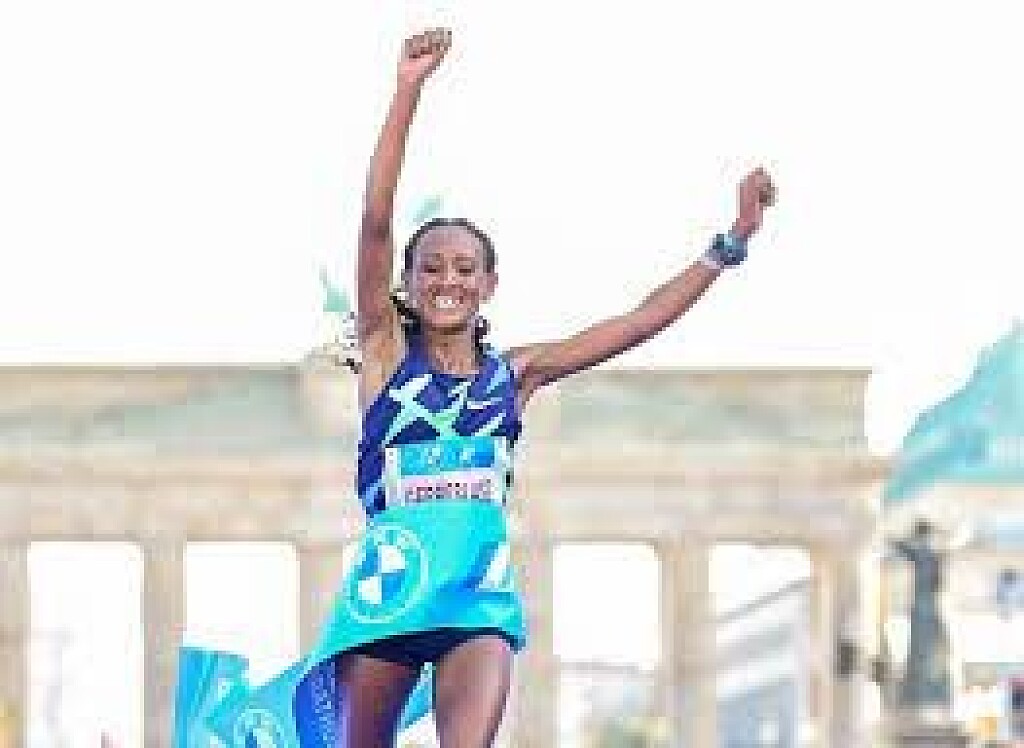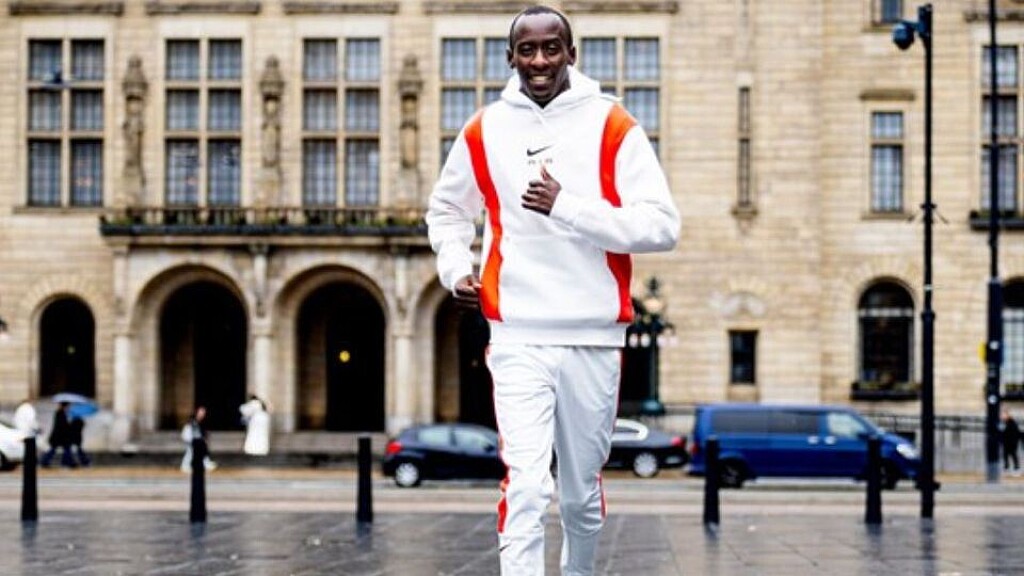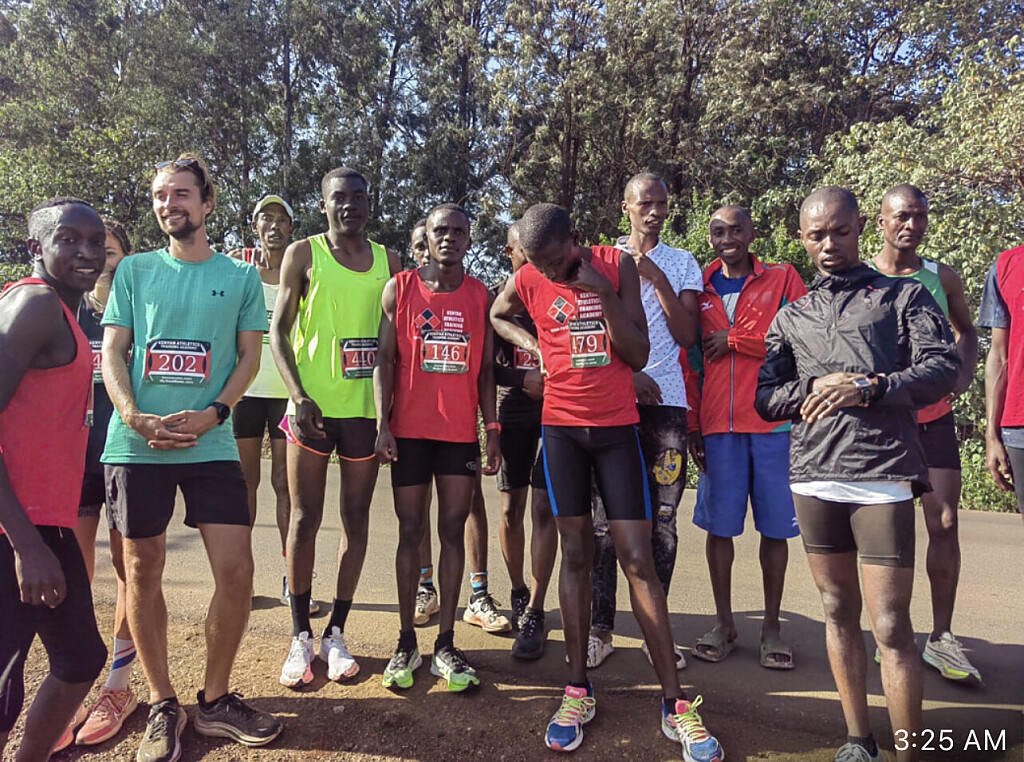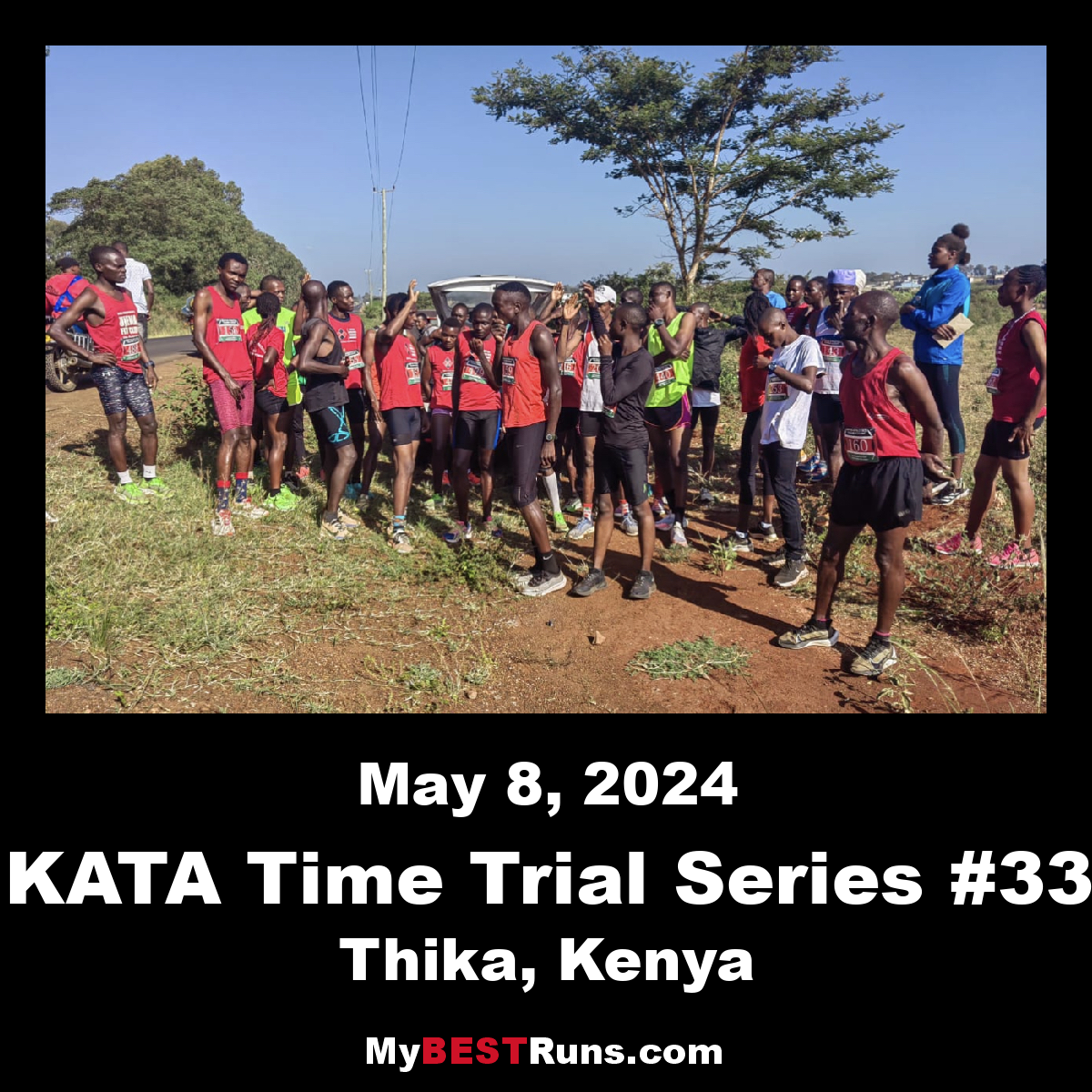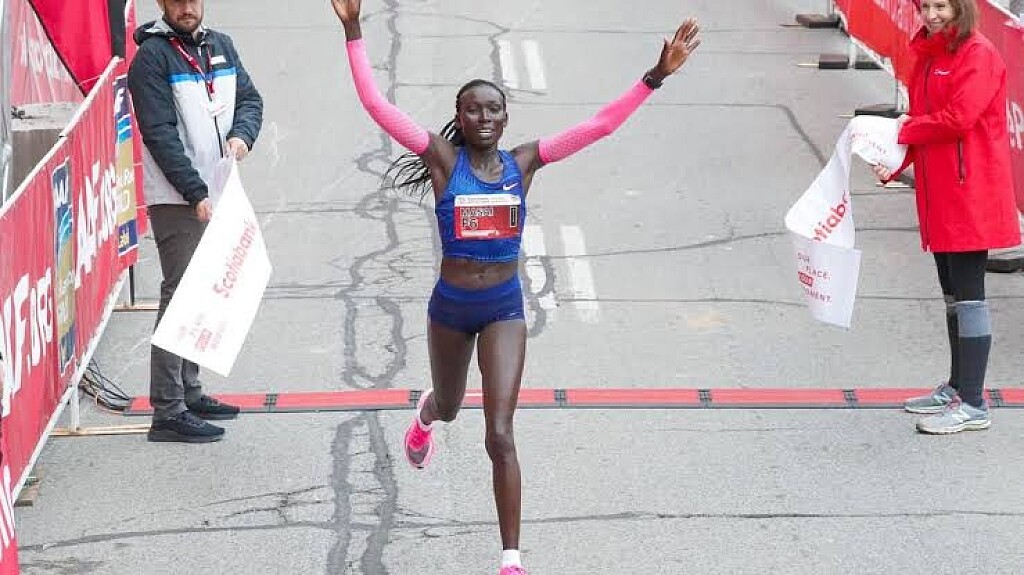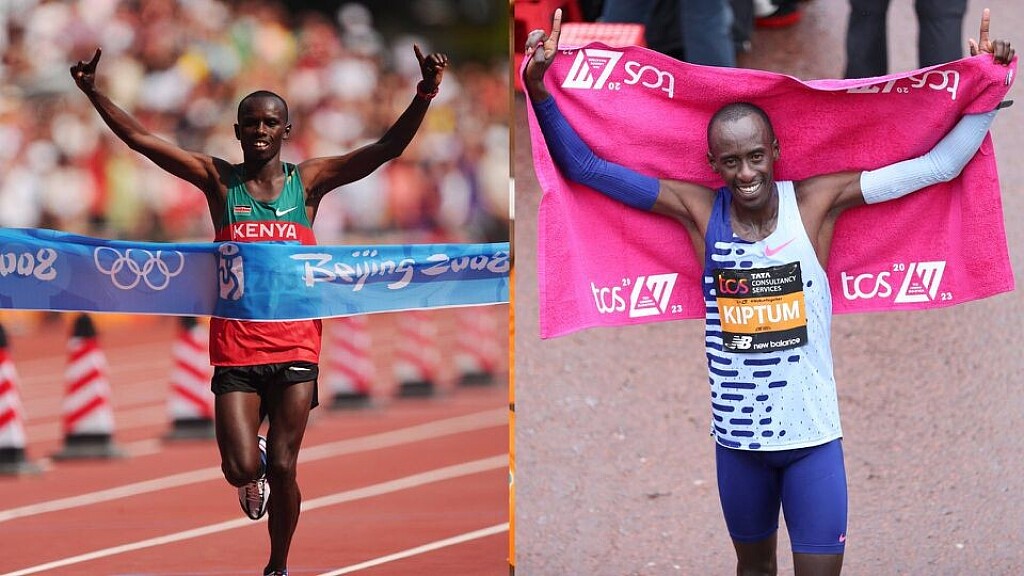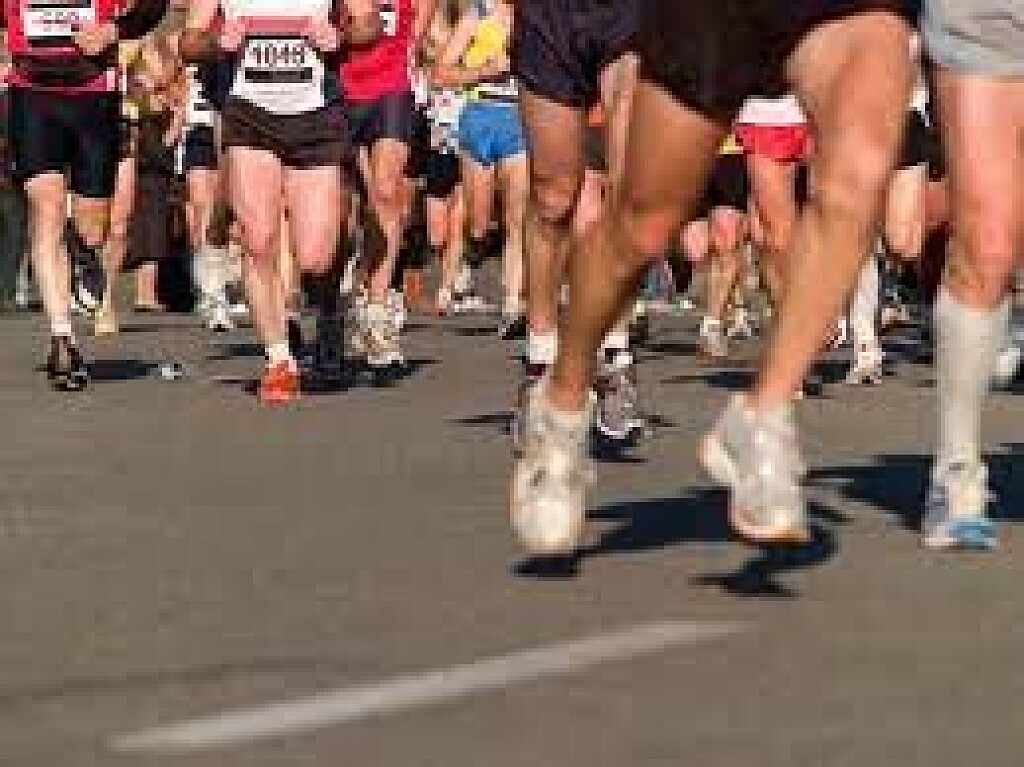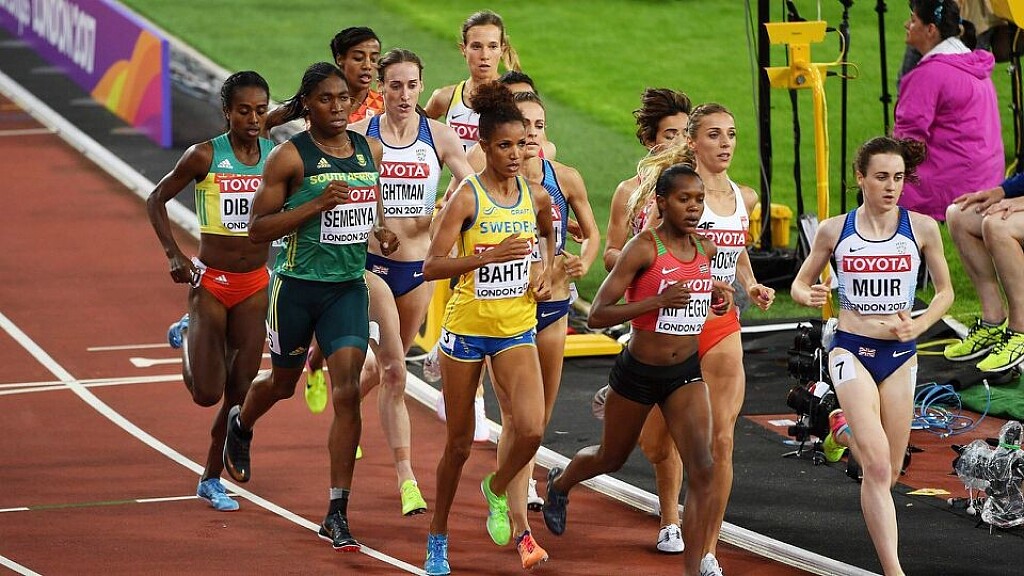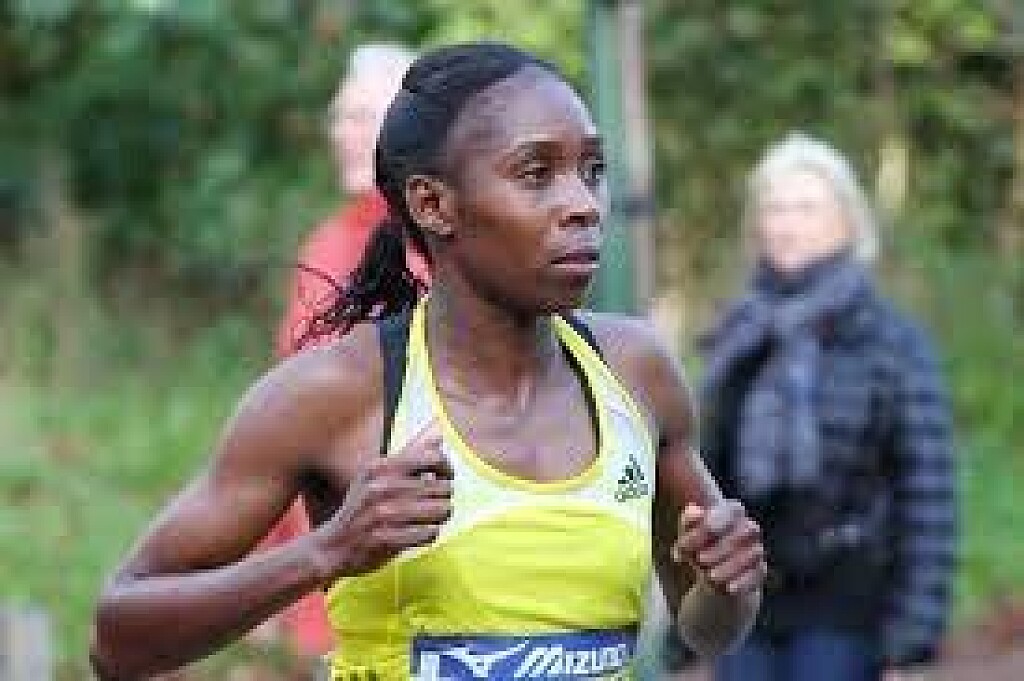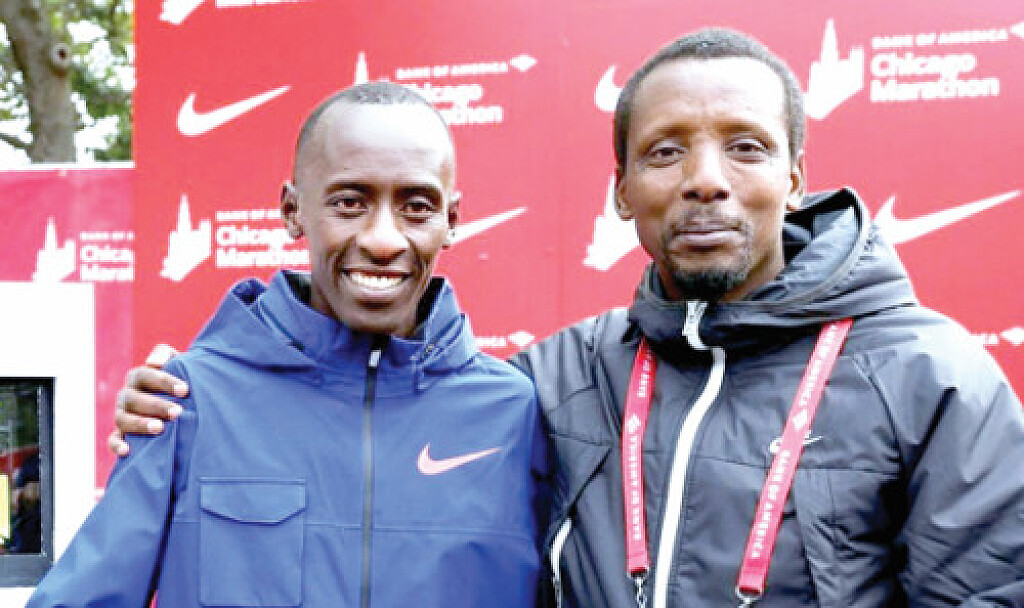Running News Daily
Running News Daily is edited by Bob Anderson. Send your news items to bob@mybestruns.com Advertising opportunities available. Train the Kenyan Way at KATA Kenya and Portugal owned and operated by Bob Anderson. Be sure to catch our movie A Long Run the movie KATA Running Camps and KATA Potato Farms - 31 now open in Kenya! https://kata.ke/
Index to Daily Posts · Sign Up For Updates · Run The World Feed
Kelvin Kiptum: Thousands mourn marathon world record holder at funeral in Kenya
On Friday in Chepkorio, Kenya, thousands gathered for the funeral of marathon world record holder Kelvin Kiptum, who died at the age of 24 in a car accident on Feb. 11 with his coach, Gervais Hakizimana.
Kiptum will be remembered as one of the biggest rising stars in the sport for his record-breaking two-hour and 35-second run to break the world record at the 2023 Chicago Marathon.
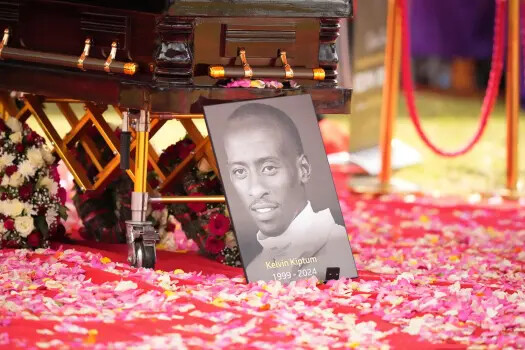
Kiptum’s widow, Asenath Rotich, led the mourners at the funeral for the Kenyan marathon star. According to BBC Africa, she broke down when revealing that the couple had been planning a big wedding celebration in April. He had stunned the world in his short marathon career, and figures from sports and politics came to pay tribute to a man whose life had promised so much.
Kenyan president William Ruto was in attendance, as well as World Athletics president Sebastian Coe, who believed Kiptum would have become the first person to run a competitive marathon in under two hours. “It is a frustration to all of us that we won’t witness what I truly know he was capable of,” Coe told BBC Africa. “For sure he would have broken it. It would have been (Roger) Bannister and Edmund Hillary, both of them, wrapped into one.”

Kiptum was looking to better his world record time at the 2024 Rotterdam Marathon in April.
Also in attendance were notable Kenyan athletes Faith Kipyegon, former world record holder Paul Tergat, and 2022 London Marathon champion Amos Kipruto, who was one of Kiptum’s pallbearers at the service. Eliud Kipchoge did not attend as he continues to prepare for the Tokyo Marathon on March 3.
“Since he arrived… he has rewritten history,” said Tergat. “He has a legacy that we’ve never seen in this world. We are here to celebrate what he has achieved in a very short time.”
Before Kiptum became one of the world’s biggest marathon stars, he had worked as a livestock herder and trained as an electrician in Chepkorio. The government in Elgeyo-Marakwet County plans to honor the late marathoner by building an athletics stadium in his name.
(02/23/2024) ⚡AMPby Marley Dickinson
Global champions Holloway, Moon and Lyles feature on USA's team for WIC Glasgow 24
The United States has named a team of 57 athletes for the World Athletics Indoor Championships Glasgow 24 on March 1-3.
World and Olympic champions Ryan Crouser and Katie Moon head the men’s and women’s entries respectively. They will be joined by world champions Noah Lyles, Grant Holloway and Chase Jackson (nee Ealey).
Sandi Morris will defend her world indoor pole vault title, while world leaders Tara Davis-Woodhall, Yared Nuguse and Shelby McEwen also feature on the team.
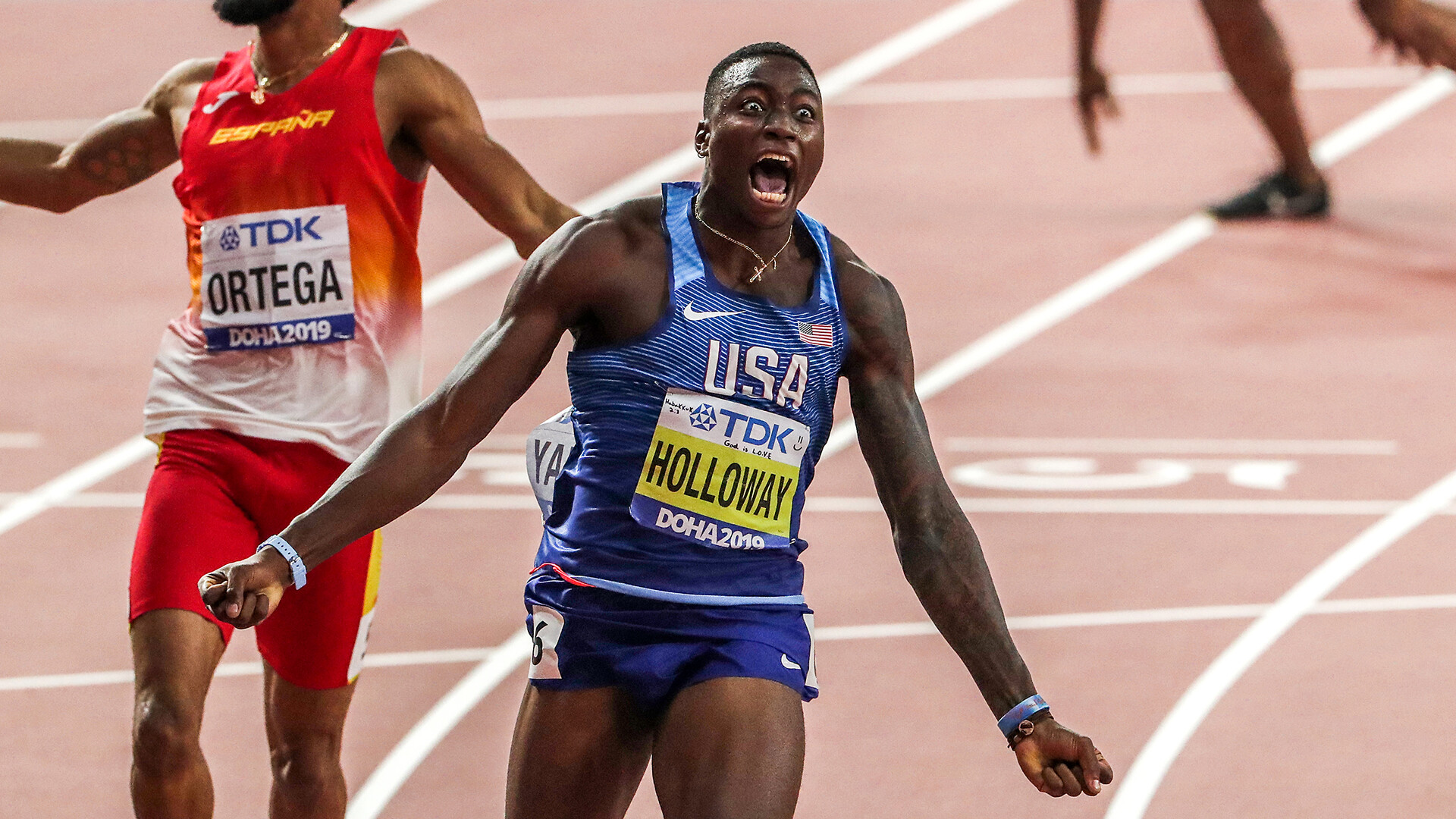
US team for Glasgow
Women

60m: Celera Barnes, Mikiah Brisco, Aleia Hobbs
400m: Talitha Diggs, Alexis Holmes
800m: Addison Wiley, Allie Wilson
1500: Nikki Hiltz, Emily Mackay
3000m: Josette Andrews, Elle St Pierre
60m hurdles: Christina Clemons, Masai Russell
High jump: Vashti Cunningham
Pole vault: Katie Moon, Sandi Morris
Long jump: Tara Davis-Woodhall, Monae' Nichols
Triple jump: Jasmine Moore, Keturah Orji
Shot put: Maggie Ewen, Chase Jackson
Pentathlon: Chari Hawkins
4x400m: Quanera Hayes, Bailey Lear, Na'Asha Robinson, Maya Singletary, Jessica Wright
Men
60m: Christian Coleman, Noah Lyles
400m: Brian Faust, Jacory Patterson
800m: Isaiah Harris, Bryce Hoppel
1500m: Cole Hocker, Hobbs Kessler
300m: Olin Hacker, Yared Nuguse
60m hurdles: Trey Cunningham, Grant Holloway, Cameron Murray
High jump: Shelby McEwen, Vernon Turner
Pole vault: Sam Kendricks, Chris Nilsen
Long jump: Jarrion Lawson, Will Williams
Triple jump: Chris Benard, Donald Scott
Shot put: Ryan Crouser, Roger Steen
Heptathlon: Harrison Williams
4x400m: Chris Bailey, Trevor Bassitt, Matthew Boling, Paul Dedewo, Wil London
(02/23/2024) ⚡AMPby World Athletics
World Athletics Indoor Championships
World-Class Competition Lands in China: 2025 World Athletics Championships The global spotlight shines on China as it hosts the 2025 World Athletics Championships, bringing together the planet’s most elite runners, jumpers, and throwers. This prestigious event, organized by World Athletics, represents the pinnacle of track and field competition—where national pride, personal records, and world titles are on the line. ...
more...Ednah Kiplagat confirms next race as she chases more history
Forty-four-year-old Edna Kiplagat has opened up on where she will compete next, giving the impression that she is not hanging her spikes anytime soon.
More than 25,000 runners have confirmed participation at the New York City Half Marathon scheduled for Sunday, March 17 from Brooklyn to Manhattan, finishing in Central Park.
One of the headliners in the women’s field is 44-year-old Kenyan runner Edna Kiplagat who will be using the race as part of her preparations for the Boston Marathon.
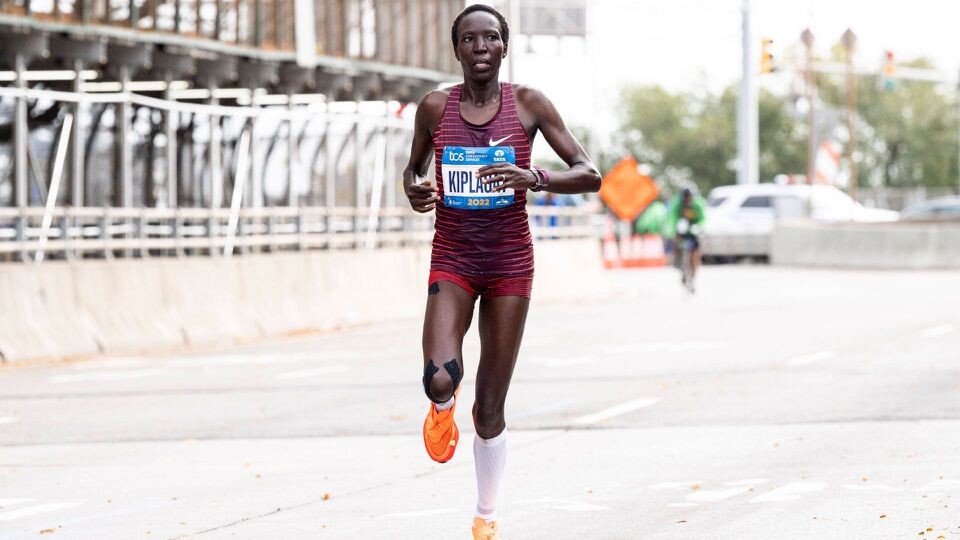
Kiplagat is one of the most successful long-distance runners and from her records, she is a two-time Boston Marathon champion and former London and New York City Marathon champion.
Kiplagat will be up against compatriots Gladys Chepkurui, the reigning Tokyo Half Marathon champion, and Cynthia Limo, a World Athletics Championships half-marathon medalist. The duo has the two fastest times in the women's open division.
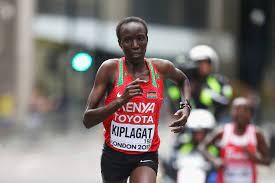
Two-time US Olympian and 2018 Boston Marathon champion Desiree Linden will return as the top American finisher from last year's race, having recently finished 11th at the US Olympic Marathon Trials.
Olympic and World Championships medalist Emily Simpson will make her United Airlines NYC Half debut but she is no stranger to NYRR races as an eight-time winner of the New Balance 5th Avenue Mile.
Lindsay Flanagan and Annie Frisbie, both of whom finished in the top 10 at the 2024 US Olympic Marathon Trials, will also be ones to watch.
Ethiopia's Kenenisa Bekele, a four-time Olympic medalist, 16-time world champion, and the third-fastest marathoner in history, will challenge the Kenyan charge in the men’s race. He will be competing in the streets of New York for the second time after finishing sixth at the 2021 TCS New York City Marathon.
The Kenyan charge will be led by, Abel Kipchumba, the reigning champion of the B.A.A. Boston Half Marathon who owns one of the top 10 half-marathon times in history.
Morocco's Zouhair Talbi will return to the event after taking third in his United Airlines NYC Half debut last year, which he called "the race of his life."
Since then, he finished fifth at the Boston Marathon and broke the Houston Marathon course record in January.
Tanzanian Olympian and marathon record-holder Gabriel Geay, who was the runner-up at last year's Boston Marathon, will race the United Airlines NYC Half for the first time.
An American contender to watch will be Hillary Bor, a two-time U.S. Olympian and five-time national champion who will be making his half-marathon debut.
(02/23/2024) ⚡AMPby Abigael Wuafula
United Airlines NYC Half-Marathon
The United Airlines NYC Half takes runners from around the city and the globe on a 13.1-mile tour of NYC. Led by a talent-packed roster of American and international elites, runners will stop traffic in the Big Apple this March! Runners will begin their journey on Prospect Park’s Center Drive before taking the race onto Brooklyn’s streets. For the third...
more...Kwemoi targets elusive Napoli Half Marathon title this weekend
Beijing Half Marathon champion Brian Kwemoi leads Kenyans in their quest for the Napoli Half Marathon title this Sunday.
The last time a Kenyan triumphed in Naples was in 2022 when Chepkirui Gladys clocked 1:08:09 to win the women's title.
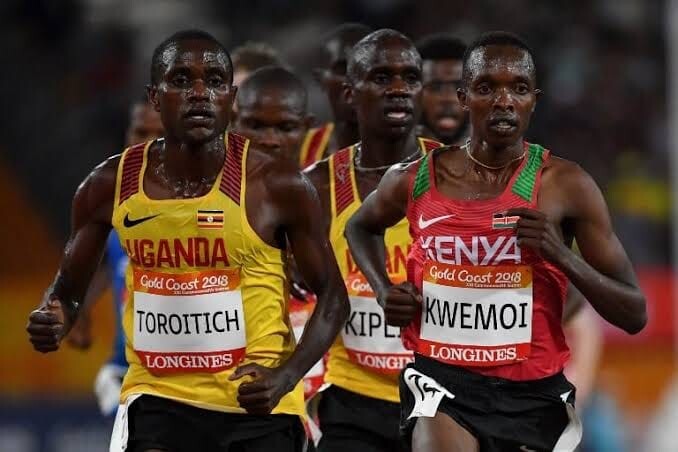
Belet Kiplangat placed second (59:26) behind Italy's Crippa Yemaneberhan who clinched the title in 59:26.
In last year's edition, Edris Muktra (1:00:27) of Ethiopia and Mach Angelika (1:12:34) of Poland won the men's and women's titles.

Kwemoi, who secured the Beijing Half Marathon title in April 2023 with a course-record time of 59:37, will be joined by Vila de Santa Pola, Spain, half marathon champion Bernard Biwott.
Biwott also placed third in the Cardiff Half Marathon in October 2023, clocking 1:00:51.
Also in the mix is Moses Koech, the 2014 Nanjing Youth Olympics silver medalist in the 3,000m. He was also a 5,000m silver medalist at the 2015 Barcelona Regional Championships in 13:15.56.
Koech placed second in the Loop Den Haag Half Marathon in the Netherlands in March 2023, with a time of 1:00:55. The trio will face stiff competition from Ethiopia's Mosinet Geremew who was the 2022 world marathon silver medallist.
Geremew is a silver medalist in the 2019 London Marathon, finishing behind two-time Olympic champion Eliud Kipchoge in 2:02:55.
On the women's side, 2021 Amsterdam Marathon champion Angela Tanui will lead the charge.
Tanui clocked 2:17:57 to win the title in the Netherlands. She will be joined by Nancy Jepleting, the Porto (Portugal) half marathon silver medalist.
The duo will face tough competition from Ethiopia's Anchinalu Dessie, a bronze medallist in the 2023 Milano Half Marathon, and Italy's Sofiia Yaremchuk, the 2021 Venezia Marathon champion.
(02/22/2024) ⚡AMPby Teddy Mulei
Napoli City Half Marathon
The Napoli City Half Marathon is the most growing running event in Italy. The race, certified by IAAF / AIMS/ European Athletics, is held inoptimal conditions with an average temperature of 10 ° C. From thewaterfront to the Castel dell'Ovo, the Teatro San Carlo to the Piazzadel Plebiscito, the course will lead you through the most fascinatingareas of the city,...
more...Susan Chembai is aiming for victory and a course record at the NN CPC Loop Den Haag
Susan Chembai is aiming for victory and a course record during the 48th NN CPC Run, current national half marathon champion, is also at the start. It was previously announced that Abdi Nageeye will launch an attack on his own Dutch record half marathon .
Susan ChembaiSusan Chembai is the big favorite among the women during the 48th NN CPC Run on Sunday, March 10. The 24-year-old Kenyan wants to give her performance at the NN Half Marathon extra shine with a course record. The fastest time ever run by an athlete in the royal city has been in the name of Lornah Kiplagat since 2000. The Dutch triumphed at the time in 1.06.56.
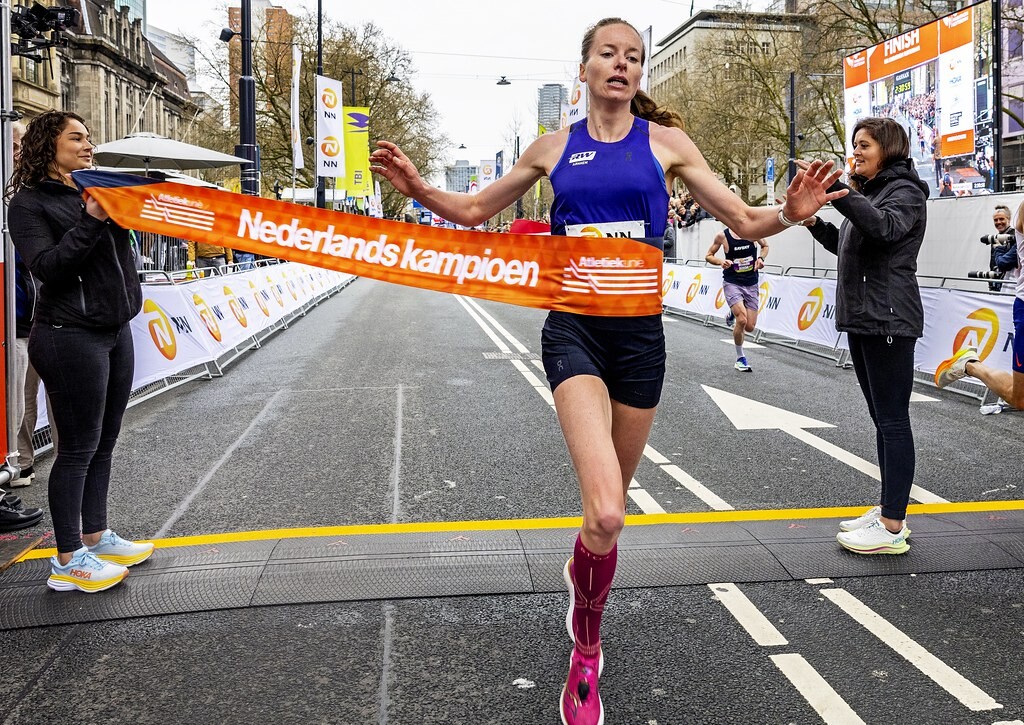
Chembai is a promising athlete who makes great progress every year. She improved her personal best in the half marathon from 1.13.22 (2021, Verona) via 1.11.34 (2022, Lisbon) to 1.09.26 (2023, Copenhagen). She wants to surpass herself again on the attractive and fast course of the NN CPC Run The Hague. Last year she also stood out with a PR of 52.48 during the CZ Tilburg Ten Miles.
Katharina SteinruckAnother eye-catching appearance in the field of participants is Katharina Steinruck. The 34-year-old athlete won gold with the German women's marathon team during the 2022 European Athletics Championships in Munich. In the same year she set her PR in the half marathon in Berlin: 1.09.38. Steinruck is the daughter of Katrin Dörre, an athlete with an impressive list of honors. Dörre ran more than forty marathons and finished first in Osaka (4x), London (3x), Tokyo (3x), Frankfurt (3x), Berlin, Hamburg and Enschede. The (East) German won the bronze medal at the Seoul Olympics (1988) and at the Tokyo World Championships (1991).Katharina Steinruck is getting closer to her mother's personal top times. In the half marathon: 1.09.38 versus 1.09.15. In the marathon: 2:24:56 versus 2:24:35. Katrin Dörre, now 62 and national coach, ran her last marathon in 1999. Striking detail: mother and daughter both won the Enschede marathon during their careers.

Anne LuijtenAnne Luijten (29) is a Dutch star who has already met the marathon limit for the Paris Olympic Games with 2.26.36. That part is on the program in the French capital on Sunday, August 11 at eight o'clock in the morning. Luijten, born in Rijswijk, is the reigning Dutch champion in the half and full marathon. Last year she set a personal record of 1.12.12 at the CPC Loop The Hague. The women's race was then won impressively by Nienke Brinkman (1.07.44).
MenWilbert Lek, organizer of the CPC Run The Hague: "Once again we can speak of an interesting field of participants among women. We count on just as exciting a race as last year, when Nienke Brinkman won with a strong personal record. Following in the footsteps of the top athletes, many recreational participants will again pursue their personal goals, because the 'CPC' is the inspiring running event for everyone. We will soon provide more information about the men.”
Running partyThe CPC Run is the largest running party in the residence and attracts more than 30,000 participants every year in an unprecedentedly atmospheric atmosphere. In addition to being a top sporting event, it is a fun and sporty 'outing' for the whole family. With distances up to and including the half marathon, the event is known as a spring classic. The event is almost completely sold out, there are only starting tickets available for the 10 KM Run.
All distances start and finish at the Malieveld. The courses run through the crowd-filled streets of The Hague. The main part, the Half Marathon, goes from the city to the iconic Pier in Scheveningen and then finishes back in the city.
(02/22/2024) ⚡AMPNN CPC Loop Den Haag
The City-Pier-City Half Marathon (NN CPC Loop Den Haag) was first held in 1975 and featured a 14.5km course. This was extended to the half marathon distance the following year. The competition has been used as the Dutch half marathon championships on a number of occasions. The course is a relatively flat one, which lends itself to fast times for...
more...London Marathon to award equal prize money to wheelchair and able-bodied racers
Wheelchair racers at this year’s TCS London Marathon will compete for the same prize money as able-bodied athletes.
In a significant step for disability sports, the annual event will become the first marathon in the world to offer all entrants parity, meaning the winners of each of the elite races will receive $55,000 (£43,410), with the runner-up taking $30,000 (£23,678) and third-place $22,500 (£17,758).
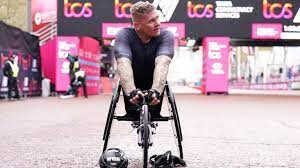
The move comes after organisers increased the prize pot for wheelchair participants by $54,500 (£43,018) to $308,000 (£243,111), the same as that on offer to non-disabled athletes.
Event director Hugh Brasher said: “We are proud of our history in championing participants with disabilities, from introducing our first wheelchair race in 1983 to hosting the IPC World Championships on multiple occasions and providing a pathway from the Mini London Marathon to the London Marathon and beyond for Paralympic legends such as David Weir.

“We are delighted to continue our commitment to disability sport with this landmark move that ensures the prize money available to our elite wheelchair athletes is exactly the same as for those in the non-disabled elite races.
“We have made great strides in recent years towards our ambition to make the TCS London Marathon the most diverse and equitable marathon in the world and this is another important step towards achieving that goal.”
Eight-time winner Weir will take part in his 25th consecutive London Marathon, where he will go head-to-head with Switzerland’s world number one Marcel Hug.
Weir said: “It’s a very exciting year for me and for wheelchair racing. Again London Marathon has set the bar for parity across the racing divisions.
“This is a huge benchmark for disability sport and I hope other races and sporting bodies can take note.”
Reigning women’s wheelchair champion Madison de Rozario also welcomed the decision and its wider implications for para sport and society in general.
Australia’s De Rozario said: “We often say that sport is a mirror to society, but it can also be the starting point for much larger change, and that’s what the TCS London Marathon is doing here.
“This decision doesn’t just affect the athletes lining up in London in April, it has an overflow effect to not just how every other event values athletes with a disability, but how we view the 15 per cent of the global population living with disability.
“Sport has an enormous responsibility to community and the TCS London Marathon is at the forefront of doing that justice. It is setting an entirely new standard and I can’t wait to see what that means for para sport going forward.
“Knowing that a generation of wheelchair racers are going to get to come into a sport and never question their value or their place is beautiful.”
(02/22/2024) ⚡AMPTCS London Marathon
The London Marathon was first run on March 29, 1981 and has been held in the spring of every year since 2010. It is sponsored by Virgin Money and was founded by the former Olympic champion and journalist Chris Brasher and Welsh athlete John Disley. It is organized by Hugh Brasher (son of Chris) as Race Director and Nick Bitel...
more...Garcia on Spanish team to defend world indoor title in Glasgow
Mariano Garcia forms part of the Spanish team for the World Athletics Indoor Championships Glasgow 24 and will defend his 800m title at the event that takes place from March 1-3.
The 26-year-old claimed his first global title in Belgrade two years ago and went on to win European 800m gold that year in Munich.
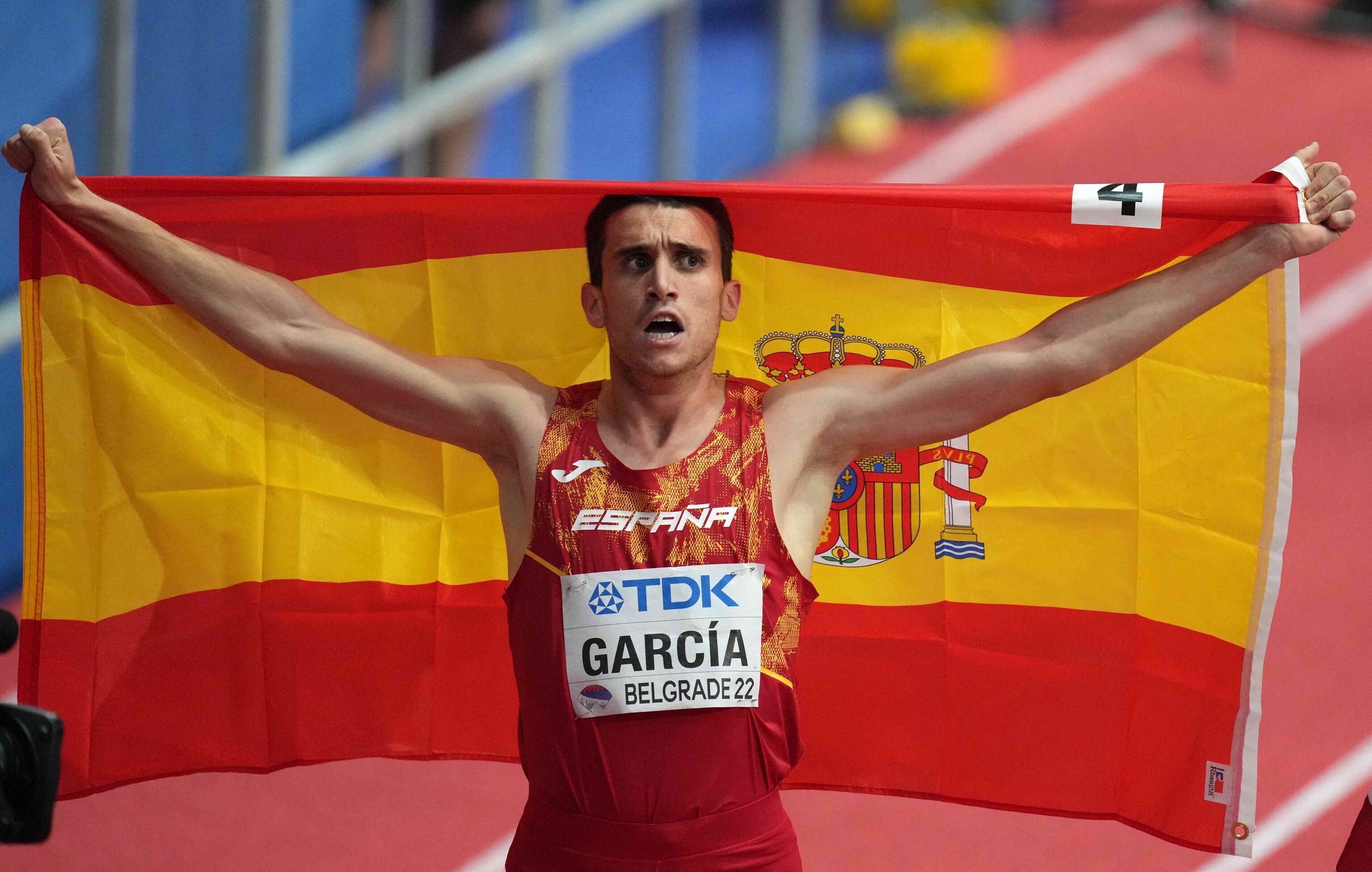
In Glasgow, Garcia will be joined in the men’s 800m by teammate Mohamed Attaoui.
Maria Vicente heads to Glasgow in the form of her life, having scored a world-leading national record of 4728 points in the pentathlon in Aubiere in January.

National mile record-holder Marta Perez and national champion Esther Guerrero are both entered for the women’s 1500m.
After winning three medals at the European Indoor Championships between 2017 and 2023 and finishing fifth at the 2018 World Indoor Championships in the 3000m, Adel Mechaal will contest the 1500m in Glasgow. He will be joined in that event by two-time world finalist Mario Garcia.
Asier Martinez will look to build on his fourth-place finish in Belgrade in the 60m hurdles.
The full team will be confirmed once world rankings places have been finalised.
Spanish team for Glasgow
Women
60m: Jael Bestue
1500m: Esther Guerrero, Marta Perez
60m hurdles: Xenia Benach
Pentathlon: Maria Vicente
Men
800m: Mohamed Attaoui, Mariano Garcia
1500m: Mario Garcia, Adel Mechaal
60m hurdles: Enrique Llopis, Asier Martinez
(02/22/2024) ⚡AMPby World Athletics
World Athletics Indoor Championships
World-Class Competition Lands in China: 2025 World Athletics Championships The global spotlight shines on China as it hosts the 2025 World Athletics Championships, bringing together the planet’s most elite runners, jumpers, and throwers. This prestigious event, organized by World Athletics, represents the pinnacle of track and field competition—where national pride, personal records, and world titles are on the line. ...
more...RAS AL KHAIMAH HALF MARATHON IS ON SATURDAY AND IT SHOUlD BE A FAST ONE
New regime, new course, but with Olympic and world champions and the usual array of speedsters, Saturday’s Ras Al Khaimah Half Marathon is virtually assured of the sort of fast times that have been a feature of the event throughout its 17 year history, including three women’s world records.
Pride of place both on the start list and at this morning’s press conference in one of the smaller emirates in the UAE were Olympic marathon and three time world half-marathon champion, Peres Jepchirchir of Kenya, and keeping the balance in the long-term East African distance running rivalry, world marathon champion Tamirat Tola of Ethiopia heads the men’s entry. The wild card, hoping to gatecrash the party is Konstanze Klosterhalfen of Germany, who surprised the East Africans when she beat a dozen of them to win her debut half-marathon in Valencia in 2022.
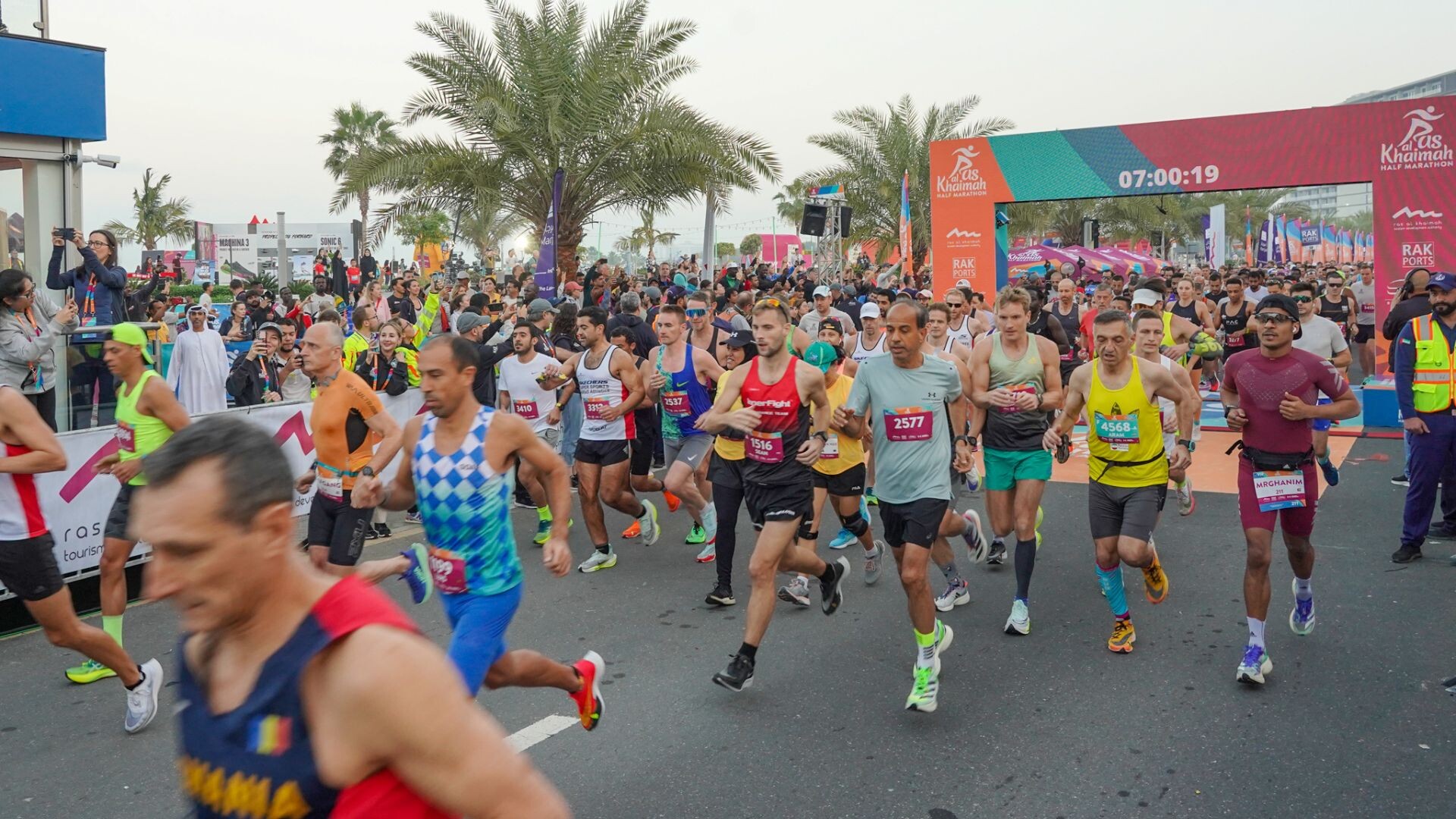
Jepchirchir may neither be the fastest marathoner or half-marathoner among current women long distance runners, but she knows how to win races, an asset far more valuable than fast times. In the seven months between late August 2021 and mid-April 2022, she won the Olympic, New York and Boston Marathons, a rare collective achievement. In her comeback marathon following an injury, she finished third in last year’s London Marathon. And she has won 12 of her 16 half-marathons. She is loath to admit her plans yet, but this RAK ‘half’ is perfectly scheduled as a springboard, to going back to London in April, to upgrade that third place.
Tola was similarly annoyed that an injury preventing him successfully defending his 2022 world marathon title in Budapest last summer, but a speedy recovery saw him break the long-standing New York Marathon record with 2.04.58 three months later. He is one of the few elites to be making his debut in the RAK ‘half’ and the scale of his task may be judged by the fact that on paper there are 15 men faster than his best of 59.37 set seven years ago in Prague. But he suggested that is due for drastic revision. ‘I’d like to think I can do under 59 minutes if the race turns out to be fast,’ he said at the press conference. Fastest man in the field is Daniel Mateiko of Kenya with 58.26, but his colleague Benard(sic) Kibet has the advantage of having won last year in 58.45.
Klosterhalfen, ‘Koko’ to her pals may prove to be not only the wild card, but the joker in the pack in the women’s race. A world bronze medallist on the track and European 5000 metres champion, the German called a halt to her summer season last year when a foot injury caused her to reassess her career. She had changed her shoe sponsor, left her coach and long-term training venue in the USA already. She then switched again and has teamed up with Gary Lough, latter-day coach to Mo Farah and spouse of former world record holder Paula Radcliffe (here in RAK as a TV commentator). Klosterhalfen has also switched her altitude training venue to Addis Ababa, where she has just spent six weeks, coming directly to here. ‘Road running is still a bit of an adventure for me’, she said this morning. ‘I still want to run on the track, but I want to more road races’.
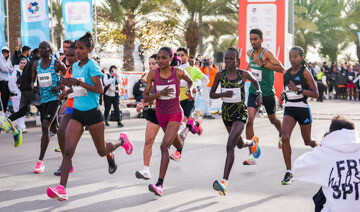
The roll-call of winners since the race began in 2007 is a ‘Who’s Who’ of distance running over the last two decades; beginning with Sammy Wanjiru and Berhane Adere in the inaugural race, via luminaries such as Patrick Makau, Geoffrey Mutai, Elvan Abeylegesse, Mary Keitany, Geoffrey Kamworor, Lelisa Desisa, Samson Kandie and Hellen Obiri. Add to that Jepchirchir herself who won in 2017 in a then world record of 65min 06sec.
The promoters of the successful marathon down the road in Dubai have been invited this year to give the RAK ‘half’ a makeover, and they began by introducing a 10k race for locals and altering the half-marathon course. ‘It’s faster and better than any route before here in Ras Al Khaimah; we’ve cut out some of the sharp turns,’ said race director Peter Connerton, ‘so we’re hoping for at least similar times and hopefully better. But with a couple of good races into the bargain’.
ELITE CONTENDERS
MEN
Daniel MateikoKEN58:26
Kennedy KimutaiKEN58:28
Seifu TuraETH58:36
Amdework Walelegn ETH 58:40
Benard Kibet KoechKEN58:45
Alex Korio KEN 58:51
Birhanu Legese ETH 58:59
Haftu Teklu ETH 59:06
Tamirat TolaETH59:37
WOMEN
Ababel YeshanehETH64:31
Margaret KipkemboiKEN64:46
Peres JepchirchirKEN65:06
Catherine Amanang’ole KEN 65:39
Konstanze KlosterhalfenGER65:41
Tsigie Gebreselama ETH65:46
Evaline ChirchirKEN66:01
Vivian Kiplagat KEN 66:07
Yalemget YaregalETH66:27
(02/22/2024) ⚡AMPRak Half Marathon
The Rak Al Khaimah Half Marathon is the 'world's fastest half marathon' because if you take the top 10 fastest times recorded in RAK for men (and the same for women) and find the average (for each) and then do the same with the top ten fastest recorded times across all races (you can reference the IAAF for this), the...
more...Five ways to overcome any excuse not to run
We all have days, weeks or even months of low motivation, when even setting out running gear the night before isn’t enough to get us out the door. Cue these strategies to overcome any excuse and make running a simple, fun activity instead of something you are dreading. Check out these six game-changing methods that will help you kick excuses to the curb and embrace the runner’s high.
Incentivize yourself while you run
Plan to reward yourself with something you’re eagerly anticipating while you’re running (instead of afterward). A mega-study with 60,000 participants found that simple incentives, like a free audiobook, helped make hitting the gym a highlight of participants’ days. The idea is based on giving participants something to look forward to while exercising, and could be shifted to watching a favourite show on the treadmill, or listening to a new album you’ve been holding off checking out.
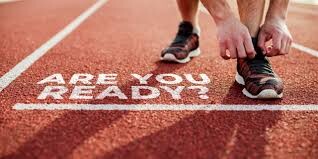
1.- Make running a non-negotiable
The number one excuse that researchers hear from people who fail to fit in exercise is lack of time. Don’t squeeze in exercise; give it a VIP spot in your life. Brad Stulberg, performance coach and author of The Practice of Groundedness, suggests treating exercise like an essential part of your job. It really shouldn’t be optional—and the benefits will pay off in all aspects of your life as it boosts focus, helps you stay calm and improves energy.
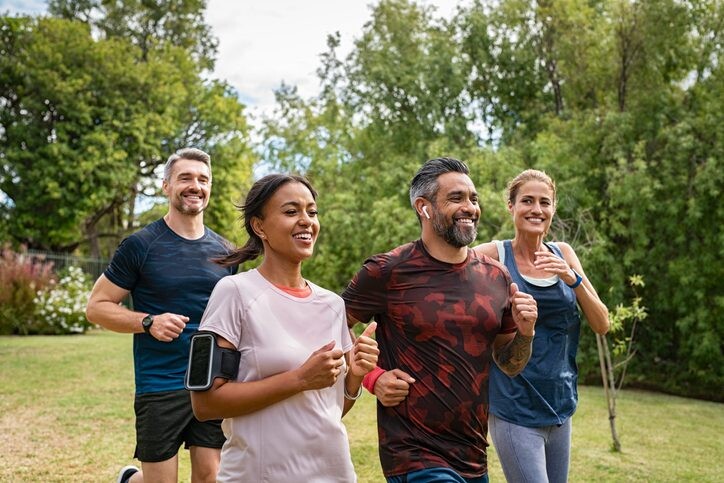
2.- Stop thinking about it as exercise
If just thinking about fitting in your daily workout makes you yawn, try making your run a play date instead. In an article in The New York Times, psychologist Crystal Steltenpohl, an expert in exercise motivation, recommended turning exercise into something that feels more like hanging out with friends than a workout. Plan to catch up with a good pal as you log a few miles, or turn your regular run into a scenic tour of some local landmarks—just make it something you can look forward to, rather than a chore you’re dreading.
3.- Embrace flexibility
Feel like you need to have a rigid schedule for running? Incorporating some flexibility will help you hit your targets. A study by behavioural change scientist Katy Milkman found that maintaining flexibility in meeting your exercise goals increases your chance of success. Give yourself the freedom to choose when to lace up, and watch your commitment soar. Whether you’re a morning runner or prefer to hit the treadmill at midnight, find the rhythm that works for you, and don’t be afraid to switch it up when life throws a scheduling curveball at you. The key is flexibility, not rigidity.
4.- Set the stage for success
Where you exercise matters, and whenever possible you should tweak your environment to be as welcoming as possible. Steltenpohl suggests finding or creating an inviting space for physical activity. Choose a treadmill at a gym where you feel comfortable, a park where you feel close to nature, or just a cosy corner at home. Preparation matters (putting those clothes out the night before truly does help) so select your outfit, prep your playlist and set the ambiance.
5.- Anticipate the afterglow
Feel stressed or tired? That’s the perfect time to lace up those sneakers. As Stulberg says: “You don’t need to feel good to get going; you need to get going to feel good.” Exercise is a mood-booster. Embrace the anticipation of post-exercise euphoria, and running becomes a delightful journey instead of a daunting task.
(02/21/2024) ⚡AMPby Keeley Milne
Kenyan-born American runner seeking redemption at Tokyo Marathon after US Olympic trials heartbreak
Kenyan-born American runner Betsy Saina is seeking a comeback at the Tokyo Marathon after missing out on the US Olympic marathon trials.
Kenyan-born American runner Betsy Saina will seek redemption at the Tokyo Marathon after a heartbreaking run at the US Olympic Marathon trials.
Saina exuded confidence ahead of the Olympic trials in Orlando but unfortunately failed to finish the race after the hype surrounding her. She now heads to the Tokyo Marathon on Sunday, March 3 where she hopes to bounce back to winning ways.
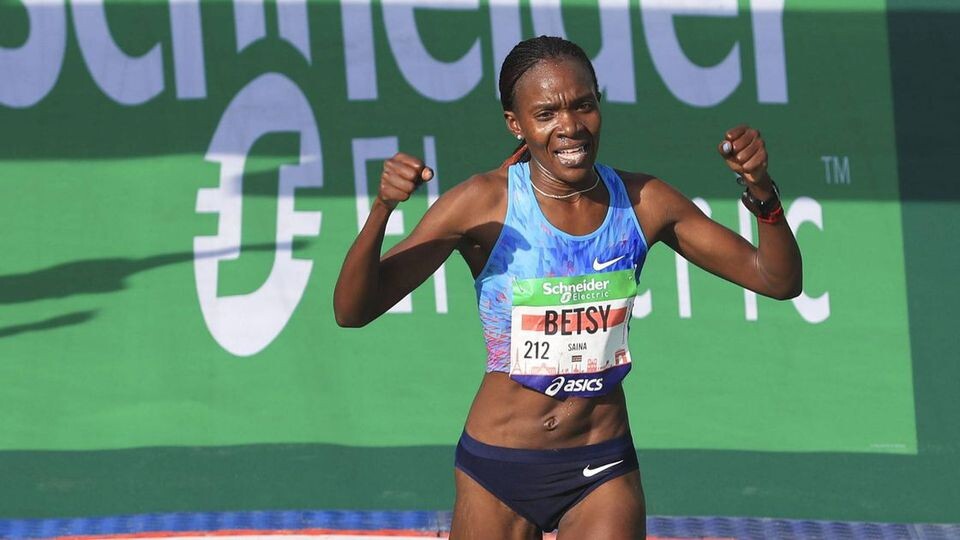
Follow the Pulse Sports Kenya WhatsApp Channel for more news.
Two days ahead of the marathon trials, Saina had opened up on how her son motivates her to do better and she was optimistic of representing the US at the Olympic Games.
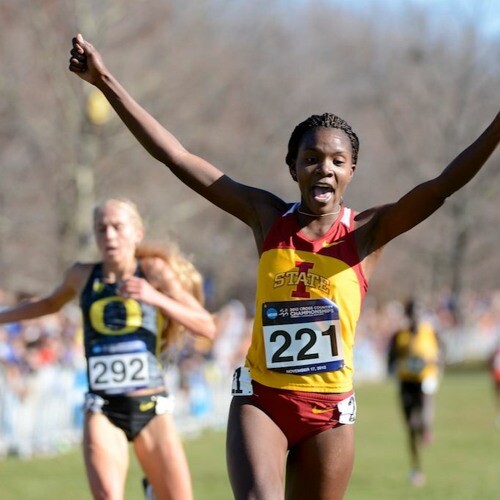
In a post on her Instagram, she said: “My little man has taught me to be resilient and brave. Everything I do he is the priority before anything else comes.
On Saturday I will be running for him, He has changed my life in many ways, I am the happiest woman in the world.”
She has now put the setback behind her and is looking forward to bouncing back at the Tokyo Marathon where she will be up against some of the greatest marathoners.
Defending champion Rosemary Wanjiru will be returning with the hope of bagging another title. During last year’s edition of the race, Wanjiru destroyed a strong field to claim the top prize, cutting the tape in 2:16:28. She enjoyed her 2023 season and will be looking to continue the hot streak to 2024.
Wanjiru also represented Kenya at the World Championships in Budapest, Hungary where she finished sixth in the marathon.
2023 London Marathon champion Sifan Hassan will also be in the mix, hoping to notch up her third marathon victory since her debut in London last year. The Dutch woman has proven what she can do both on the track and the full marathon.
Hassan made her full marathon debut at the London Marathon and won most dramatically. She clocked 2:18:33 to beat marathon experts including Peres Jepchirchir, the reigning Olympic marathon champion.
She extended her winning streak to the Chicago Marathon where she stunned defending champion Ruth Chepng’etich to second place.
Hassan will be eyeing the Olympic Games and the Toyo Marathon is a better place for her to build up for the event.
Kenyan-born Israeli Lonah Salpeter has also been invited and she will be out to challenge the double Olympic champion and Wanjiru for the top prize. The Ethiopian charge will be led by Sutume Kebede and Tigist Abayechew who will be out to reclaim the title they lost to Kenya last year.
Magdalena Shauri of Tanzania will also be hoping to continue soaring high after her dominant exploits in Berlin last year where she finished third.
(02/21/2024) ⚡AMPby Abigael Wuafula
Tokyo Marathon
The Tokyo Marathon is a world-renowned annual marathon held in Tokyo, Japan. As one of the prestigious Abbott World Marathon Majors, it attracts elite and amateur runners from around the globe. The race holds World Athletics Platinum Label status, recognizing its high competitive standards, top-tier organization, and international appeal. Sponsored by Tokyo Metro, the Tokyo Marathon has grown into one...
more...Swoboda's sights set on medal glory in Glasgow
Sprinter Ewa Swoboda is bang on target for her first global senior medal at the World Athletics Indoor Championships Glasgow 24 next month. And the Pole, No.2 in the world this year over 60m, is sure to be well supported at the Scottish venue on March 1-3.
Not only is it the same arena in which she won European Indoor Championships 60m gold in 2019, but she also has strong family ties nearby.
“It’s a big event for me,” she says. “I want to win a medal and a PB.
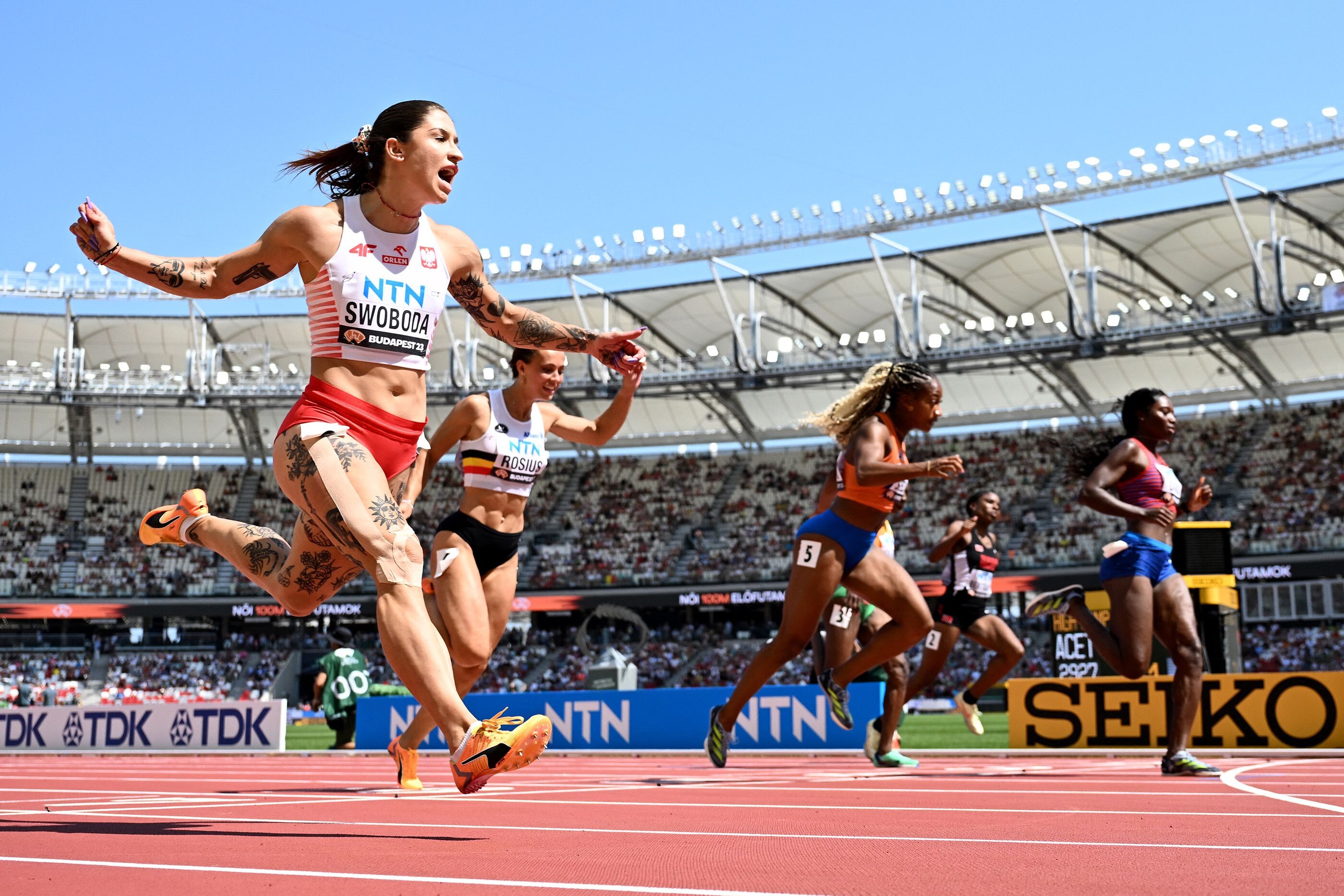
“I like Glasgow. It’s also close to where my brother lives in Edinburgh.”
Swoboda opened her year in searing style, winning at the World Athletics Indoor Tour Bronze event in Lodz and then at World Indoor Tour Gold events in Ostrava and Torun. At the latter, she clocked a then world lead of 7.01, her best time for two years. Only Julien Alfred, with the 6.99 she ran in New York, has gone faster so far this year. That 6.99 matches Swoboda's PB, set in Torun in 2022.

Speed has always been a feature in the life of the Zory-born runner, who also takes an interest in fast cars. Recalling her school days, Swoboda says: “I (was) faster than the boys too and my teacher looked at me and she told my parents, ‘She must go to training.’ And here I am, since 2009.”
Her first major competition saw her finish fourth in the 2013 World U20 Championships in Donetsk, Ukraine, aged 16. She then placed fifth at the same event in 2014 in Eugene, USA, and became European U20 champion in Eskilstuna, Sweden, in 2015.
Then, at the 2016 Bydgoszcz World U20 Championships, she thrilled the home crowd by winning 100m silver. She went on to represent her country at the Rio Olympic Games, where she reached the semifinals.
Now, 26, she is asserting herself on the world stage. She was fourth at the 2022 World Indoor Championships in Belgrade and last year she reached her first World Athletics Championships final, placing sixth over 100m.
It followed an unfortunate career blip, which meant she missed the opportunity to defend her 60m title at the 2021 Torun European Indoor Championships in her home country due to Covid-19 and then the Tokyo Olympics through injury.
Now, as well as enjoying her current success on the track, Swoboda embraces being an extrovert figure in the sport. Her heavily tattooed body, painted nails and playful personality have won her a legion of fans at home and overseas.
“I am not playing any role,” she says “I am just Ewa. I am open, I don’t have a problem smiling! It’s important. I like what I do, and I am happy.”
She also welcomes being part of the current era of the women’s 100m and its colourful crop of champions, particularly world champion Sha’Carri Richardson.
“I love to run with Sha’Carri,” smiles Swoboda. “Sha’Carri is a gorgeous girl, and her energy is welcome and it’s nice to be a part of this little family.”
This year promises to be a huge one for Swoboda, with the World Indoor Championships, European Athletics Championships and the Olympic Games all in her plans: “First Glasgow, then Rome and Paris!”
As for whether, there will be more body art this year, she says: “Not now. Maybe when I win something? Maybe after (the) indoors, some more tattoos.
“I like this, it’s my hobby,” she adds, putting precious metal above tattoos as her favoured decoration for now.
(02/21/2024) ⚡AMPby World Athletics
World Athletics Indoor Championships
World-Class Competition Lands in China: 2025 World Athletics Championships The global spotlight shines on China as it hosts the 2025 World Athletics Championships, bringing together the planet’s most elite runners, jumpers, and throwers. This prestigious event, organized by World Athletics, represents the pinnacle of track and field competition—where national pride, personal records, and world titles are on the line. ...
more...How change of shoes helped youngster Letsile Tebogo smash world record
Letsile Tebogo ran faster than Michael Johnson and Usain Bolt to set a new world 300m record but that would perhaps not have happened had he not changed his running shoes.
Botswana sprint sensation Letsile Tebogo is currently basking in the glory of his new world record after lowering the 300m mark last weekend.
Tebogo smashed the world 300m record following an incredible run at the Simbine Curro Classic in South Africa, running 30.71, to beat South African Wayde van Niekerk's mark of 30.81 set in Ostrava, Czech Republic in 2017.

In what was a world lead and his personal best over the distance, the 20-year-old obliterated the field to take a giant lead, leaving a big gape between him and the chasing pack as he sprinted to the finish line.
It has now emerged that things would have perhaps been different had he not opted for a change of shoes, having decided to ditch his trainers for spikes ahead of the race.
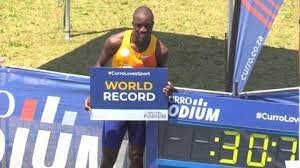
Since sustaining an injury that locked him out of the Zurich Diamond League 200m finals, Tebogo has not used spikes and wore trainers in his season-opening race in January, but his coach Dose Mosimanyane advised him to use spikes in last Saturday’s race in Pretoria only to yield a world record.
“The world record was not in the plan. But I am not surprised. With his training partner, Bayapo Ndori and other athletes in the mix, I knew he would do something but this is not what we came here for,” Mosimanyane said.
The world 100m silver medallist did not just break the seven-year world record but his time was faster than that of American great Michael Johnson, who clocked 30.85 at the same venue in 2000, and Jamaican sprint legend Usain Bolt, who timed 30.97 in 2010.
The world 200m bronze medallist had an impressive 2023 season when he became the first African to win a medal at the World Championships in 100m and also the first from his country to achieve such a feat.
He is hoping to go one better this during the Paris 2024 Games in France where he is seeking to make history by winning his country’s first ever Olympics gold.
(02/21/2024) ⚡AMPby Joel Omotto
Dina Asher-Smith, Katarina Johnson-Thompson opt out of World Indoor Championships to focus on Olympics
Dina Asher-Smith and Katarina Johnson-Thompson are among a group of Team GB athletes who have opted out of competing in the World Indoor Championships to focus on their preparations for the Olympics.
Other athletes who have chosen not to compete include Zharnel Hughes and Keely Hodgkinson as they focus on the summer.
That leaves Josh Kerr and Laura Muir to top the bill in Great Britain's squad for the World Indoor Championships.

World 1500m champion Kerr will race in the 3000m in Glasgow next month as he kicks off his own preparations for the Olympics in Paris this summer.
Fellow Scot Muir, who won 1500m silver at the Tokyo Games, will also run in the 3000m at the championships which run from March 1-3.

Mbappe to join Real in 'most expensive free transfer in history'
Transfer Centre LIVE! Brighton recruitment chief accepts Chelsea offer
How Odegaard's change of role has helped unleash Arsenal
Klopp confirms Jota set for 'months' out of action
Why PL is still favourite for extra CL spot
Qatar Open LIVE! Murray closing in on first win of 2024
Everton points deduction appeal: What's going on?
Mic'd Up: Why Newcastle were awarded penalty despite Schar offside
Crucial F1 testing ahead as rivals seek first clues in Red Bull chase
The Rashford-Barkley press which has gone viral
Molly Caudery (pole vault), Morgan Lake (high jump) and Jemma Reekie (800m) are also included in the squad.
Paula Dunn, Olympic head coach, said: "We are pleased to be announcing such a strong team and I am looking forward to seeing how the team perform on the world stage.
"We had a thrilling National Championships where athletes secured their places for the team in Scotland and it was fantastic to see a number of athletes stepping up when it counted.
"This is a really exciting squad that includes global medallists as well as athletes who will be hoping to make an impact on the world stage for the first time.
"Once World Athletics have finalised the final road to Glasgow rankings later this week, those athletes who have the required ranking and have met the UKA requirements outlined in the selection policy will be announced and we look forward to confirming our home championship team for next month."
(02/20/2024) ⚡AMPWorld Athletics Indoor Championships
World-Class Competition Lands in China: 2025 World Athletics Championships The global spotlight shines on China as it hosts the 2025 World Athletics Championships, bringing together the planet’s most elite runners, jumpers, and throwers. This prestigious event, organized by World Athletics, represents the pinnacle of track and field competition—where national pride, personal records, and world titles are on the line. ...
more...Koech eyes course record in Haspa Marathon title defence
Haspa Marathon Hamburg champion Benard Koech believes he has what it takes to defend his title during the 38th edition of the event on April 28.
Koech, 36, said he is also keen on lowering the 2:04:09 course record he set last year. It is also his personal best time while he has a best time of 59:10 over 21km.
Around 26,000 runners will parade on the streets of Hamburg, featuring both fun runners and elite athletes.

Koech said: “I am looking forward to another impressive performance in the city of Hamburg. I have prepared adequately for the race and I’m confident I have what it takes to set a new course record.”
“Last year’s victory was a huge boost to my career, especially coming at a time I was smarting from grave personal challenges and a lengthy layoff owing to the outbreak of the Coronavirus pandemic,” he added.
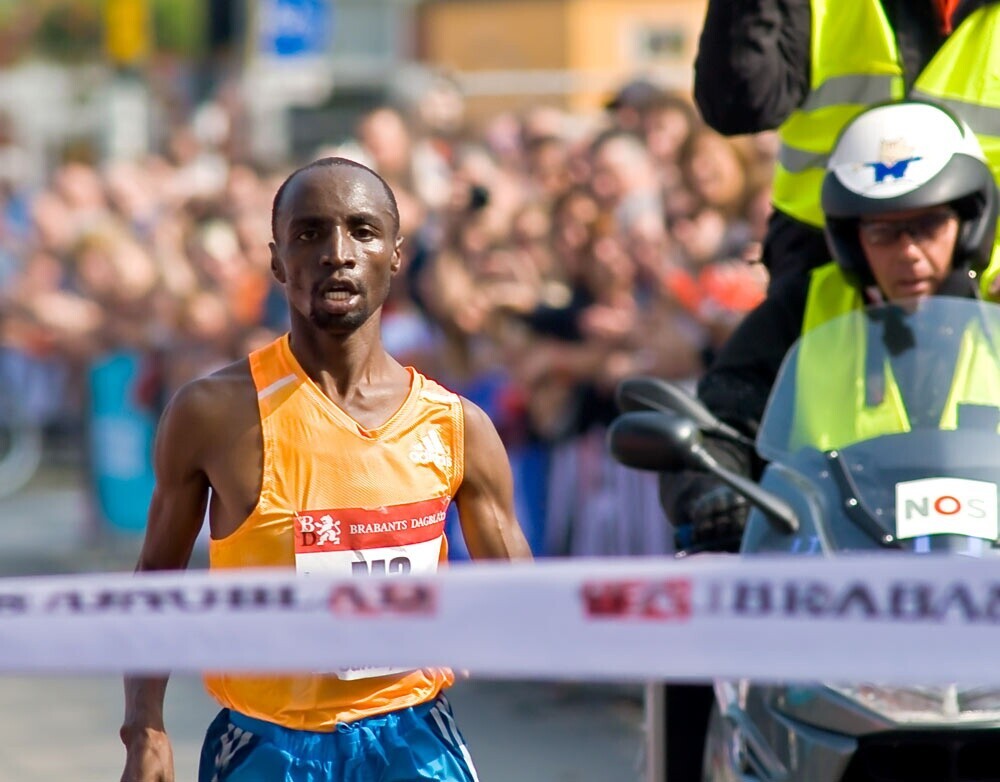
Koech, who flew the country’s flag at the 2013 World Championships, must, however, prepare to fend off a pool of talented challengers including compatriots Samwel Mailu and Martin Musau.
“I’m expecting intense competition as has been the case in the past but I believe I have trained well enough to contain any kind of rivalry,” added Koech.
Koech said he believes has what it takes to shatter his record.
“I prefer racing in the Hamburg Marathon due to its quick course. Hopefully, I can improve my current personal best,” Koech remarked.
(02/20/2024) ⚡AMPby Tony Mballa
Haspa Marathon Hamburg
The HASPA MARATHON HAMBURG is Germany’s biggest spring marathon and since 1986 the first one to paint the blue line on the roads. Hamburcourse record is fast (2:05:30), the metropolitan city (1.8 million residents) lets the euphoric atmosphere spill over and carry you to the finish. Make this experience first hand and follow the Blue Line....
more...Mary Ngugi confirmed for Roma-Ostia Half Marathon
Ngugi, a Boston marathon silver medalist from 2021, headlines the women’s field with a personal best (PB) of 66:29 in the half marathon and 2:20:22 in the marathon.
As part of her preparations for the upcoming Boston Marathon, Mary Ngugi-Cooper will line up for this year’s Roma-Ostia Half Marathon in March.
The race will be held on March 3, 2024 in Italy.
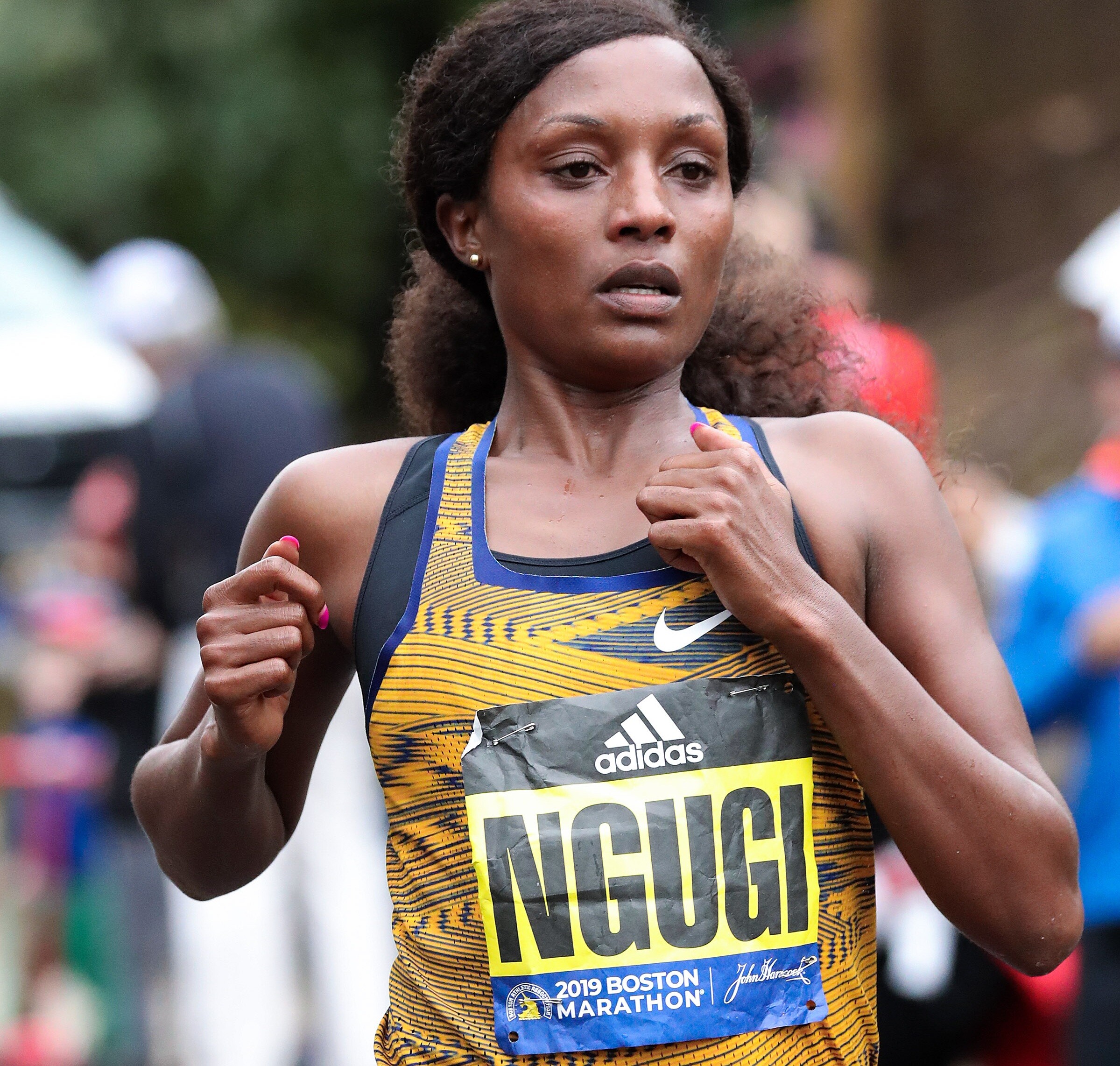
Ngugi, a Boston marathon silver medalist from 2021, headlines the women’s field with a personal best (PB) of 66:29 in the half marathon and 2:20:22 in the marathon.
The 2022 Boston bronze medalist who placed fifth at the New York City marathon last year will compete against her compatriots Caroline Korir and Nelly Jeptoo, the young Ethiopian Wariyo Bekelech Teku (fifth in the recent Ethiopian Cross Country Championships and rising star), and compatriot Anna Dibaba, the younger sister of the well-established Tirunesh and Genzebe.
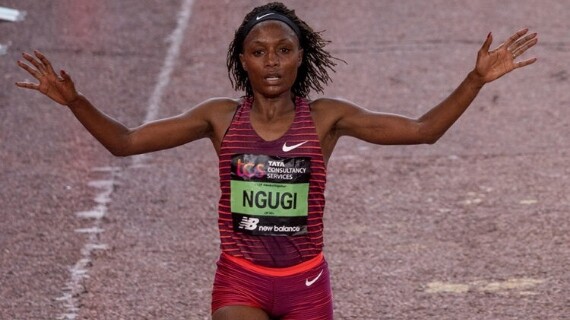
“I’m really excited to announce that in April I will be running @bostonmarathon. Boston holds a special place in my heart, not only for having two podium finishes in the last few years, but getting married there too! The streets are always amazing, crowds loud and I can’t wait to hit Heartbreak Hill once again with a ridiculously strong field of talented women,” Ngugi said while announcing her return to Boston.A welcome return for the Italian team is Rebecca Lonedo, who is in great shape with a recent PB of 70.13 in Seville.
As for the men’s elite list, Ethiopian Tsegu Berehanu Wendemu headlines the list with eyes firmly set on running under an hour as he holds a PB of 59:42.
Shadrack Koech, eager to compete on the fast Roman course after his 61.12 in Trento last October, and Kimakal Kipsambu, returning to the capital after pacing with a time of 61.37 in 2023 make up the top three list of elites.
(02/20/2024) ⚡AMPby Michezo Afrika
Roma Ostia Half Marathon
Italy's most popular half marathon, this road race is a popular event for runners of all abilities. The Roma-Ostia Half Marathon is an annual half marathon road running event which takes place in the spring in Rome, Italy. The course begins in the EUR district of the city and follows a direct south-easterly route to the finish point near the...
more...Cranberries may boost running performance, Canadian study reveals
Beyond their reputation as a Thanksgiving side dish, cranberries are emerging as potential game-changers for athletes seeking a performance boost. A recent study out of Montreal’s Concordia University delved into the impact of cranberry extract on runners’ time-trial performance and lactate response after exercise, with exciting results. Here’s what you need to know.
Cranberries: a superfood for athletes?
Cranberries, often hailed for their vibrant color and tart flavor, pack a powerful punch when it comes to a health-elevating organic compound called polyphenols, and boast the highest levels among fruits and vegetables. For runners, the magic lies in polyphenols’ ability to combat exercise-induced free radicals.

When you engage in vigorous physical activity, your body produces free radicals—unstable molecules that can wreak havoc on cells and tissues. While the free radicals are natural byproducts of exercise, an excess can lead to oxidative stress, potentially impacting performance and recovery.
Polyphenols are renowned for their antioxidant capacity, which raises the question: can cranberries protect against exercise-induced free radicals and, in turn, enhance performance?
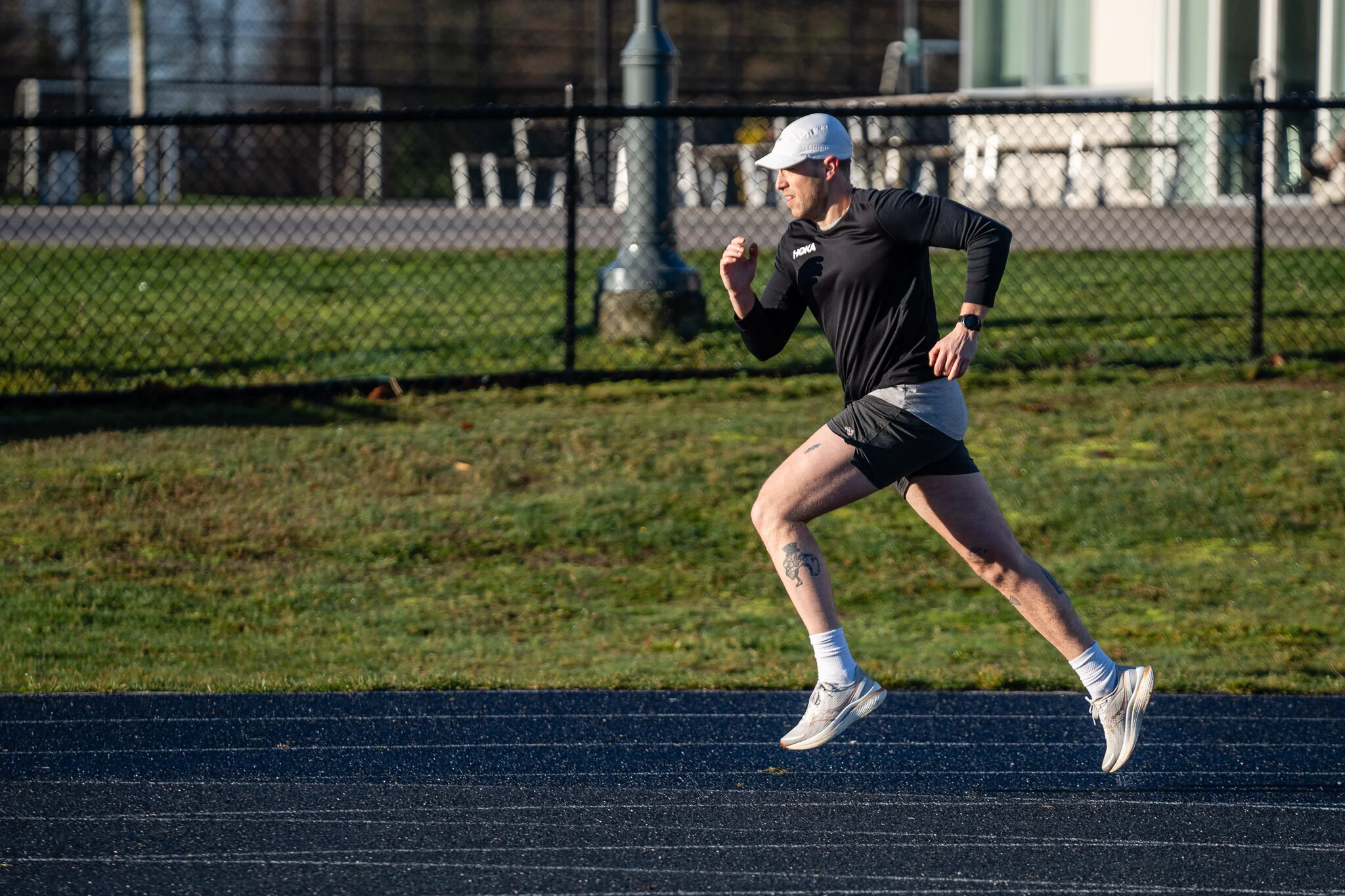
The study
A team of researchers conducted a study involving 14 athletes, aged 18–40 years old, who regularly performed at least five hours of endurance training per week, to investigate the effects of cranberry extract (CE) on time-trial performance and lactate response post-exercise.
The participants underwent testing at baseline, two hours after an acute CE dose, and four weeks after daily supplement consumption. Key performance indicators included a 1,500-meter race and a 400-meter race, with scientists measuring oxygen changes in leg muscles using near-infrared spectroscopy (a method that shines light into the body and observes how different tissues respond based on their oxygen levels).
The study revealed that chronic cranberry supplementation over 28 days led to improved aerobic performance during the 1,500-meter time trial. The benefits were not observed after a single dose, emphasizing the significance of consistent consumption. After 28 days of cranberry supplementation, muscle reoxygenation rates were significantly faster compared to baseline, suggesting that the antioxidant properties of cranberries may contribute to enhanced oxygen utilization, a crucial factor in endurance.
The takeaway
The study’s results suggest that cranberry supplementation may have ergogenic effects, particularly in improving physiological markers of performance during both short- and long-distance running. Whether you’re a seasoned runner or a weekend warrior, the cranberry’s potential benefits might just add a delightful twist to your running journey.
(02/20/2024) ⚡AMPby Keeley Milne
Shericka Jackson shares secret to maintaining great form in the Olympic season
Jamaican track star Shericka Jackson has shared the secret to maintaining her great form as she eyes the Olympic Games in Paris, France.
Two-time world 200m champion Shericka Jackson has shared the secret to her great form as she eyes a grand return to the Olympic Games in Paris, France.
Speaking on a video shared by her sponsor, Puma Running, the Olympic 100m silver medalist noted that consistency is what keeps her grounded.
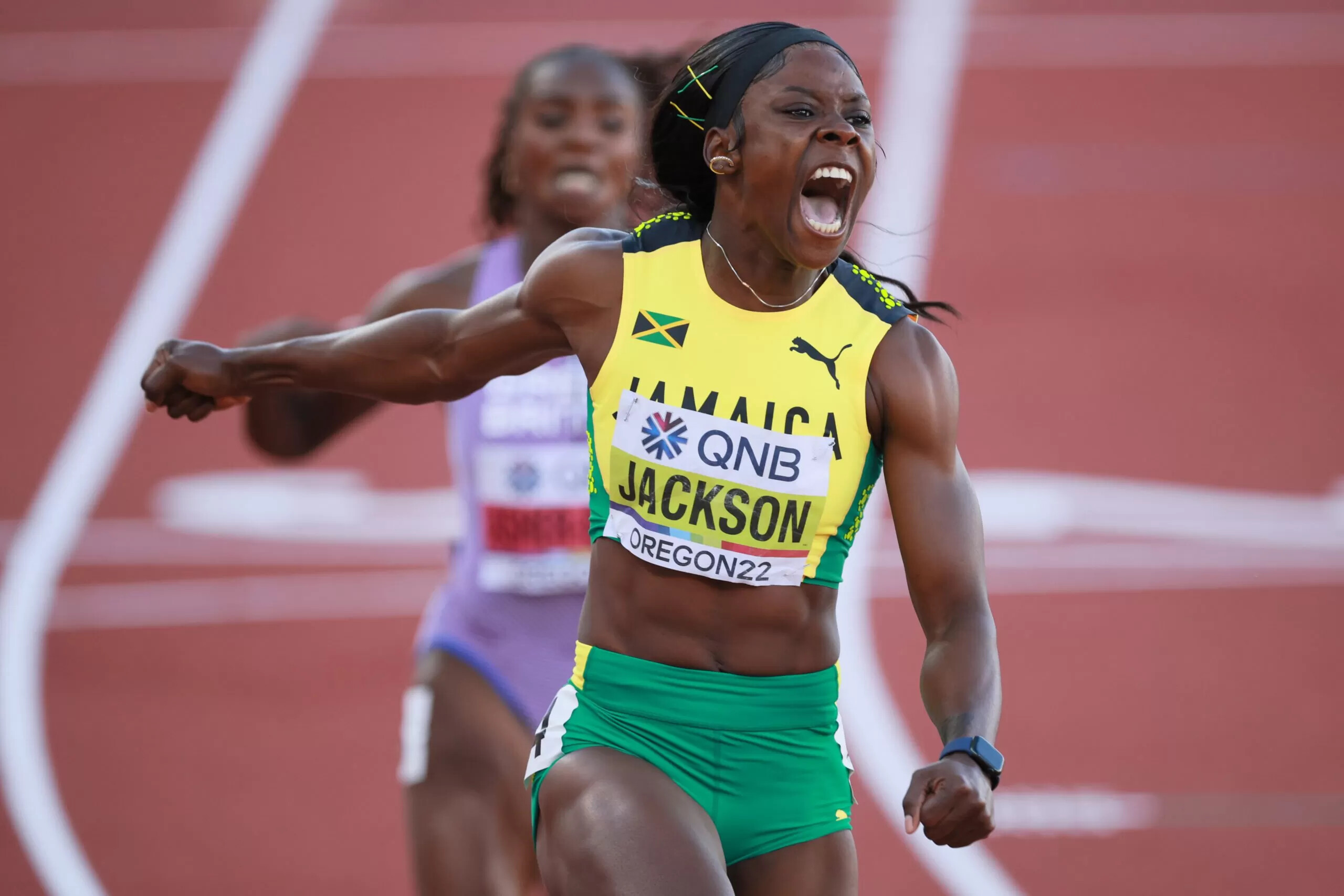
“Consistency for me has played a great role in my life. For me, it’s more mental and physical and once I’m physically fit and mentally ready I think it plays such a great role to just stay consistent by working hard and staying grounded,” Jackson said.
Meanwhile, the Jamaican will hopefully enjoy her 2024 season just like she did in 2022 and 2023. In 2022, Jackson won her first-ever gold medal in an individual event at the World Championships in Eugene, Oregon. In the 100m, she bagged a silver medal, finishing second behind compatriot Shelly-Anne Fraser-Pryce.
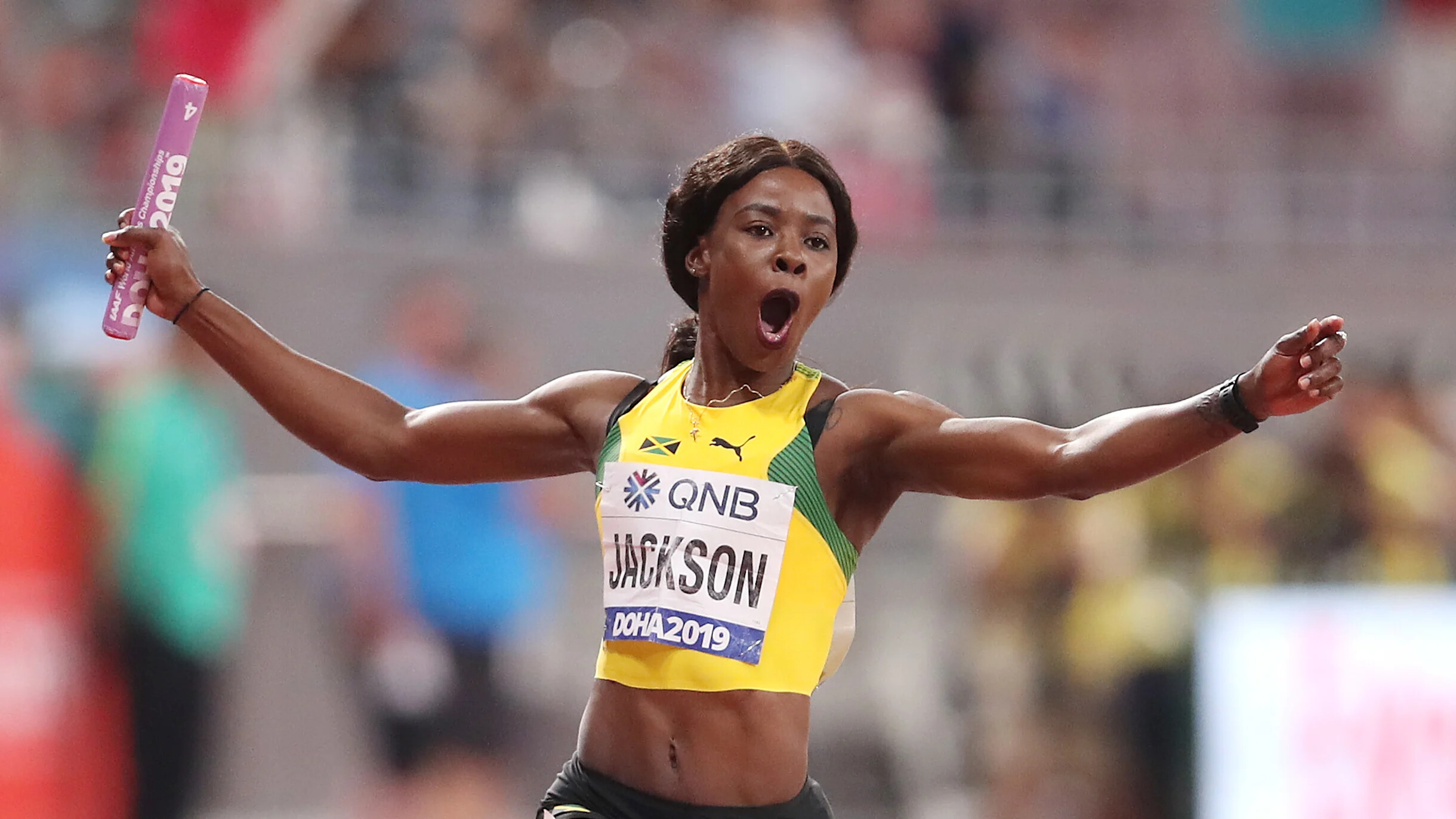
At last year’s World Championships in Budapest, Hungary, she clocked the second-fastest time, behind Flo-Jo’s world record in the 200m to successfully defend her title. She then settled for silver in the 100m, behind American Sha’Carri Richardson.
She proceeded to win a double (100m and 200m) at the Prefontaine Classic, the Diamond League Meeting final held in Eugene, Oregon. Her eyes are now set on the Olympic Games where she intends to have a good run and don the Jamaican colors with pride.
(02/19/2024) ⚡AMPby Abigael Wuafula
The amount Noah Lyles will pocket for beating Christian Coleman at US Indoor Championships
After his dominant exploits at the US Indoor Championships, Noah Lyles will not only debut at the World Indoor Championships but he will also bag some money from his exploits.
Two-time World 200m champion Noah Lyles will reap a good amount of money from his hard work at the just concluded US Indoor Championships.
Lyles beat world record holder Christian Coleman in the 60m to automatically qualify for the World Indoor Championships in Glasgow, Scotland and he will be joined by the latter at the global showpiece.
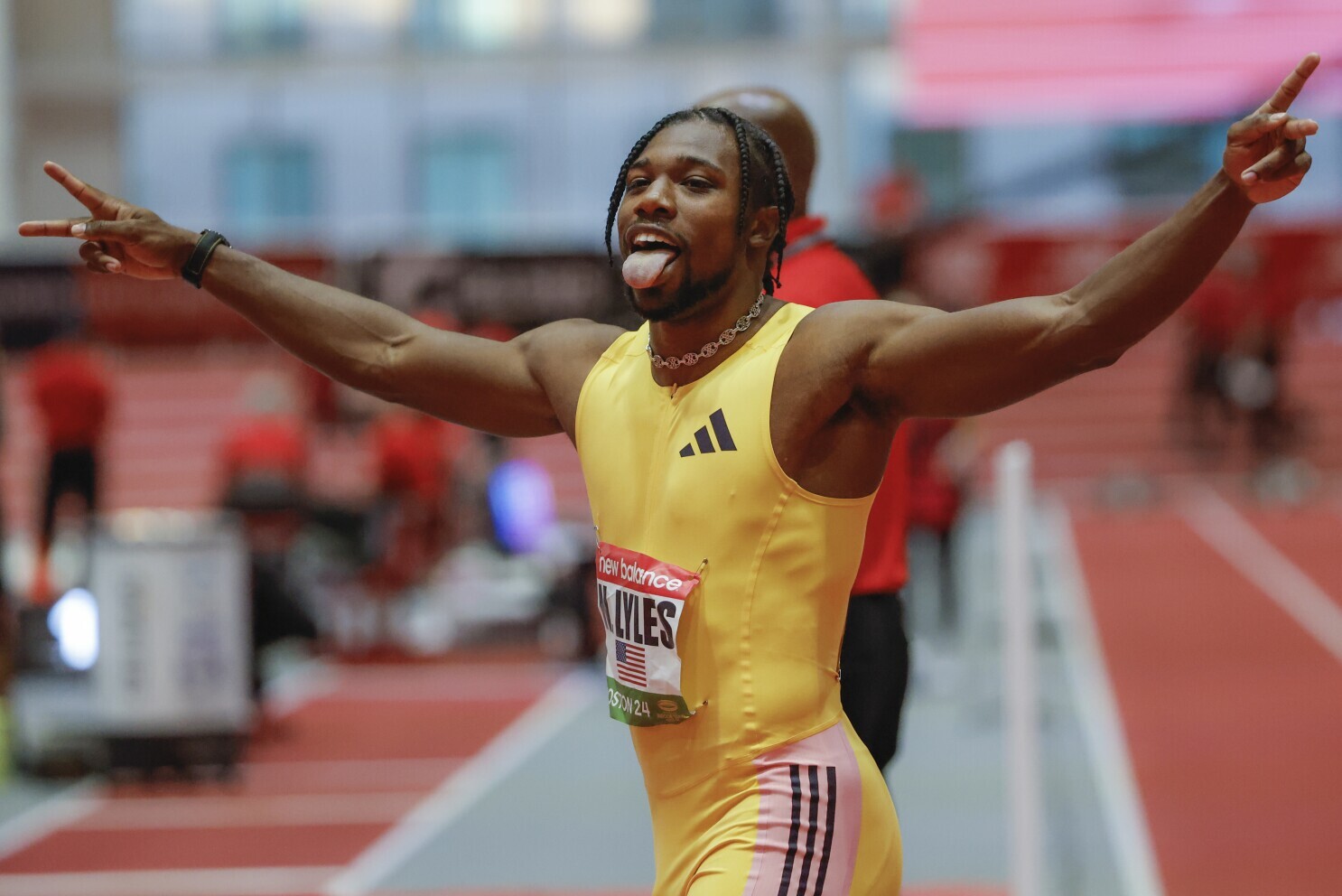
He clocked an impressive world-leading time of 6.43 seconds, a personal best time, for his first win in four career 60m finals against Coleman.
After the race, Lyles said: “World domination. We the best in the world. I’m hyped, I’m beyond excited. It’s one thing to run fast but it’s another thing to run fast against the greatest in the world and that’s truly what happened here today. You know, everyone was excited about this matchup and I was excited about this matchup.”

The triple world champion will not only make his debut at the World Indoor Championships but will also receive a token of appreciation from the USA Track and Field. According to the organisers of the US Indoor Championships, winners of the final races will pocket approximately Ksh 850,000.
The second and third-place finishers will walk away with around Ksh 566,000 and Ksh 353,000 respectively while the athletes who finish fourth will pocket Ksh 212,000.
The athletes who finish fifth will walk away with around Ksh 141, 500. This means that Lyles will walk away with about Ksh 850,000 ($5842US) while Coleman will pocket Ksh 566,000 ($3890US).
(02/19/2024) ⚡AMPby Abigael Wuafula
2026 USAFT Indoor Championships
The 2026 USATF Indoor Championships, presented by Prevagen, are set to take place on February 22-23 at the Ocean Breeze Athletic Complex in Staten Island, New York. This premier event will feature the nation's top track and field athletes competing for national titles and spots on the U.S. team for the 2025 World Indoor Championships in Nanjing, China. The Ocean...
more...Wins for Geleta and Gebru as records fall in Seville
Ethiopia’s Deresa Geleta ran a world-leading course record of 2:03:27 to move into the top 20 on the men’s world marathon all-time list while his compatriot Azmera Gebru won the women’s race in 2:22:13 at the Zurich Maraton de Sevilla, a World Athletics Elite Label road race, on Sunday (18).
Record breaking was the theme of the day, with eight national records set as athletes chased qualification times for the Olympic Games in Paris in August.
A total of 12 men dipped under 2:08 and 14 women went sub-2:25.
Three of those national records were achieved by the athletes who next followed Geleta over the finish line: runner-up Morhad Amdouni of France, who clocked 2:03:47; third-place finisher Gashau Ayale of Israel, who ran 2:04:53, and Yemaneberhan Crippa of Italy, who finished fourth in 2:06:06.
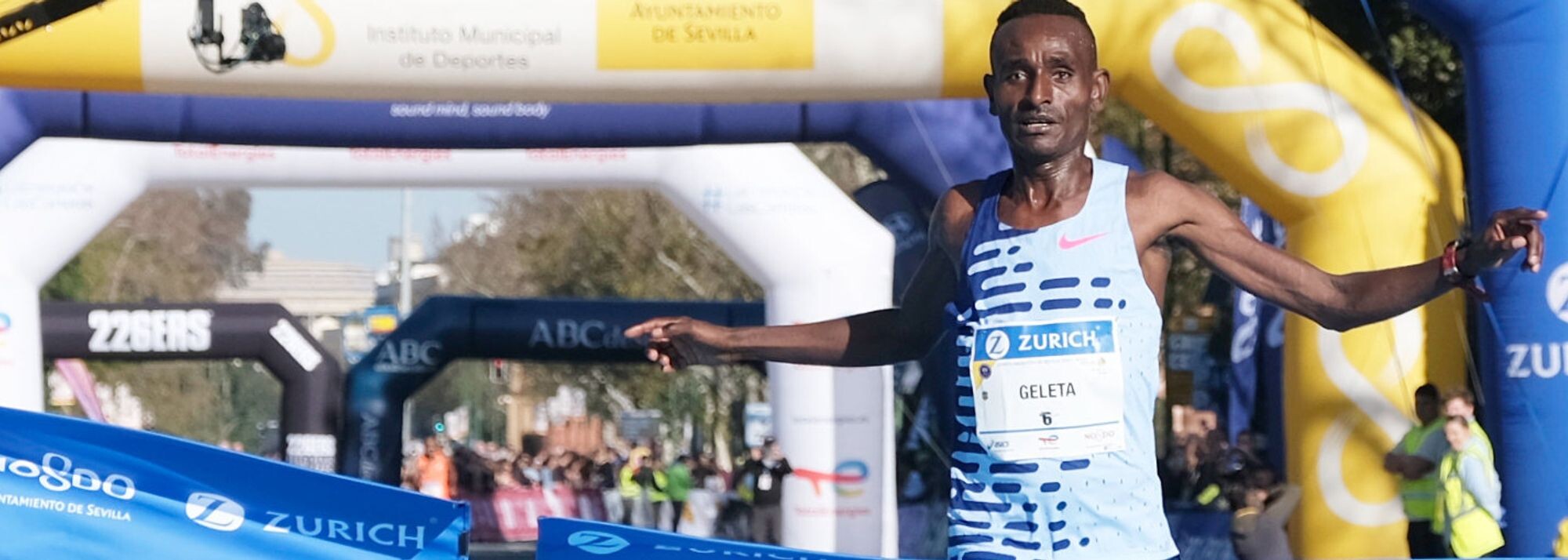
Behind Gebru, the runner-up spot in the women’s race was secured by Josephine Chepkoech in a PB of 2:22:38, while her Kenyan compatriot Magdalyne Masai was third in 2:22:51.
The men’s race started fast and the leaders reached 10km in 29:02 before the front group of nine passed the half marathon mark in 1:01:49 – 42 seconds inside course record pace.
The pacemakers dropped out at around 25km and Geleta made a move. He was chased by a group of five athletes and by 30km Amdouni had closed the gap. They ran together through that checkpoint in 1:27:44.
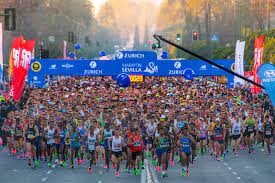
Geleta pulled away from Amdouni over the final 5km and won by 20 seconds in 2:03:27.
Further back, national records were also set by Sweden’s Suldan Hassan in ninth (2:07:36), Chile’s Carlos Martin Diaz del Rio in 18th (2:08:04) and Macedonia’s Dario Ivanovski in 20th (2:08:26).
Gebru was part of a six-strong women’s group that passed halfway in 1:11:22. At the two-hour mark, the race was down to three.
Gebru was the only athlete who could stick with the pacemaker over the following kilometers and she reached the 40km mark in 2:15:02.
She continued on to win in 2:22:13, 25 seconds ahead of Chepkoech. Masai finished a further 13 seconds back.
The record-breakers in the women’s race were Meline Rollin, who placed seventh in a French record of 2:24:12, and Argentina’s Florencia Borelli, who was eighth in a South American record of 2:24:18.
Prior to the race, a 42-second silence was held in tribute to marathon world record-holder Kelvin Kiptum, who died in a road traffic accident last weekend.
(02/19/2024) ⚡AMPby World Athletics
Zurich Marathon Sevilla
This urban, flat, fast and beautiful brand new race course will drive athletes through the most beautiful monuments of the city. Zurich Maraton de Sevilla brings the unique opportunity to brake the Best personal result over the mythical distance to all the athletes, professional or age groupers, in one of the most perfect international marathon circuits. This fast marathon takes...
more...Kerr and Muir head host nation team for Glasgow
World champion Josh Kerr and Olympic silver medalist Laura Muir are among the athletes selected to represent Great Britain and Northern Ireland at the World Athletics Indoor Championships Glasgow 24.
World leader Molly Caudery is also on the host nation team for the event taking place at the Glasgow Arena from 1-3 March.
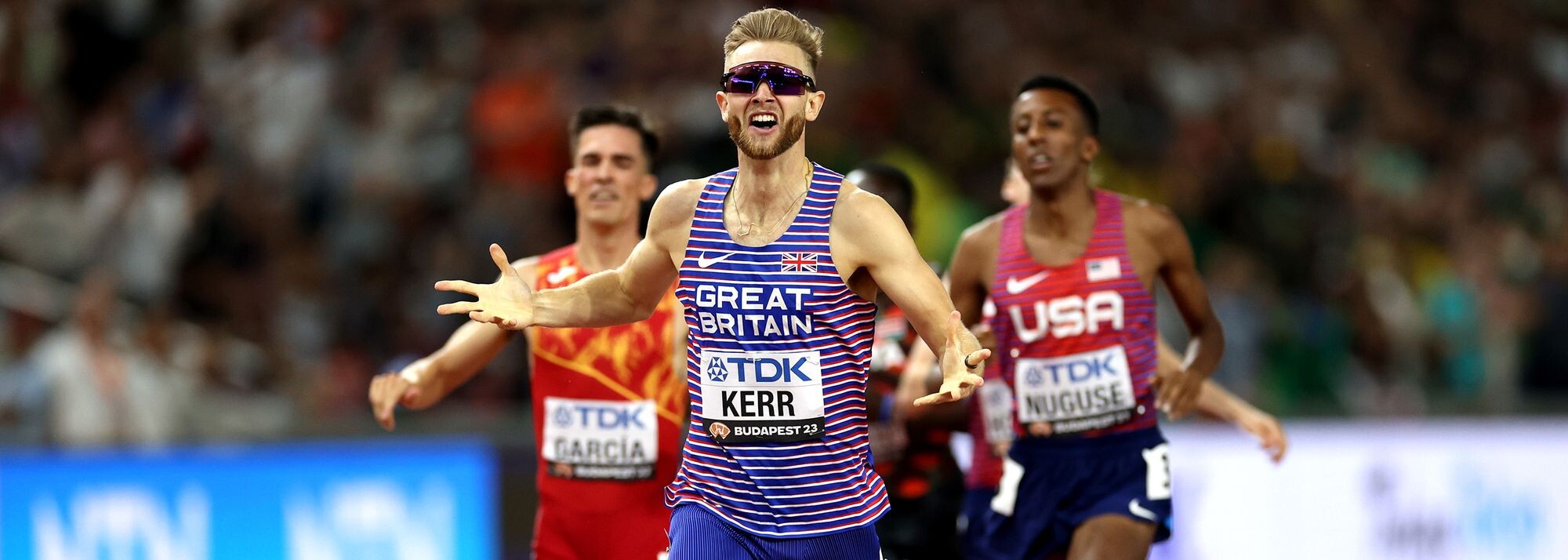
Kerr, who won world 1500m gold at the World Championships in Budapest last year, will contest the 3000m. Olympic 1500m silver medallist Muir, who claimed 1500m silver and 3000m bronze at the 2018 World Indoor Championships, will also race the 3000m in Glasgow.
Caudery heads to the event as the current world leader in the pole vault following her 4.85m PB clearance at the UK Indoor Championships on Saturday.
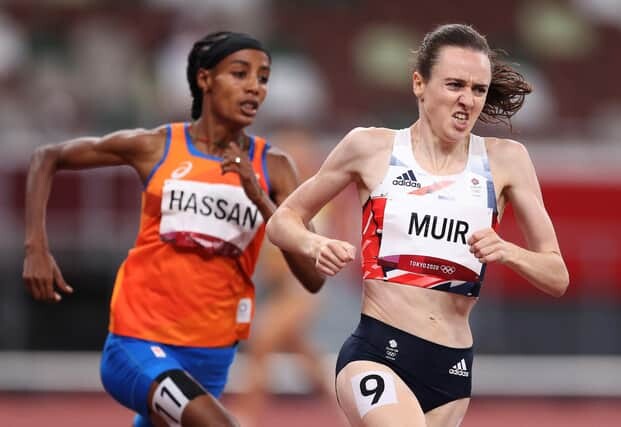
They will be joined in Glasgow by athletes including Jemma Reekie, who sits second on this season’s top list with the 1:58.24 she ran to win the national 800m title on Sunday, plus 60m hurdlers Cindy Sember and David King, high jumper Morgan Lake and sprinter Jeremiah Azu.
The full team will be confirmed once world rankings places have been finalised.
British team for Glasgow
Women
400m:Laviai Nielsen
800m: Isabelle Boffey, Jemma Reekie
1500m: Georgia Bell, Revee Walcott-Nolan
3000m: Laura Muir
60m hurdles: Cindy Sember
High jump: Morgan Lake
Pole vault: Molly Caudery
4x400m: Hannah Brier, Hannah Kelly, Jessie Knight, Laviai Nielsen, Lina Nielsen, Ama Pipi
Men
60m: Jeremiah Azu
1500m: Callum Elson, Adam Fogg
3000m: Josh Kerr
60m hurdles: David King, Tade Ojora.
(02/19/2024) ⚡AMPby World Athletics
World Athletics Indoor Championships
World-Class Competition Lands in China: 2025 World Athletics Championships The global spotlight shines on China as it hosts the 2025 World Athletics Championships, bringing together the planet’s most elite runners, jumpers, and throwers. This prestigious event, organized by World Athletics, represents the pinnacle of track and field competition—where national pride, personal records, and world titles are on the line. ...
more...Sorry But That Nightcap Definitely Isn’t Helping You Sleep—and Could Hinder Recovery
Research shows a nightcap can mess with your REM cycle.
A new study shows that just one alcoholic drink, consumed about an hour before bed, can reduce REM sleep.

Experts suggest cutting down on alcohol (or trying a period without it) to see how it affects your sleep quality.
The connection between alcohol consumption and poor sleep is well established—previous studies point to booze shortening sleep duration, increasing odds of snoring, and leading to daytime sleepiness (even if it initially provides a sedating effect)—but why is it so problematic? New research published in the journal SLEEP suggests sleep quality suffers due to the way alcohol significantly reduces REM sleep, the type needed for adequate mental function.
Researchers looked at 36 participants of an in-lab sleep study, who drank either an alcoholic or non-alcoholic beverage about an hour before going to bed, for three consecutive nights on two different occasions.
They found that when the alcohol was consumed, participants had notably less REM sleep compared to the nights when they drank the non-alcoholic beverage. Because of that, they concluded that drinking even a small amount of alcohol before bed can adversely affect sleep quality.
Also important is that the body didn’t adjust by the third night with alcohol, which led the researchers to conclude that regular nightcaps don’t cause the body to adapt over time.
Lack of REM sleep, particularly if it becomes chronic, can be a major brain health risk, since this is the stage of sleep necessary for memory consolidation and emotional processing, and it’s when you dream. If this is affected in a negative way, the researchers of the recent study suggested it might result in emotional problems, memory difficulties, and trouble focusing.
This isn’t the first time the association between alcohol and reduced REM sleep has been noted. A 2022 study published in SLEEP Advances that tracked the effects of behaviors like alcohol consumption over 36 years also found even moderate drinking could affect sleep quality.
Does this mean if you have poor sleep quality, you should quit drinking altogether? Not necessarily, but it may be a good idea to cut back or have a period of abstinence to see how your sleep improves, said Anton Bilchik, M.D., Ph.D., surgical oncologist and division chair of general surgery at Providence Saint John's Health Center in Santa Monica, California.
“There’s no doubt that alcohol increases health risks, but as with any type of behavior, it comes down to tradeoffs,” he told Runner’s World. “Everything you do should be put in context of your potential lifespan and healthspan. Most of all, it helps to pay attention to how a particular behavior, like drinking, is affecting you overall and adjust based on that insight.”
(02/18/2024) ⚡AMPby Runner’s World
5 Workouts to Improve Your VO2 Max
Learn more about this metric—and specific workouts to improve it.
Running at the best of your ability is somewhat of a numbers game. To hit new PRs, you’ll want to keep tabs on all kinds of stats, like distance covered, pace per mile (or interval), max heart rate, hours slept… We could go on.

But at the end of the day, there’s one measurement that stands out for having a huge influence on performance enhancement: your VO2 max.
All About VO2 Max and What It Means
“VO2 max is a measure of the amount of oxygen your body can use while running or the maximum rate at which we can race a middle- or long-distance race,” says Juli Benson, Olympian and owner of Juli Benson Training. It’s a number that denotes what volume of oxygen (in milliliters per kilogram of bodyweight per minute) that your body delivers during activity. Simply put, it’s a gauge of your aerobic capacity.
If you’re interested in knowing your exact number, there are a few ways to measure it. The first, and most accurate, is to have it tested in a performance lab. That’s also pricey and the most uncomfortable, as you’ll have to endure a tough session at an all-out effort on a treadmill with a mask strapped to your face.
Many new smartwatches also offer VO2 max approximations; some Garmin watches, for example, estimate your number based on data including heart rate and running pace, plus info about your max heart rate.
The easiest way to approximate your VO2 max is to use a simple equation, based on your max and resting heart rates: VO2 max = 15x (HR max/resting HR)
All that being said, you can train to improve your VO2 max, and your overall running performance, without calculating your exact number. Here’s how.
The Best Types of Workouts to Boost VO2 Max
When it comes to improving your VO2 max, your genes play a huge role. However, “with good old-fashioned hard work, it’s possible to improve your VO2 max,” says Benson.
Getting faster by way of VO2 max work is all about efficiency. “The higher your VO2 max, the faster or more efficiently you’ll be able to finish a race or training run—as your body moves the oxygen in the most effective manner,” says April Gatlin, ACE-certified personal trainer, master trainer, and coach for STRIDE Fitness.
The best way to train your body to do just that is by regularly tackling intervals—both interval runs and HIIT sessions incorporating strength moves. The good news: While you need to do intervals regularly, it shouldn’t take long before you see gains. “If consistent in training to increase VO2 max, people should start to notice a difference in approximately six weeks,” says Gatlin.
Research backs up the keys that unlock better VO2 max: Runners who did 200-meter interval workouts for only 10 weeks improved their aerobic capacity and VO2 max significantly more than runners who stuck to moderately-paced workouts, according to a 2018 study published in the Journal of Strength and Conditioning Research. Similarly, people who did HIIT sessions with intervals as short as 30 seconds for four weeks or less showed VO2 max improvements in a 2019 meta-analysis of studies published in the Journal of Science and Medicine in Sport; participants who did intervals closer to two minutes for four to 12 weeks showed even greater gains.
5 Workouts to Challenge Your VO2 Max
The best way to improve your VO2 max is to tap into the right heart-rate zone during those intervals. “In general, VO2 max work should be completed at about 90 to 100 percent of your max heart rate,” says Benson. That’s about the same as a 5K pace, and each of the five workouts below—recommended by Benson and Gatlin—include intervals at that approximate intensity. Feel free to dial it back a bit, Benson says, if you’re new to this type of training.
Before each of these sessions, warm up by jogging for eight to 15 minutes, then do some dynamic stretches or range of motion drills, like high knees and leg swings, followed by a few reps of 20-second strides to prep your body to pick up the pace.
The tough interval sections of the workouts can range from about 10 minutes for novices to 25 minutes for advanced runners; pick your reps below to dial into the right level for your fitness. It’s always smart to start on the lower end, see how it feels, and work your way up to more reps.
Benson recommends doing a VO2 max workout twice a month for newbies, up to once a week for more experienced runners. And for the biggest benefit, be careful not to schedule them the day after a long run or other challenging session. “These types of workout sessions should be done during the week and sandwiched between two very easy days of running, cross training, or rest days,” says Benson.
Workout 1: 1,000M Repeats
Run 1,000 meters at a 5K effort, then walk or jog for the same amount of time. Repeat 3 to 6 times.
Workout 2: Two by Twos
Run for 2 minutes at a 5K effort, then walk or slowly jog for 2 minutes. Repeat 4 to 8 times.
Workout 3: Ladder
Run for 2 minutes and 30 seconds at 10K effort, rest for the same amount of time. Run 3 minutes and 30 seconds at 10K effort, rest for the same amount of time. Run 4 minutes and 30 seconds at 10K effort, rest for the same amount of time. Repeat entire set of intervals at 5K effort.
Workout 4: Bodyweight AMRAP
Do 10 push-ups followed immediately by 10 bodyweight squats, then run 400 meters at a 5K or 10K pace. Repeat as many reps as possible for 20 minutes, resting when needed.
Workout 5: EMOM Sprints
Sprint at a pace you can sustain for 10 to 15 seconds, then jog for the remainder of the minute. Repeat for 20 minutes. Work up to sprinting for 20 or 30 seconds each minute.
(02/18/2024) ⚡AMPby Runner’s World
Chase the Sun - Running in Sunglasses
Running is more than just a workout; it's an exhilarating adventure that lets you embrace the great outdoors, break a sweat, and feel the wind in your hair.
It’s not just about you and the pavement anymore - as any seasoned runner knows, the right accessories can make all the difference. This might be a new pair of running trainers, are some additional kit, anything from some bone-conducting headphones to a belt for your phone, keys, and a drink. You might have a Garmin running watch to track your times and fingerless gloves for those chilly mornings out on the road.
Among popular accessories, sunglasses emerge not just as a style statement but as a game-changer for your run. Picture this: you, pounding the pavement with a steady rhythm, the sun casting a warm glow on your path. Without sunglasses, you get momentarily blinded and stumble….
Now picture this – the same scene, but on your face is a sleek pair of shades adding that extra cool factor to your stride. Glare? No such thing as you power forward on your way to a personal best. Let's delve into why these are not just fashion whims but essential gear for every runner.
Why You Need Sunglasses for Running
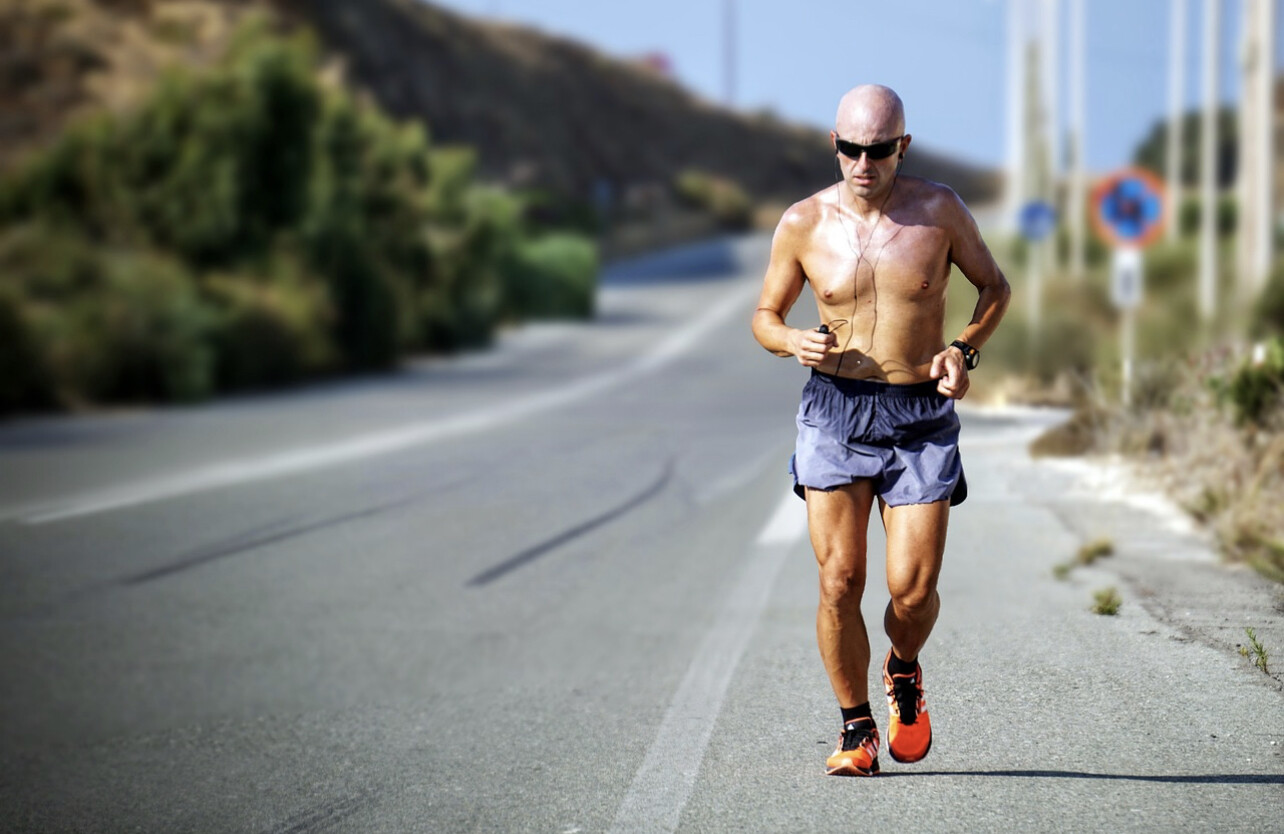
Running under the open sky is invigorating, but it comes with its challenges. The sun can be a relentless adversary to your eyes, causing a multitude of problems. That's where sunglasses come in. Beyond being a trendy accessory, they are your shield against the sun's potent UV rays. Prolonged exposure to these rays can lead to eye strain, fatigue, and even long-term damage. Imagine squinting through your entire run, your eyes battling the glare –not exactly the calming jog you envisioned.
However, running involves constant movement, and that can mean sunglasses are uncomfortable. You have to balance that with the effects of the environment - anyone who's ever tried running against the breeze knows the struggle of keeping their eyes wide open. Sunglasses act as a barrier, keeping wind, dust, and other airborne nuisances at bay. Ever felt a speck of dust or a stray insect in your eye mid-stride? Sunglasses make sure your focus stays on the path ahead, not on clearing debris from your eyes.
Also, the importance of glare reduction cannot be understated. Whether you're running on a beach boardwalk, a city street, or a forest trail, reflective surfaces are everywhere. The sun bounces off cars, water, or even fellow runners! A good pair of running sunglasses with polarized lenses protects you from glare, ensuring you maintain optimal visibility and reducing the risk of accidents.
There are considerations – you can’t just grab any old pair of sunnies. If they’re not the right fit, you’ll be constantly adjusting ill-fitting sunglasses mid-run. With that in mind, here are the main considerations when identifying a pair of running sunglasses to add to your kit.

Recommended Sunglasses for Running
First and foremost, UV protection is non-negotiable, so you should look for sunglasses that offer 100% UVA and UVB protection. However, you need to pair those with something comfortable. Lightweight frames and adjustable features ensure a snug fit without causing discomfort. Remember, the last thing you want is for your sunglasses to become a distraction rather than an asset.
Lightweight doesn’t seem to fit with durability, but you’ll need a strong pair, just in case they fall off. Opt for frames made from robust materials that can withstand the occasional bump, sweat, or accidental drop. Running is an adventure, and your sunglasses should be up for the ride.
Also, the lenses are important. We’ve mentioned polarized already, and that’s important in reducing glare. However, you should also pay serious consideration to the lens color. While personal preference plays a role, certain tints can enhance visibility in specific conditions. Gray lenses maintain color accuracy in bright sunlight, brown lenses enhance contrast in varying light conditions, and yellow lenses are great for low-light settings.
There are a couple of brands which come highly recommended. One manufacturer with a reputation for making running sunglasses is Oakley. Their BXTR model boasts plant-based BiO-Matter®* frame material that provides lightweight comfort and durability whilst running, but they’re also durable – they’re designed and undergo high-velocity tests to ensure they’re fit for high-octane situations.
Bolle also has a reputation within the sports eyewear sector, and they’re another option. They have the C-Shifter among their popular running models, with polycarbonate shatterproof and impact-resistant lenses. There’s also a half-rim shield lens that provides excellent airflow for particularly demanding runs.
Finally, CEBE offers a budget-friendly range for those runners who might hang up their trainers after they’ve got fit. They have the Outline model, which comes with an ultra-lightweight frame and shatterproof lenses. They tend to be more multi-use rather than for running, but at the lower end of the scale, they’re certainly a budget option.
Conclusion
Sunglasses - they're not just a finishing touch to your running ensemble; they're your armor against the elements, your shield against UV rays, and your style statement on the go. Running is about freedom, and with the right sunglasses, you're chasing miles, but you don’t have to run away from the sun.
(02/18/2024) ⚡AMP
ST. PIERRE'S MILE RECORD EARNS HER USATF ATHLETE OF THE WEEK HONORS
INDIANAPOLIS — Bettering her own American record* in the women's mile, Elle St. Pierre (Enosburg, Vermont/USATF New England) earned recognition as the 5th USATF Athlete of the Week award winner for 2024.In only her second track race since giving birth to a son last March, St. Pierre clipped almost a half-second off her own AR in the mile to win the Millrose Games in 4:16.41. She became the third fastest woman ever and her en route 1500 time of 4:00.34 puts her second on the all-time U.S. indoor performer list.St. Pierre, the 2022 World Indoor Championships silver medalist in the 3000 and an Olympian at Tokyo in the 1500, beat a star-studded field at Millrose, making a strong move with 300 to go to pass Australia's Jessica Hull and take the lead. Her final quarter-mile of 61.33 put away a group of women who behind her set four national records and eight lifetime bests. Other top performances from last week:
Grant Fisher lowered the American best in the men's 2 mile with an 8:03.62 to place second at the Millrose Games. He is now the No. 3 all-time world performer. En route, his 7:30.88 for 3000 moved him to No. 3 on the all-time U.S. performer list.

Alicia Monson lowered the American best in the women's 2 mile at the Millrose Games, placing third in 9:09.70. She is now the No. 5 all-time world performer.
Yared Nuguse won the men's mile at the Millrose Games in 3:47.83, the third fastest time ever indoors, and the second fastest by an American. His en route 3:33.43 for 1500 was the third fastest ever by an American.
Brandon Miller won the men's 600 at the Kirby Elite meet in Albuquerque in 1:14.03, making him the No. 2 all-time world performer.
Nia Akins won the women's 600 at the Kirby Elite meet in Albuquerque in a world-leading 1:24.32 to move to No. 8 on the all-time world performer list.
Grant Holloway continued his 10-year winning streak in the men's 60H with a 7.32 at the Liévin World Indoor Tour - Gold meet in France. He tied the fourth-fastest time ever and only one man besides him has ever run faster.
*All records subject to verification by the USATF Records Committee. Now in its 23nd year, USATF’s Athlete of the Week program is designed to recognize outstanding performers at all levels of the sport. USATF names a new honoree each week when there are high-level competitions and features the athlete on USATF.org. Selections are based on top performances and results from the previous week.2024 Winners: January 17, Weini Kelati; January 24, Cooper Teare; January 31, Nico Young; February 7, Fiona O'Keeffe; February 14, Elle St. Pierre.
(02/17/2024) ⚡AMP2026 USAFT Indoor Championships
The 2026 USATF Indoor Championships, presented by Prevagen, are set to take place on February 22-23 at the Ocean Breeze Athletic Complex in Staten Island, New York. This premier event will feature the nation's top track and field athletes competing for national titles and spots on the U.S. team for the 2025 World Indoor Championships in Nanjing, China. The Ocean...
more...American sprint legend claims top athletes are avoiding each other at major meetings due to low pay
Sprint legend Michael Johnson feels top athletes have been skipping meetings pitting them against their bitter rivals because there is not enough incentive to entice them.
American sprint legend Michael Johnson believes top athletes would not be skipping meetings against their bitter rivals over some flimsy reasons if the pay was good.
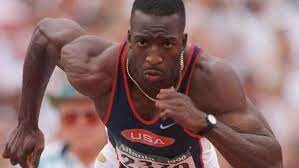
Johnson has been an advocate of better pay for athletes, calling on World Athletics to improve on their welfare, while also urging runners to speak out so that they can be taken seriously by the powers that be.
While commenting on sentiments made by multiple world champion Jakob Ingebrigtsen, who claimed he could beat his bitter rival Josh Kerr while blindfolded, a fan said it was highly unlikely that the two runners will clash any time soon because athletics authorities ‘do not like the idea.’
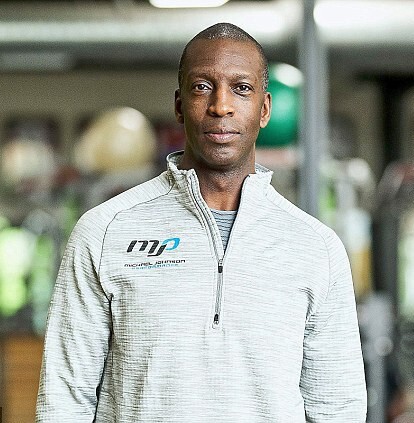
“One of them is definitely pulling out with an “injury” bc [because] there is no way we are going to get this good of a moment from the track and field gods,” said the fans.
Replying to the comment, Johnson said: “If the money goes up, the “injuries” will go down.”
It is another dig aimed at those in charge of the sport, ramping up the pressure on the need for athletes to get better pay so that fans have an opportunity to witness the best competing against each other.
Johnson, who won four Olympic Gold medals and eight World Championship titles, fired one of his many salvos last month when fans appeared to casually dismiss track and field athletes as amateurs.
“The number of people in the replies who think a track & field Olympic and World Champion is an amateur athlete is a major indictment of those in charge of the sport,” Johnson posted on social media after Pole vault Olympic and world champion Katie Moon had questioned why the Greater Cleveland Sports Commission had never nominated a female athlete for the Athlete of the Year award.
Ingebrigtsen stocked the fires on Friday when responding to Kerr’s impressive outing at the 2024 Millrose Games.
Kerr of Great Britain set a new indoor two-mile world record, running 8:00.67 to take down Mo Farah’s time of 8:03.40.
However, Ingebrigtsen seemed to dismiss his performance, claiming he could have beaten him in the two-mile “blindfolded” despite the fact that Kerr defeated him to claim 1,500m gold at the 2023 World Championships.
(02/17/2024) ⚡AMPby Joel Omotto
World 60m hurdles records for Holloway and Jones in Albuquerque
By running the fastest time in hurdling history on Friday (16), Grant Holloway also extended one of the sport’s longest stretches of dominance.
On the first day of the US Indoor Championships in Albuquerque, New Mexico, Holloway ran 7.27* in the heats to break his own 60m hurdles world record before skipping the final hours later because he was already assured of a berth on the US team bound for the World Athletics Indoor Championships in Glasgow next month.
The victory was Holloway’s 60th consecutive at the senior 60m hurdles, part of an astounding, decade-long streak that has left him still the only hurdler all time to dip under 7.30, a feat he has now achieved three times. That longevity and speed ensures he will arrive at Glasgow the prohibitive favourite to win a second straight world indoor gold medal – what he called the “main goal” of this season.
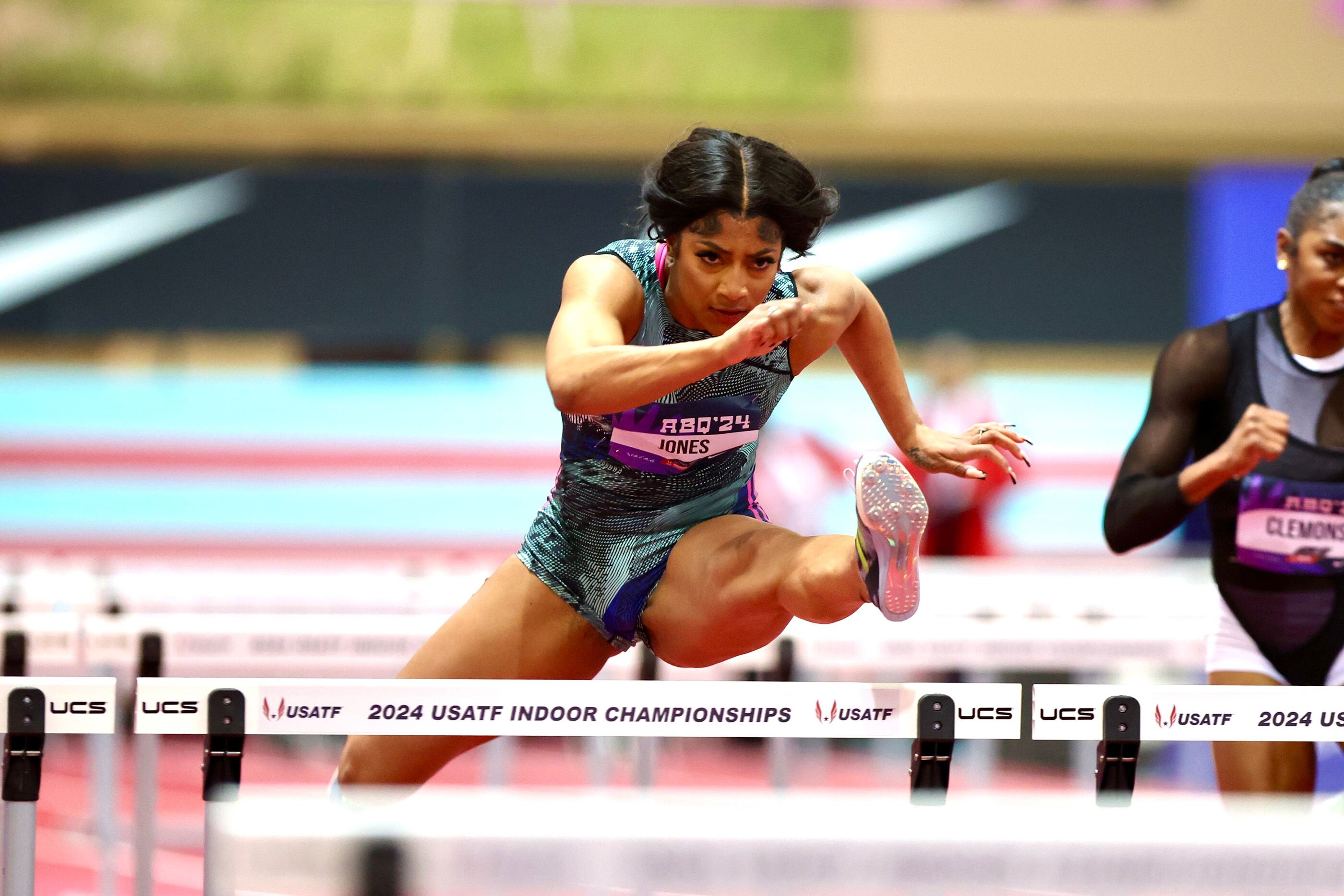
“I knew it was going to be a good one after I got out of the blocks,” Holloway said. “My main thing was just to continue going through with my steps and my rhythm. I wasn’t too upset about it but, you know, 7.27 at a nice track is always a good thing.”
With Holloway a spectator for Friday’s final, Trey Cunningham’s comeback season continued with a personal best 7.39 to claim his first national indoor title. The silver medallist at the 2022 World Athletics Championships in Oregon, Cunningham was hobbled by an injured back and hamstring in 2023, but has returned to form.

Holloway’s world record run came only 20 minutes after another. Tia Jones equalled the women’s world record in the 60m hurdles by clocking 7.67* in the heats to match the mark set by Devynne Charlton of The Bahamas just five days earlier at the Millrose Games.
After crossing the finish line and bouncing off the facility’s protective padding, Jones glanced at the clock and initially turned away – before doing a double-take when recognising she had just equalled Charlton’s mark.
In the final more than two hours later, Jones nearly matched her record yet again. Her winning time of 7.68 was 0.10 ahead of Jasmine Jones.
They were not the only favourites to win convincingly on the championships’ first day.
World-leading marks were set by Daniel Haugh, whose weight throw of 26.35m also broke the US record; Chase Jackson, who led the shot put from her first attempt and won it on her third with a mark of 20.02m; and long jumper Tara Davis-Woodhall, who described herself as “shocked” after leaping a personal best of 7.18m. Despite acknowledging that she was struggling with her approach on her final four jumps, Davis-Woodhall’s mark moves her to No.6 on the all-time list indoors.
“I think we have more in the tank,” said Davis-Woodall.
In the pole vault, Chris Nilsen set a US Championships record with his winning vault of 6.00m, ahead of Sam Kendricks, who cleared 5.95m. Nilsen missed once and Kendricks twice at a US record height of 6.05m, before Nilsen raised the bar to 6.10m and missed two more attempts at the record. In one of the night’s few instances where a top contender stumbled, KC Lightfoot finished eighth on 5.65m.
Elle St. Pierre, the only racer in the 3000m with the World Indoor Championships standard, ran alone for much of the final to win in 8:54.40, nearly nine seconds ahead of second-placed Josette Andrews. Countries are allowed two entrants per event for the World Indoor Championships – unless they also have a wild card entry in certain disciplines due to athletes winning the World Indoor Tour in 2023 or 2024, as is the case for Holloway – and competitors must either own their event’s qualifying standard or, if not, advance via world ranking.
Expecting a tactical race, St. Pierre, who was accustomed to racing at Albuquerque’s altitude after months of training at elevation in Arizona, took control of the pace early. If she qualifies for the World Indoor Championships in the 1500m as well, St. Pierre indicated she “would just focus on the 3km” in Glasgow.
Like St. Pierre, Yared Nuguse entered his own 3000m final as the only racer already owning the standard for the World Indoor Championships. Unlike St. Pierre, he waited out a slower, more strategic race with his kick to win in 7:55.76.
Running in fifth through 1400m, Nuguse moved up to stay patient in second until taking the lead entering the bell lap. He never let it go by closing the final 400m in 54.39 to edge Olin Hacker, who was second in 7:56.22. Nuguse set the US mile record last year, but said he and his coach had aimed for the 3000m in Glasgow out of a desire to maintain the strength he’d accumulated during winter training.
Will Nuguse race Josh Kerr in Glasgow, in what would be a showdown of top 1500m medal contenders stepping up to a longer distance? Kerr, fresh off running 8:00.67 for two miles at the Millrose Games, has not tipped his hand.
“Honestly, I like the suspense factor,” Nuguse said. “Maybe he’ll be there, maybe he won’t. It’s great.”
Vashti Cunningham’s reign in the high jump continued, needing only three jumps and never missing en route to winning her eighth consecutive indoor national title at 1.92m. Cunningham will enter Glasgow in position to add to her gold and silver medals earned at previous World Indoor Championships, as her season’s best of 1.97m is tied for third-best in the world this season.
The men’s high jump saw another repeat champion, as Shelby McEwen leapt 2.28m to retain his title. McEwen has not yet met the World Indoor Championships standard of 2.34m, but could advance based on world ranking.
In other finals, Chris Carter won the men’s triple jump on his last attempt, though his mark of 16.49m remains short of the world indoor standard. Nick Christie claimed the men’s 3000m race walk in 11:56.06, and Miranda Melville claimed the women’s title in 13:55.24.
(02/17/2024) ⚡AMPby World Athletics
2026 USAFT Indoor Championships
The 2026 USATF Indoor Championships, presented by Prevagen, are set to take place on February 22-23 at the Ocean Breeze Athletic Complex in Staten Island, New York. This premier event will feature the nation's top track and field athletes competing for national titles and spots on the U.S. team for the 2025 World Indoor Championships in Nanjing, China. The Ocean...
more...Doha Marathon; Uganda’s Solomon Mutai won the elite men’s race and Kenyan long-distance runner Valary Jemeli Aiyabei in the women’s elite race
Solomon Mutai of Uganda emerged victorious in the top men's race of the 2024 Doha Marathon presented by Ooredoo on Friday morning. The bronze medalist from the 2015 Beijing Athletics World Championship finished the 42-kilometer event in two hours, twelve minutes, and forty-eight seconds. He finished ahead of Mesfin Negus of Ethiopia (2:13:12) and Awet Habte Ghebrezghiabher of Eritrea (2:13:00).
In the women's elite event, Kenyan long-distance runner Valary Jemeli Aiyabei triumphed. With a timing of 2:23:38, the seasoned marathoner—who has taken home gold in marathons at Barcelona, Belgrade, Valencia, Prague, Beijing, and Frankfurt—added Doha to her list of accomplishments.
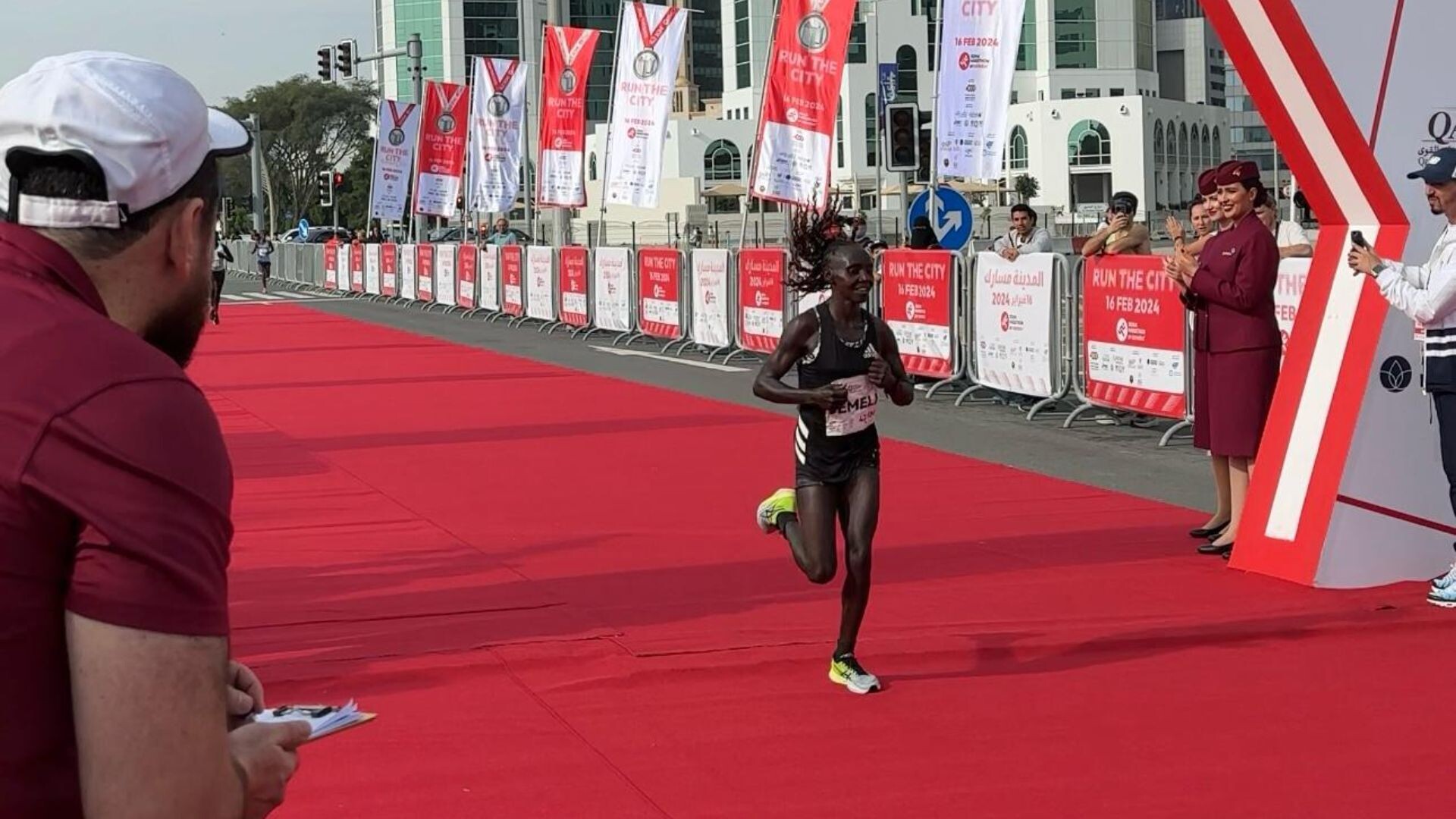
Rediet Daniel Molla of Ethiopia placed third in 2:26:25, while her countryman Joan Kipyatich came in second in 2:23:45.
On that day, almost 13,000 competitors competed in a variety of races across varying distances. There were races in the full, half, 10 km, 5 km, and 1 km distances.
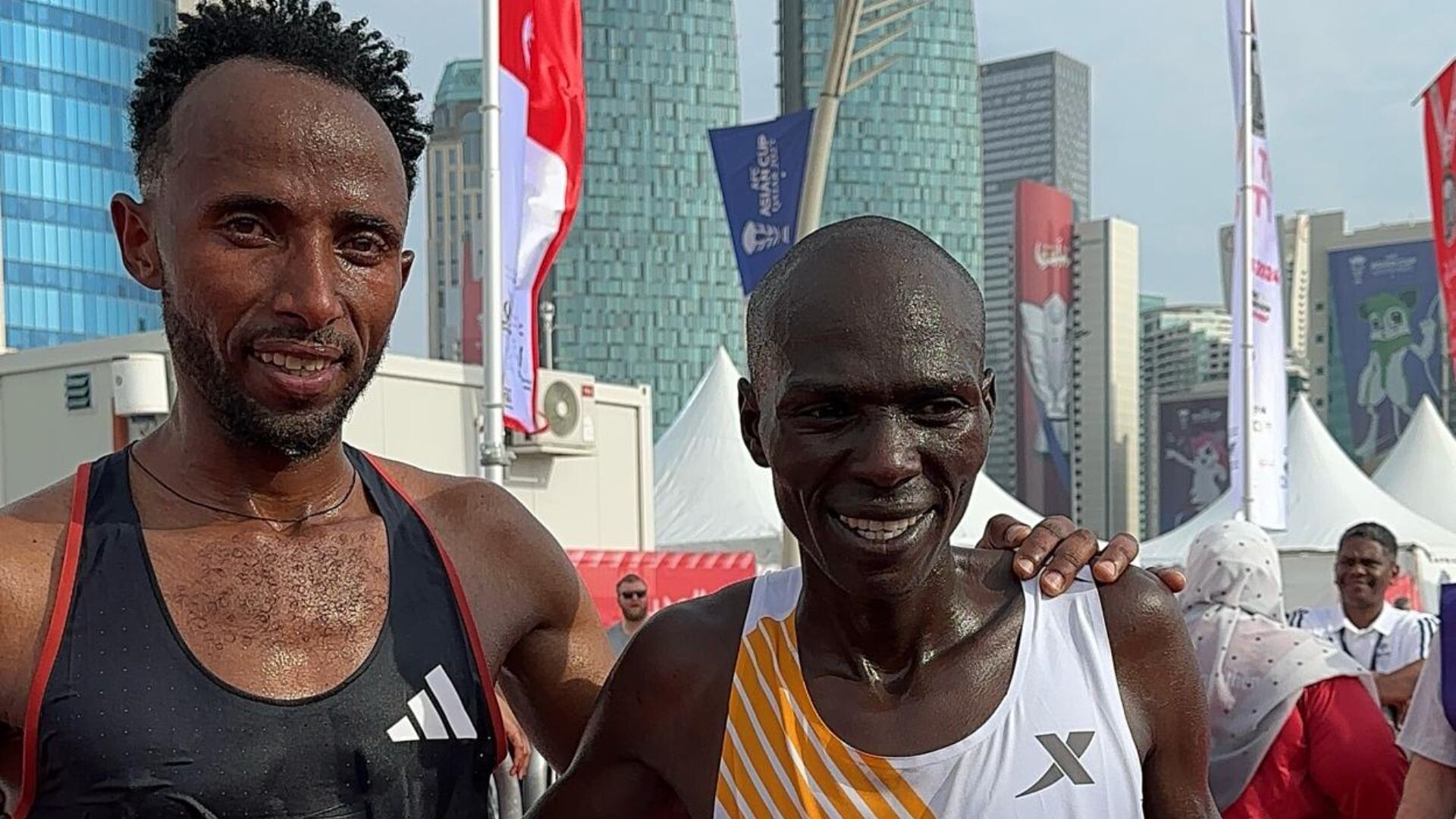
This year's tournament featured 25 participants from across the world and the Olympics.
The races began at 6.15 a.m. at the Hotel Park and ended at the starting point after taking a gorgeous course along the magnificent Corniche.
A total of QAR 500,000 in prize money was awarded to the victors of the Ooredoo Doha Marathon.
(02/17/2024) ⚡AMPOoredoo Doha Marathon
The Ooredoo Doha Marathon was created to bring the community together, inspire healthier lifestyles, and contribute to impactful charitable causes in Qatar. This annual event is a celebration of fitness, unity, and giving back, attracting participants of all ages and abilities. All proceeds from entry fees are donated to a variety of local charities, ensuring that every step taken supports...
more...A Riveting New Series Shows the Insane Workouts of Elite Runners—Completely Unfiltered
Every week, TRACK: All-Access reveals the raw training of star athletes like Conner Mantz, Clayton Young, and Elle St. Pierre.
“You just watched an attempted murder,” says Graham Blanks as he catches his breath on a pole vault mat at the Harvard University indoor track.

His coach, Alex Gibby, prescribed Blanks a lengthy session. Three sets of 12 minutes at threshold pace (4:49 to 4:40 mile pace), followed by four fast 300-meter reps on the track. Blanks ripped the last interval in 41.9 seconds.
The 2023 NCAA Cross-Country champion—along with his teammate, Maia Ramsden—is the subject of an episode of the new running YouTube channel TRACK: All-Access.
The channel is the latest project from Gordon Mack, who spent the previous decade working at FloTrack and MileSplit, where he wrote articles, covered meets on-site, and co-hosted the FloTrack Podcast. Last year, after a career change, Mack got the idea of doing weekly workout videos. Now, he’s diving head-first into the venture, traveling across the country to create content with some of the biggest names in running.
Mack posted his first video—3-mile repeats with marathoners Conner Mantz and Clayton Young—to popular reception. Since then, he’s been releasing at least one episode every week and has featured the likes of Stanford University stand-out Nico Young, high school star JoJo Jourdon, and 1500-meter Olympian Elle St. Pierre.
So far, he says it’s been a success.
“I’ve been pleasantly surprised and blessed and happy and thankful that people are responding positively,” Mack says. “When you start something, you have in your head the idealistic response, but you actually don’t know if it’s gonna happen until you put it out there. And fortunately, people seem to really like the content.”
Mack plans on releasing videos every Tuesday morning, but for the first few weeks, he’s uploading another video on Thursdays to give the channel some momentum. So far, TRACK: All-Access has over 7,000 subscribers, and the workout video with Nico Young has racked up more than 83,000 views.
While YouTube comments can quickly become crude, viewers seem to welcome Mack’s content. Sometimes they’ll offer feedback or encourage Mack to film episodes with specific teams. Some users have even joked that workout videos are prophetic.
“Babe wake up! All Access just posted another workout video ? ?” @sofodachimp2776
“Thank you for the back stage pass. I feel so honored to be part of this team.” @deviljames
“I’m starting to think track all access has the script” @orangepeanutyguy6569
The essence of the channel is in its name: access. Mack believes that track and field fans—himself included—crave more behind-the scenes content from athletes, outside of competition or media appearances. “We love watching them race, run records, and win championships,” he says. “But we also really love to see how they did it. And a lot of that is not really shown.”
After working in the running industry for over a decade, Mack has accumulated a rolodex of contacts with professional athletes and coaches. So far, the videos have focused on distance runners, but Mack plans on incorporating sprinters and field events into the mix as well.
Along with access, Mack wants the videos to be in-depth. Instead of editing the raw footage down into highlights, he prefers to show every rep of a session— even the more monotonous parts—to paint a full picture of training. The relationships between the athletes and their coaches are just as important, too. “[I’m] trying to give the user a viewpoint as if they got to watch the practice in full time for that full hour-and-a-half session,” he says.
Mack is a one-man show so far. He films and edits the entirety of the videos, and he has to get creative sometimes to keep up with the runners. When he was initially filming Conner Mantz for a workout in Provo, Utah, Mack sped alongside him on a bike—until he got a flat tire. He came back two days later with a car.
Although TRACK: All Access is still in its infancy, this isn’t a part-time job for Mack—this is his life for the foreseeable future. He plans on supporting the channel with YouTube advertising revenue, as well as working with brands on potential sponsorships down the line. Consistency is a cornerstone of the channel, and Mack plans to keep his output high.
“At the end of the day, it’s a very simple concept,” he says. “It’s workout videos with the best elite athletes in the varying degrees of our sport and the varying disciplines of our sport. And, hopefully, if I put out good content, people will like it.”
TRACK: All-Access tentative schedule
February 15—Boston University men (Distance)
February 20—Sophia Gorriaran (Harvard)
February 22—Northern Arizona University men (Distance)
February 27—BYU men (Distance)
February 29—Northern Arizona University women (Distance)
March 5—Kenzie Doyle (UMass Lowell)
March 7—Arizona State University men (Sprints)
March 12—Courtney Wayment/Anna Camp Bennett (Taylor Made Elite)
(02/17/2024) ⚡AMP
by Runner’s World
Can Strength Training Protect You from Running Injuries?
The logic is good and the anecdotes are common, but the evidence is shakier than expected, researchers find
The best way to prevent running injuries isn’t to waste your time stretching or searching for the perfect shoe; it’s to get strong. That’s where the zeitgeist has been headed over the past decade or so, as old ideas about injury prevention have produced disappointing results in studies. The rationale for strength training, by contrast, is seemingly unassailable: injuries occur when more stress is applied to a tissue than it can absorb, so strengthening the tissue should ward off injuries.

But that claim, too, should be treated with caution, according to a new systematic review of exercise-based prevention programs for running injuries. In Sports Medicine, a research team led by Richard Blagrove of Loughborough University in Britain sums up the available evidence. Blagrove, for the record, is the author of Strength and Conditioning for Endurance Running and has worked with plenty of elite runners on their strength routines, so it’s not like he’s an anti-strength-training zealot. I’ve written before about some of his previous research on strength training and running economy. But the overall picture on injury prevention is underwhelming—although, as Blagrove and his colleagues point out, there are reasons for optimism and some intriguing avenues for future research.
As with all systematic reviews, the first challenge is finding studies that meet your criteria. In this case, one of the key hurdles was ensuring that the subjects in the study were, by some reasonable definition, runners. Previous reviews of the topic have included military studies where running only made up a small fraction of overall training, and injuries sustained during other training activities were counted as “running injuries.” For the new review, they insisted that running had to be the subjects’ main training activity, comprising at least half their training time.
They were able to include nine articles with a total of 1,904 subjects—which, for a tricky topic like running injuries, isn’t a lot. The exercise interventions were all over the map: strength exercises like lunges and squats, plyometric hops and jumps, core routines, foot strengthening, and so on. Overall, perhaps not surprisingly given the wide variety of regimens, there was no significant benefit for the exercise groups compared to the control groups in injury risk (what proportion of subjects got injured during the studies) or injury rate (how many injuries they suffered for a given amount of running).
That, for now, is the state of the evidence. As always, we’re left hungry for more. What are the injury benefits of a straightforward strength-training routine? Given that this is among the most common forms of supplementary exercise among runners, you’d think we would know if it helps, but there’s almost no evidence either way. That’s important, Blagrove and co. point out, because there is robust evidence that this approach works in other sports like soccer. That doesn’t mean it will work in running, since the injury mechanisms are different, but it does suggest that it’s worth finding out.
One intriguing pattern in the data is that the three studies that produced the lowest injury risk also happened to be the three studies where the exercise routine was supervised rather than just assigned to be performed at home. Previous research has tended to find that people get bigger gains when they have a spotter or a personal trainer looking on. That could be because they dig a little deeper; or in this case, it could be that this is the only way to ensure people do the exercises at all. Sports medicine doctors and physical therapists often laugh about the patients who come for a follow-up visit claiming that they’ve been doing their assigned exercises religiously… but when they’re asked to demonstrate them, search for the piece of paper where the exercises are described. Exercises can only work if you actually do them, needless to say.
It’s also worth noting that Blagrove and his colleagues were particularly intrigued by a 2020 study from the American Journal of Sports Medicine that used foot and ankle strengthening, including exercises like the “foot doming,” based on the concept of a “foot core” providing stability to the rest of the body. In that study of 118 runners in Brazil, the control group was 2.4 times more likely to develop an injury during the one-year follow-up period. The survival graph from that study, showing the cumulative injuries for the control group (solid line) and foot-strengthening group (dashed line), is certainly compelling:
But the whole point of a meta-analysis is to pool more than one study, to increase sample size and reduce the risk of fluke results—and of investigator error or bias. One of the minor details in the meta-analysis: there were actually two other studies that met the inclusion criteria, both by the same research team. But when Blagrove’s team dug into the studies, they found identical baseline data—the same age, height, body mass, BMI, running experience, and biomechanical parameters—and identical injury occurrences… even though the studies had different sample sizes, durations, and exercises. The authors didn’t respond to questions about their data, so Blagrove’s meta-analysis excluded them.
The bottom line? We can’t say for sure, at this point, whether strength training or other forms of exercise lower your risk of getting injured while running. The logic is sound, and the circumstantial evidence from other sports is suggestive. Maybe more importantly, there’s also solid evidence that various forms of strength training improve running economy and boost your long-term health. It would be nice to get some injury prevention as a bonus, but the package is already pretty enticing.
(02/17/2024) ⚡AMPby Outside Online
Here are the top songs runners love
Still listening to “Eye of the Tiger” to help you channel your inner Rocky (III) when running stairs? You’re not alone—but marathoners do like a range of music to power them through their workouts. The charity fundraising website Just Giving recently conducted a survey of 2,000 participants gearing up for the 2024 London Marathon in April, hoping to reveal the rhythm that fuels their 42.2K journey.
We already know that music can play a powerful role in helping us get out the door and stay motivated. Studies have shown that not only does what you listen to while you exercise potentially improve your performance, but tuning in to some pre-workout music can boost your performance in the gym and help you get more out of each session. One could predict that playlists and preferences would be largely unique and individual, just like running styles and abilities, but it seems that runners have a lot of similarity in what they find motivating.
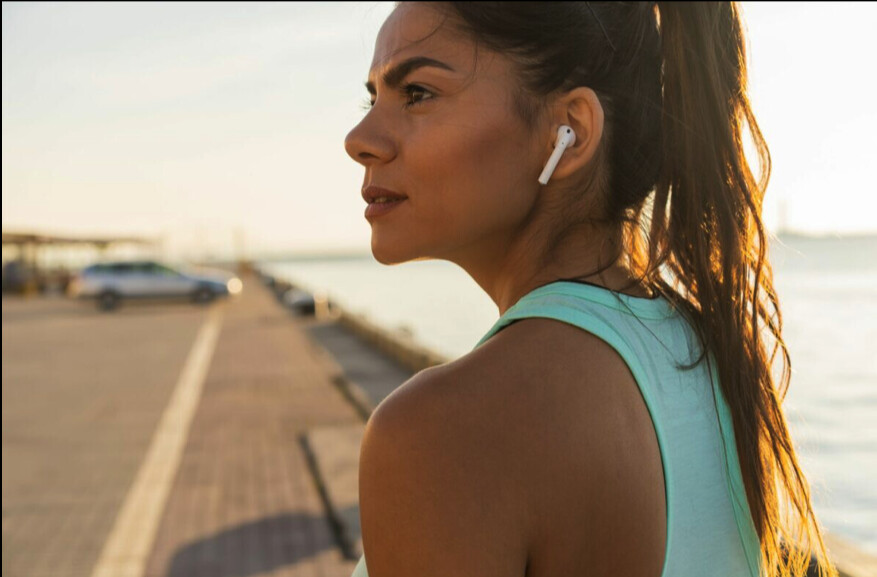
From more than 6,000 song nominations, the top 10 tracks emerged as the ultimate running playlist, with Survivor’s timeless Rocky anthem “Eye of the Tiger” still leading the way (however, the classic theme from the original Rocky didn’t make the list). Eminem‘s “Lose Yourself” and Queen‘s invigorating “Don’t Stop Me Now” also raced to the forefront. And while you may be getting tired of hearing about Taylor Swift‘s latest football sideline fanatics, you’re apparently still happy to have her cheer you through the miles of a long, slow distance session, with her name appearing on both favourite artists and within the top 10 songs.
Top 10 songs marathoners love to listen to:
1. Eye of the Tiger – Survivor 2. Lose Yourself – Eminem 3. Don’t Stop Me Now – Queen 4. Dog Days Are Over – Florence & The Machine 5. Running Up That Hill – Kate Bush 6. Mr Brightside – The Killers 7. Born to Run – Bruce Springsteen 8. Adore U – Fred Again 9. Pump It – Black Eyed Peas 10. Cruel Summer – Taylor Swift
The survey also determined the top artists runners tune in to, with Queen, Swift and Fred Again making the cut for both lists.
(02/17/2024) ⚡AMPby Running Magazine
Kelvin Kiptum's legacy lives on with two-hour challenge
Last Sunday, the running world lost marathon world record holder Kelvin Kiptum at the age of 24 after he lost control of his car in Kaptagat, Kenya. Kiptum was one of the most promising athletes in the sport, setting the marathon world record of 2:00:35 at the 2023 Chicago Marathon, and was slated to challenge the two-hour barrier at the 2024 Rotterdam Marathon.
In memory of Kiptum, the running community has come up with an idea to honour his legacy: a virtual two-hour run on April 14, the day he was scheduled to run Rotterdam.The challenge isn’t asking runners to go out and try to break the world record, but they can use the challenge as a long run for their upcoming race or see how far they can run in the elapsed time.The two-hour challenge also does not have to be a run; it could be a ride, or even a walk. Just be sure to tag #TwoHours4Kiptum on your Strava or social media post.

Kiptum had a rapid rise to superstardom in the sport, recording the fastest-ever marathon debut at the Valencia Marathon in 2022. Five months later, he broke Eliud Kipchoge’s course record at the 2023 London Marathon, where he ran an impressive negative split of 2:01:25. Then came the one he’ll most be remembered for–setting a world record of 2:00:35 at the Chicago Marathon last fall.“Athletics world mourns death of marathon world record holder Kelvin Kiptum” — Canadian Running Magazine
After his world-record run, Kiptum said he never felt he was challenged by the marathon distance, and there was a fascination around what he might run in Rotterdam–a topic that will forever be debated, and a question that the world will never know the answer to. The running community will forever remember Kiptum and his drive to show people that anything is possible.
(02/17/2024) ⚡AMPby Running Magazine
Konstanze Klosterhalfen is running the RAK Half Marathon
Konstanze Klosterhalfen is one of the few Europeans who have successfully challenged East African superiority in long distance running in recent years; but the German star will have a mass challenge from Kenyans and Ethiopians in her next venture, the Ras Al Khaimah Half Marathon on Saturday February 24.
The reigning European 5000 metres champion ‘Koko,’ to her fans, won bronze in the World Championships at that same distance in 2019, but her debut victory over a posse of leading East Africans in the Valencia Half Marathon in October 2022 signalled not only a step-up in prestige but also potential for success in the full marathon. And RAK in nine days’ time will be another stepping stone.
The RAK ‘half’ has been one of the fastest 21.1k races in the world since its inception 17 years ago in one of the smaller emirates in the UAE. The list of winners and record breakers reads like a ‘who’s who’ of distance running. Leading this year’s women’s field and a formidable opponent for Klosterhalfen is reigning Olympic marathon champion and three-time world ‘half’ winner, Peres Jepchirchir of Kenya, who set a then world record of 65:06 when she ran RAK in 2017. Burgeoning competition and the advent of super-shoes has resulted in that record now standing at 62.52, to Letesenbet Gidey of Ethiopia.
Klosterhalfen’s debut win in Valencia came in 65:41; and with another former world record holder – Ababel Yeshaneh of Ethiopia (64:31) in the RAK field, the German will not have an easy task, the more so since she took a break in the second half of last summer season, and has not raced for six months. She was understandably cautious this week when she said, ‘Overall I am happy with how my training has been going and I’m ready to test myself and see exactly where I am after a good training camp. I’m certainly looking forward to returning to racing, especially at the Ras Al Khaimah Half Marathon as it is a race I’ve heard a lot about’.
Klosterhalfen spends a lot of time training at altitude in the USA, and in her quieter moments has walked the runway at Berlin Fashion Week, and also plays piano and flute; but running full tilt for just over an hour before breakfast will be the order of the morning a week on Saturday.
(02/16/2024) ⚡AMPRak Half Marathon
The Rak Al Khaimah Half Marathon is the 'world's fastest half marathon' because if you take the top 10 fastest times recorded in RAK for men (and the same for women) and find the average (for each) and then do the same with the top ten fastest recorded times across all races (you can reference the IAAF for this), the...
more...Athletics Canada names nine athletes to 2024 World Indoor Championship team
On Thursday, Athletics Canada released a list of nine athletes who will represent Team Canada at next month’s World Indoor Championships from March 1-3 in Glasgow, Scotland. The team is on the smaller side, consisting of five women and four men, who hope to contend for medals in Glasgow.
World championship silver medalist in the shot put, Sarah Mitton, will lead Team Canada in Glasgow. Mitton has yet to win a world indoor medal in her career. Last August, she won her first world championship medal, taking silver behind Chase Ealey of the U.S. Mitton is the Canadian national record holder both indoors and outdoors.
The other four women joining Mitton on Team Canada are 1,500m runners Lucia Stafford and Simone Plourde, 2023 World Indoor Tour winner Alysha Newman (pole vault) and, making her world indoor debut, Mariam Abdul-Rashid, who is coming off a personal best of 8.01 seconds in the women’s 60m hurdles in Clemson, S.C. last weekend.
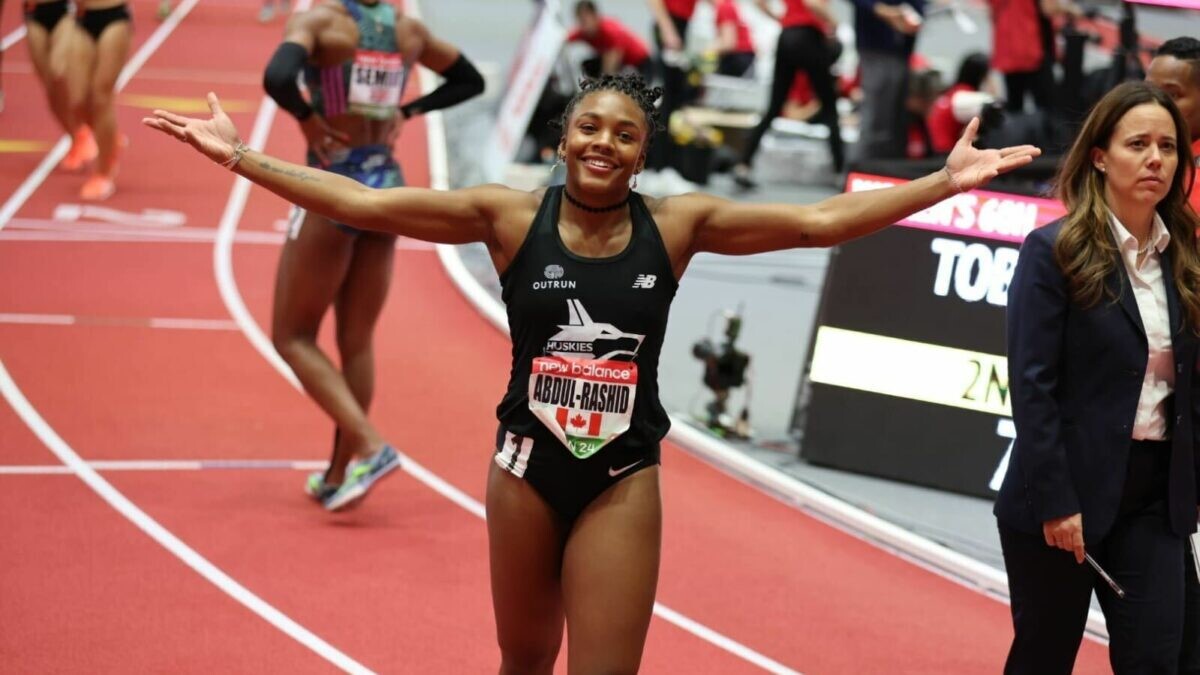
“World Indoor Championships is a fun test to see where we’re at with the training and all the work we’ve put in,” Mitton said to Athletics Canada. “With it being an Olympic year, my focus is set toward the Games, but it’s great to be able to be competitive and get into that competitive mindset this early in the season at an event like the World Indoor Championships.”
On the men’s side, the team will feature three veterans and one rising star. Malachi Murray, a sprinter out of Edmonton, has had several breakthrough performances in the men’s 60m this season. Just days before the Feb. 14 selection deadline, Murray ran to a personal best of 6.55 seconds in the men’s 60m–the fastest mark among Canadian athletes this year. The 23-year-old will be joined in the 60m event by Brendon Rodney, who ran the third leg for Canada’s gold-medal-winning 100m relay team in 2022.

Charles Philibert-Thiboutot and Kieran Lumb will compete in the men’s 1,500m. Both men have had a fantastic start to the 2024 season, setting personal bests in almost every race they’ve run.
Eleven other athletes have been provisionally nominated to the team: Sade McCreath, Audrey Leduc, Astrid Nyame, Donna Ntambue, Madeleine Kelly, Jazz Shukla, Regan Yee, Ibrahim Ayorinde, Abdullahi Hassan, Olivier Desmeules and Matti Erickson. According to Athletics Canada, these 11 athletes met the AC indoor qualification standard in their respective events. They will be added to the team if they appear as “Qualified by Entry Standard” or “In World Rankings quota” on the World Athletics rankings list and quota places remain open in their event.
These athletes will be selected if they appear in the World Athletics selection quota as of Feb. 21. (For example: Shukla currently holds the 32nd spot of the allotted 30 spots in the women’s 800m, if several other 800m in front of her choose to not go, she would then get their spot on points). But that invite rests in the hands of World Athletics, not Athletics Canada.
At the 2022 World Indoor Championships in Belgrade, Serbia, Team Canada came home with one gold medal, three national records, seven personal bests and eight top-eight performances. The lone medal came from Damian Warner in the men’s heptathlon. It was Warner’s first World Indoor gold medal, having also won silver at the 2018 championship in Birmingham, U.K.
The 2024 World Indoor Championships will run from March 1-3 and will host more than 700 athletes from more than 130 countries, competing across 26 events (13 for men and 13 for women).
(02/16/2024) ⚡AMPby Marley Dickinson
World Athletics Indoor Championships
World-Class Competition Lands in China: 2025 World Athletics Championships The global spotlight shines on China as it hosts the 2025 World Athletics Championships, bringing together the planet’s most elite runners, jumpers, and throwers. This prestigious event, organized by World Athletics, represents the pinnacle of track and field competition—where national pride, personal records, and world titles are on the line. ...
more...Chumba will go head to head against Gebreslase when the two clash at the Nagoya women’s marathon
Kenya-born Bahranian Eunice Chumba will go head to head against 2022 World champion Gotytom Gebreslase of Ethiopia when the two clash at the Nagoya women’s marathon slated for March 10.
Nagoya women’s marathon is held annually in Japan and it is the largest women’s race in the world certified by the Guinness World Records.
It was launched on March 12, 2012 with an initial participation of 13,114. It has since grown to be recognized by World Athletics as a Platinum label race averaging 20,000 participants.
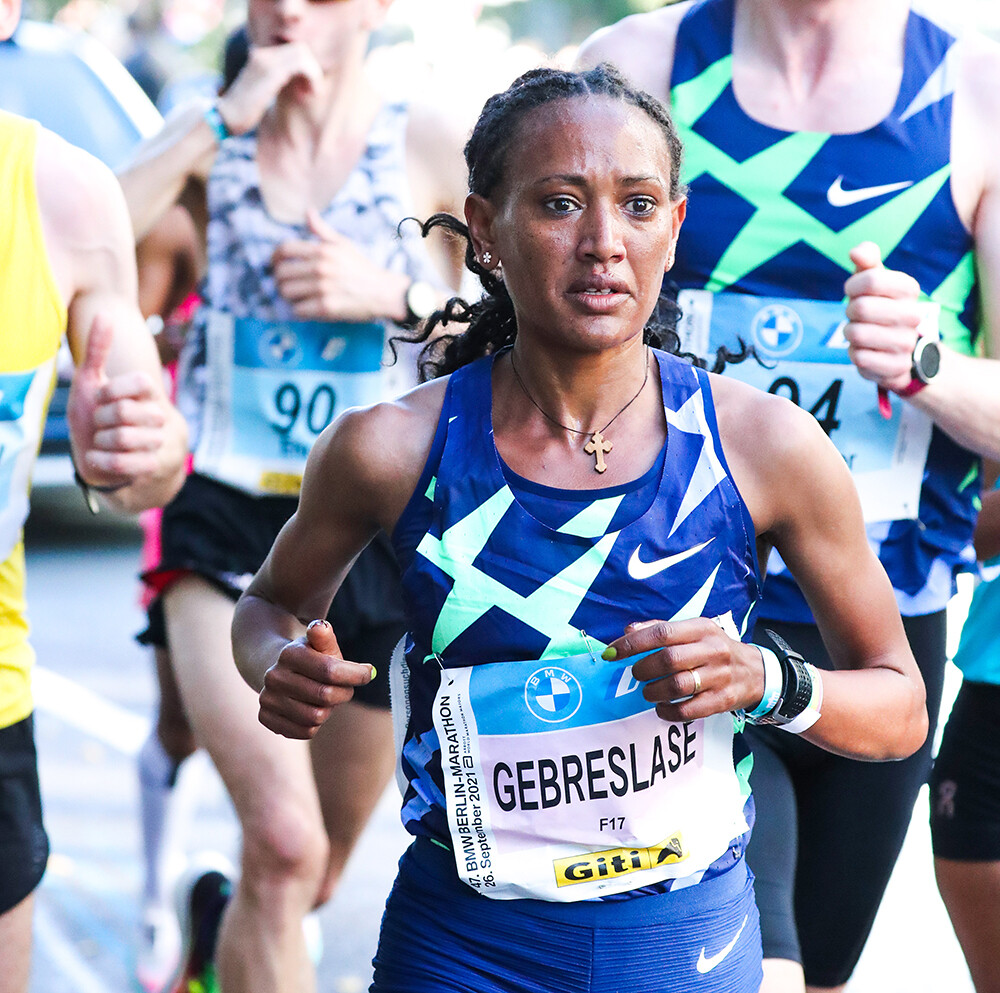
Chumba was a silver medalist in the 10,000m at the 2018 Asia Games in Jakarta, Indonesia, where she clocked 32:11.12.
Before that, she had also placed second in the same event in the 2015 Asia Championships held in Wuhan, China in 32:22.29. The 31-year-old further won the 2023 NN Rotterdam Marathon, Netherlands, clocking 2:20:31.
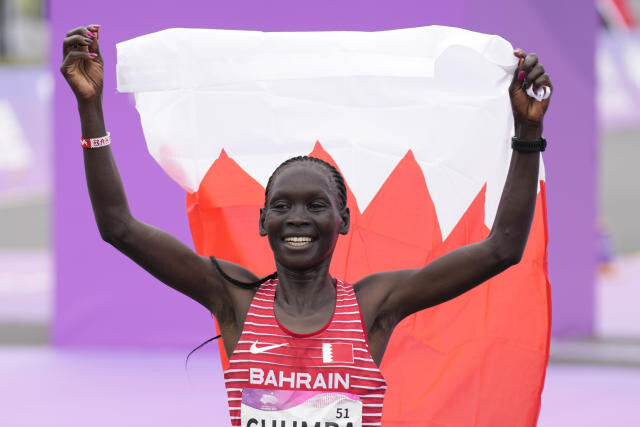
She followed it up with a bronze medal during the Shanghai Marathon, China, in November clocking 2:22:20.
Chumba has also won titles in the Abu Dhabi Marathon (2:20:41) in 2022 and the Copenhagen Half Marathon (1:06:11) in 2017.
In 2021 Gebreslase made her debut in the marathon with an overwhelming victory at the Berlin Marathon, Germany, clocking 2:20:09.
She followed it up with a bronze medal in the Tokyo marathon in 2022 (2:18:18) before winning the title at the 2022 World Athletics Championship (2:18:11) in Eugene, USA.
The 29-year-old also has a title in the Bahrain Half Marathon (1:05:36) and a silver medal in the Ras Al Khaimah marathon (1:05:51).
The two will be joined by the 2020 Napoli half marathon champion Violah Lagat and Kenyan-born Romanian Delvine Meringor.
Meringor won a title at the 2022 Los Angeles Marathon, USA, where she clocked 2:25:04.
The local contingent will be led by Ai Hosaoda who boosts a personal best of 2:21:42. She will be joined by 2016 Japanese champion in the 10,000m Suzuki Ayuko.
(02/16/2024) ⚡AMPby Teddy Mulei
Nagoya Women's Marathon
The Nagoya Women's Marathon named Nagoya International Women's Marathon until the 2010 race, is an annual marathon race for female runners over the classic distance of 42 km and 195 metres, held in Nagoya, Japan in early March every year. It holds IAAF Gold Label road race status. It began in 1980 as an annual 20-kilometre road race held in...
more...Noah Lyles, Christian Coleman set for major showdown at US Track & Field Indoor Championships
Noah Lyles and former world 100m champion Christian Coleman are set for an epic clash will at the US Track and Field Indoor Championships in New Mexico this weekend.
Multiple world champion Noah Lyles is set for a thrilling battle with former world 100m champion Christian Coleman at the US Track and Field Indoor Championships taking place in New Mexico this weekend.
Lyles, Coleman and 2020 World Indoor tour winner Ronnie Baker will be the star attractions in the 60m sprint showdown that also has the likes of Demek Kemp, Ray Wells with, Kendal Williams, Brandon Carnes, Coby Hilton, Pjai Austin, Lawrence Johnson, Zachaeus Beard and Kasaun James.
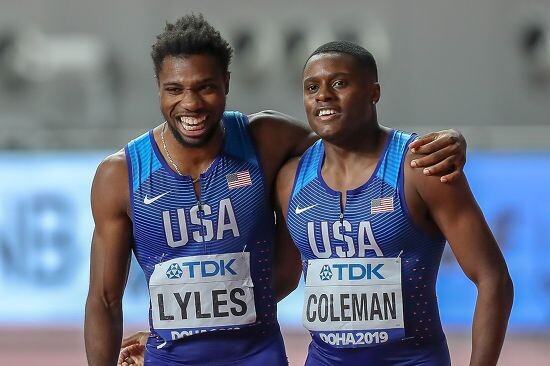
The three-time world 200m champion is fresh from winning the New Balance Indoor Grand Prix in Boston, where he clocked a personal best of 6.44 seconds, and will line up as the athlete with the best time over 60m from the lot.
Lyles clocked 6.34 seconds, a world record in the event at the US Indoor Championships in Albuquerque, New Mexico, in 2018 while Baker managed a personal best time of 6.40 seconds, finishing behind Coleman and the three are set for an epic clash once more.

The 27-year-old claimed he is in good shape after winning in Boston while revealing his lofty ambitions for the World Indoor Championships set to take place in Glasgow, Scotland next month.
“World lead, meet record. Now let’s go out there and get a world indoor medal in Glasgow. Last year I went out there and won three gold medals. This year I want to get four. And if I don’t get four, I am going after three world records," he told the Guardian after the race.
Lyles is seeking to stay in great shape as he gears up for the Paris 2024 Olympics where he has declared his intentions to win up to four gold medals while also eyeing Usain Bolt’s 200m world record.
(02/16/2024) ⚡AMPby Joel Omotto
2026 USAFT Indoor Championships
The 2026 USATF Indoor Championships, presented by Prevagen, are set to take place on February 22-23 at the Ocean Breeze Athletic Complex in Staten Island, New York. This premier event will feature the nation's top track and field athletes competing for national titles and spots on the U.S. team for the 2025 World Indoor Championships in Nanjing, China. The Ocean...
more...Irine Cheptai to make marathon debut at the 2024 Haspa Marathon
The 2017 World Cross-country champion Irine Cheptai will make her full marathon debut at the 38th edition of the Haspa Marathon in Hamburg.
Reigning Copenhagen Half Marathon champion Irine Cheptai will make her full marathon debut at the 38th edition of the Haspa Marathon on Sunday, April 28.
The 2017 World Cross-country champion has competed on all surfaces from the track to cross-country and she will finally make her debut in the 42km distance in April.

Cheptai finished second at the 2023 Valencia Half Marathon and third at the Annual Charity Run in Saudi Arabia.
The Commonwealth 10,000m silver medalist opened her season with an eighth-place finish at the 10K Valencia Ibercaja and she now gears up for the 42km distance where she hopes to impress. Other notable debutants at the event will be Nelly Jepchumba and Roselida Jepketer.
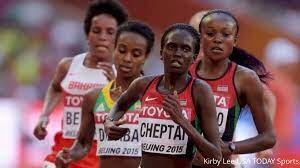
Meanwhile, Winfridah Moseti and Sharon Chelimo from Kenya headline the field. Moseti took second place at the 2023 Frankfurt Marathon with a time of 2:20:55, while Chelimo also put in a strong performance with a time of 2:22:07.
The Ethiopian charge will be led by Kidusan Alema while Canada’s Natasha Wodak (Canadian record holder with a personal best of 02:23:12) will also be in the mix seeking top honors. Margaret Wangari from Kenya with a time of 2:23:52 also seeks to spoil the party.
Portuguese runner Jessica Augusto (02:24:25) will also be at the start again, having won the marathon back in 2017.
“We are excited to see what awaits us at the 38th Haspa Marathon Hamburg. Hamburg has proven to be a springboard for great runners in the past, as we saw for example with Eliud Kipchoge, who once made his debut in Hamburg. So it remains exciting to see which new talents will prove themselves on the track this year,” race organizers said.
(02/16/2024) ⚡AMPby Abigael Wuafula
Haspa Marathon Hamburg
The HASPA MARATHON HAMBURG is Germany’s biggest spring marathon and since 1986 the first one to paint the blue line on the roads. Hamburcourse record is fast (2:05:30), the metropolitan city (1.8 million residents) lets the euphoric atmosphere spill over and carry you to the finish. Make this experience first hand and follow the Blue Line....
more...David Rudisha named ambassador for WIC Glasgow 24
David Rudisha has been named World Athletics Indoor Championships Glasgow 2024 ambassador inspiring athletes for the event on 1-3 March.
World 800m record holder David Rudisha has been appointed as the World Athletics ambassador for the upcoming World Athletics Indoor Championships set to dazzle Glasgow from 1-3 March 2024.
The Kenyan legend, a revered figure in athletics with two Olympic gold medals and two World Championships titles in his storied 800m career, is no stranger to the city, having clinched a silver medal at the 2014 Commonwealth Games held there.

David Rudisha has been named World Athletics Indoor Championships Glasgow 2024 ambassador inspiring athletes for the event on 1-3 March.
World 800m record holder David Rudisha has been appointed as the World Athletics ambassador for the upcoming World Athletics Indoor Championships set to dazzle Glasgow from 1-3 March 2024.
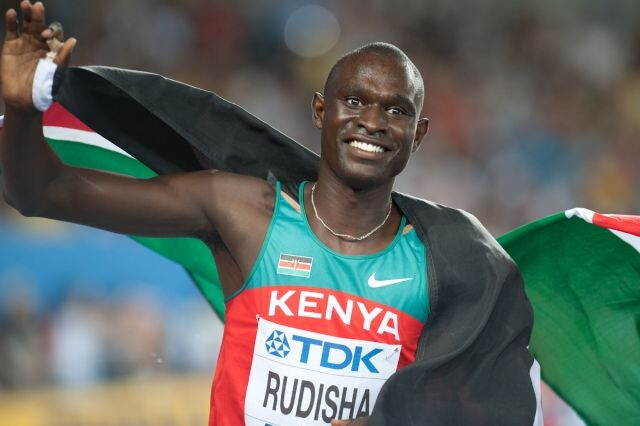
The Kenyan legend, a revered figure in athletics with two Olympic gold medals and two World Championships titles in his storied 800m career, is no stranger to the city, having clinched a silver medal at the 2014 Commonwealth Games held there.
The 35-year-old's career has been punctuated by remarkable achievements, notably his world record-breaking performance of 1:40.91 at the London 2012 Olympics.
With this ambassadorship, Rudisha is poised to inspire a new generation of athletes at the first global championships of 2024.
"I really feel honored," Rudisha remarked, reflecting on his successful career and his role in encouraging young talents to aspire to global accolades.
Rudisha's fond recollections of competing in the UK, and particularly in Glasgow, add a personal touch to his ambassador role.
He recounted the 2014 Commonwealth Games with fondness, praising the supportive and kind-hearted Glasgow crowd.
"The people were very kind and supportive. I got silver in that race, but it was clear that the crowd supported and cheered for every athlete, regardless of the position they finished," he said.
As the world gears up for the Paris 2024 Olympics, Rudisha highlighted the importance of a strong start to the competitive season.
"The Olympics is at the helm of any sport," he asserted, underscoring the significance of the Games in an athlete's career.
His anticipation for the championship in Glasgow is not just as an ambassador but also as a fan, especially for events close to his heart like the 800m and 400m races.
He expressed his excitement to see athletes like Femke Bol, who has already posted impressive times early in the season.
The World Athletics Indoor Championships Glasgow 2024 promises to be a spectacle, with over 700 athletes from around 130 nations vying for medals across 26 disciplines.
(02/15/2024) ⚡AMPby Festus Chuma
World Athletics Indoor Championships
World-Class Competition Lands in China: 2025 World Athletics Championships The global spotlight shines on China as it hosts the 2025 World Athletics Championships, bringing together the planet’s most elite runners, jumpers, and throwers. This prestigious event, organized by World Athletics, represents the pinnacle of track and field competition—where national pride, personal records, and world titles are on the line. ...
more...Ethiopian Gotytom Gebreslase will run in world’s largest women’s marathon
The Nagoya Women’s Marathon announced today the world’s top women athletes who will compete in the 13th edition of the race to be held on Sunday, March 10, 2024.
The leading names in the field are Gotytom Gebreslase of Ethiopia, world champion in Oregon in 2022 with a personal best of 2:18:11 and Silver Medallist in Budapest in 2023, and Eunice Chebichii Chumba of Bahrain, Asian Games Champion of 2023 in Hangzhou, who has a personal best of 2:20:02.
The competitor list also includes many outstanding international athletes such as Delvine Relin Meringor of Romania, Violah Cheptoo of Kenya, Giovanna Epis of Italy, Eloise Wellings of Australia, Camille French of New Zealand, and others representing China and Puerto Rico.
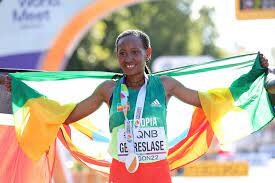
The local athletes who will face them from Japan are Ai Hosoda, the third-place finisher in the Marathon Grand Championship, Japan’s domestic qualifier for the 2024 Paris Olympics, who set a personal best of 2:21:42 in the 2022 London Marathon, the 2020 Tokyo Olympians Ayuko Suzuki in the marathon and Yuka Ando in the 10,000m, and 2023 Budapest World Championship competitor Rika Kaseda, all of whom have personal best records under 2:22 and will be vying for the final spot in Japan’s marathon team for the Paris Olympics.
Anyone who beats the Japanese record of 2:18:59 – just set this January for the first time in 19 years – will qualify for Paris.

The pacemakers driving the high-speed race include Sheila Chepkirui of Kenya, who has a personal best of 2:17:29.
The Nagoya Women’s Marathon is not only one of the world’s fastest elite competitions as a World Athletics Platinum Label road race, but it is also known as the world’s largest women’s marathon and a unique festival to celebrate women runners. All finishers will receive an event-exclusive Tiffany & Co. pendant as a token of their achievement.
The 2024 race will take place in Nagoya, Japan, on March 10 with 20,000 runners, while a virtual race is currently held from February 10 through March 31, which can be participated in anywhere in the world via a running app.
(02/15/2024) ⚡AMPby AIMS
Nagoya Women's Marathon
The Nagoya Women's Marathon named Nagoya International Women's Marathon until the 2010 race, is an annual marathon race for female runners over the classic distance of 42 km and 195 metres, held in Nagoya, Japan in early March every year. It holds IAAF Gold Label road race status. It began in 1980 as an annual 20-kilometre road race held in...
more...Rotterdam Marathon to honor Kelvin Kiptum who was set to be star attraction at this year’s race
Organizers of the Rotterdam Marathon have planned a special tribute for Kelvin Kiptum who was eyeing history in the Dutch city in April before his tragic death.
Rotterdam Marathon plans to have a special tribute for world record holder Kelvin Kiptum who died alongside his coach Gervais Hakizimana following a road accident on Sunday.
Kiptum had been preparing for the Rotterdam Marathon on April 14 where he had declared his intentions to become the first man to break the two-hour barrier in an official marathon.
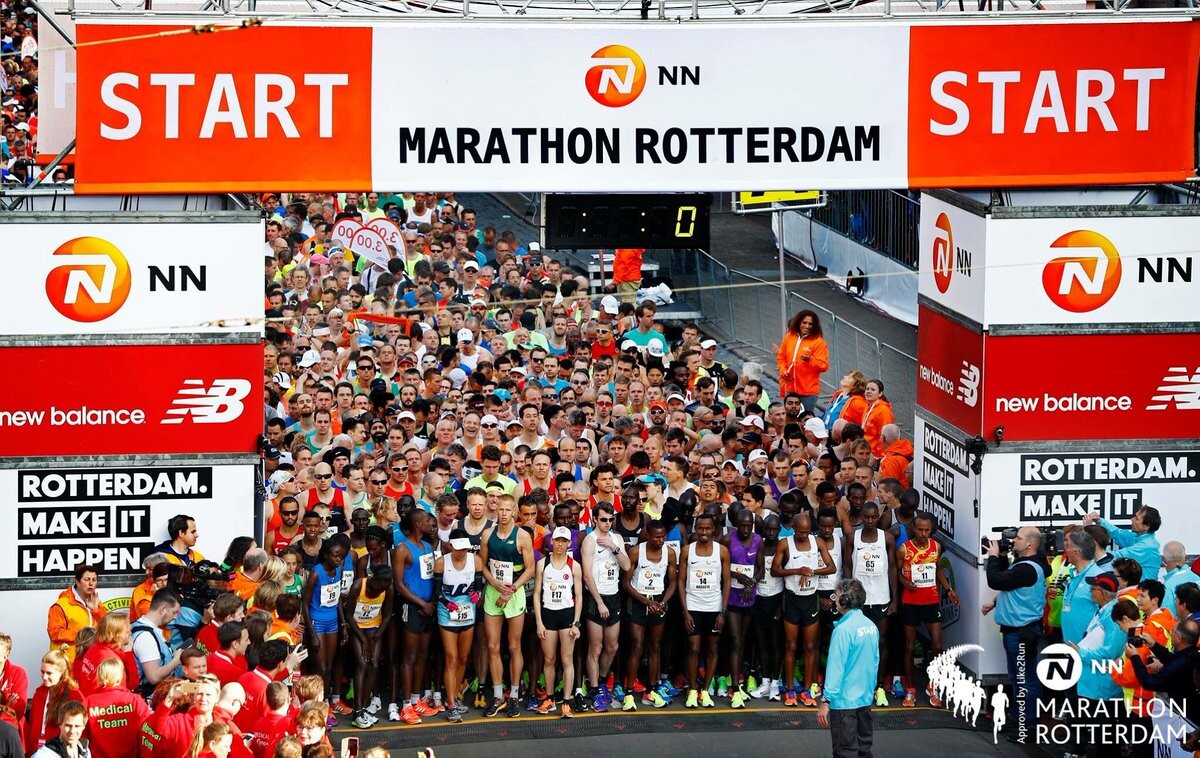
Following his death, the race has now been robed of its star attraction but organizers plan to honor him during the event.
Organizers have announced that all the over 50,000 runners who have signed up for the race will wear a special ribbon in memory of Kiptum on race day.
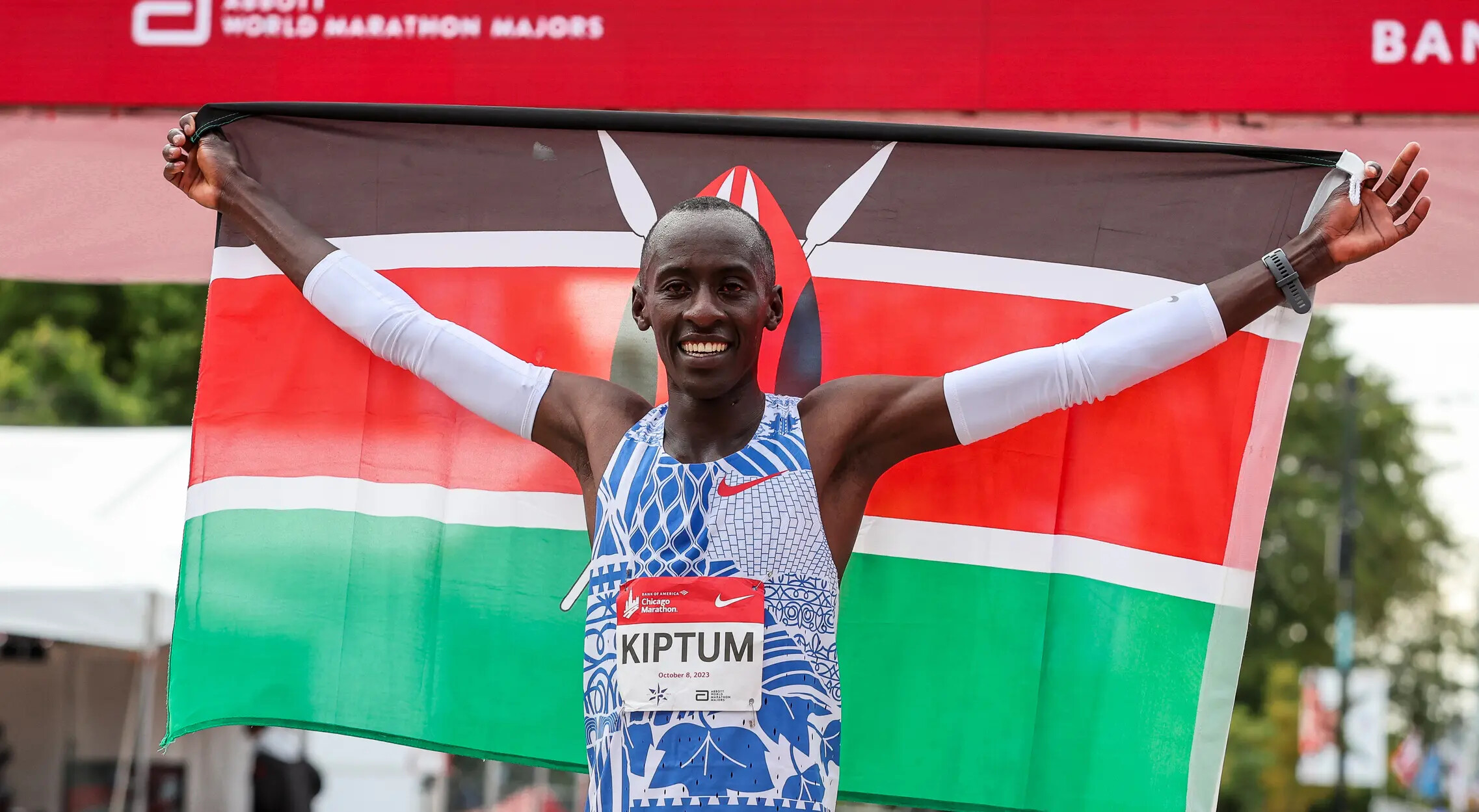
The NN-organized event had expressed its excitement when Kiptum agreed to grace this year’s race in what was going to be his first race before he heads to the Paris 2024 Olympics.
“Continuing the rich history of records is another aim: national and European records were broken in recent editions but Rotterdam is also the fourth city worldwide when it comes to marathon world records,” Rotterdam marathon said on its website in November.
“Attracting the ambitions of world record holder for the 2024 edition is also part of that plan. Kiptum knows the NN Marathon Rotterdam. Back in 2019 he made his first appearance here as a pacer! He was keen on returning but Covid showed up.
“He should have started in April 2022 but some small injuries kept him away from his marathon debut. In the past 10 months, he wrote history but he did not forget he wanted to return to Rotterdam.”
Kiptum had been working towards lowering his own world record of 2:00:35, set in Chicago last October in the Dutch city, and also possibly complete an official marathon under two hours before death struck.
“He had told me that he was feeling his body was in good shape and ready to run 1:59 or 1:58,” his father Samson Cheruiyot said on Monday while recounting his last conversation with his son.
(02/15/2024) ⚡AMPby Joel Omotto
NN Rotterdam Marathon
The marathon has been the biggest one-day sporting event in the Netherlands for many years in a row with over 35000 athletes professionals inclusive. The world's top athletes will at the start on the bustling coolsingel, alongside thousands of other runners who will also triumph,each in their own way.The marathon weekend is a wonderful blend of top sport and festival. ...
more...Former world record holder Henry Rono has passed away at the age of 72
Kenyan track legend Henry Rono, famed for setting four world records, has passed away at 72 in Nairobi, leaving a lasting legacy.
Kenya’s athletics fraternity is in a state of mourning following the death of track legend Henry Rono who passed away on Thursday morning in Nairobi.
Rono, who was 72 at the time of his death, had been admitted to Nairobi South Hospital for the past ten days.
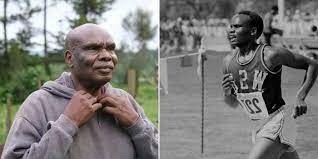
His illustrious career in the 70s and 80s saw him dominate the track, setting an astounding four world records within just 81 days.
"Athletics Kenya is saddened to announce and notify the public of the demise of former Athlete Mr. Henry Rono which occurred today at 10.30am," a statement from the organization read.

Rono's achievements on the track have cemented his legacy as one of the greatest runners of his time, particularly as the former record holder of the 3000 meters steeplechase, a record he held for over a decade.
Rono also twice set the world record for the 5000 meters, first in 1978 and then again in 1981.
The athletics community, both in Kenya and globally, has been pouring in tributes for the late Rono.
"On behalf of Athletics Kenya Executive Committee and athletics fraternity, we wish to convey our sincere heartfelt condolence to his family, friends, and the entire athletics fraternity during this trying moment. May his soul rest in eternal peace," the statement added, reflecting the deep sense of loss felt across the athletics world.
Rono's journey in athletics was marked by remarkable achievements, including gold medals in the 10,000m and 3,000m steeplechase at the Commonwealth and African Games in Edmonton and Algiers, respectively.
His tenure at Washington State University was historic, as he became only the third person, after Gerry Lindgren and Steve Prefontaine, to win the National Collegiate Athletic Association (NCAA) Men’s Cross Country Championship three times, in 1976, 1977, and 1979.
His winning time of 28:07 in 1976 still stands as the fastest 10,000m cross country mark in NCAA history.
Despite his global acclaim, Rono never competed at the Olympics, a consequence of Kenya's boycotts of the 1976 and 1980 Games.
By the time of the 1984 Olympics, Rono had retired from competition.
Born in Kiptaragon, Kabsabet in Nandi County, Rono returned to Kenya in 2019 after spending 33 years living in the USA.
(02/15/2024) ⚡AMPby Festus Chuma
Lots of Personal Bests set at the 30th KATA Time Trial held Feb 14
The monthly KATA (Kenyan Athletics Training Academy) time trial was held February 14 in Thika Kenya. Most athletes ran very well lowering their personal best with huge margins.
Raphael karita won the 10 km race in a scintillating time of 29:20 lowering his previous time by 32 seconds. Karen waithera was equally impressive taking the crown in the woman race in a time of 33:59. She lowered her previous time by 11 seconds.
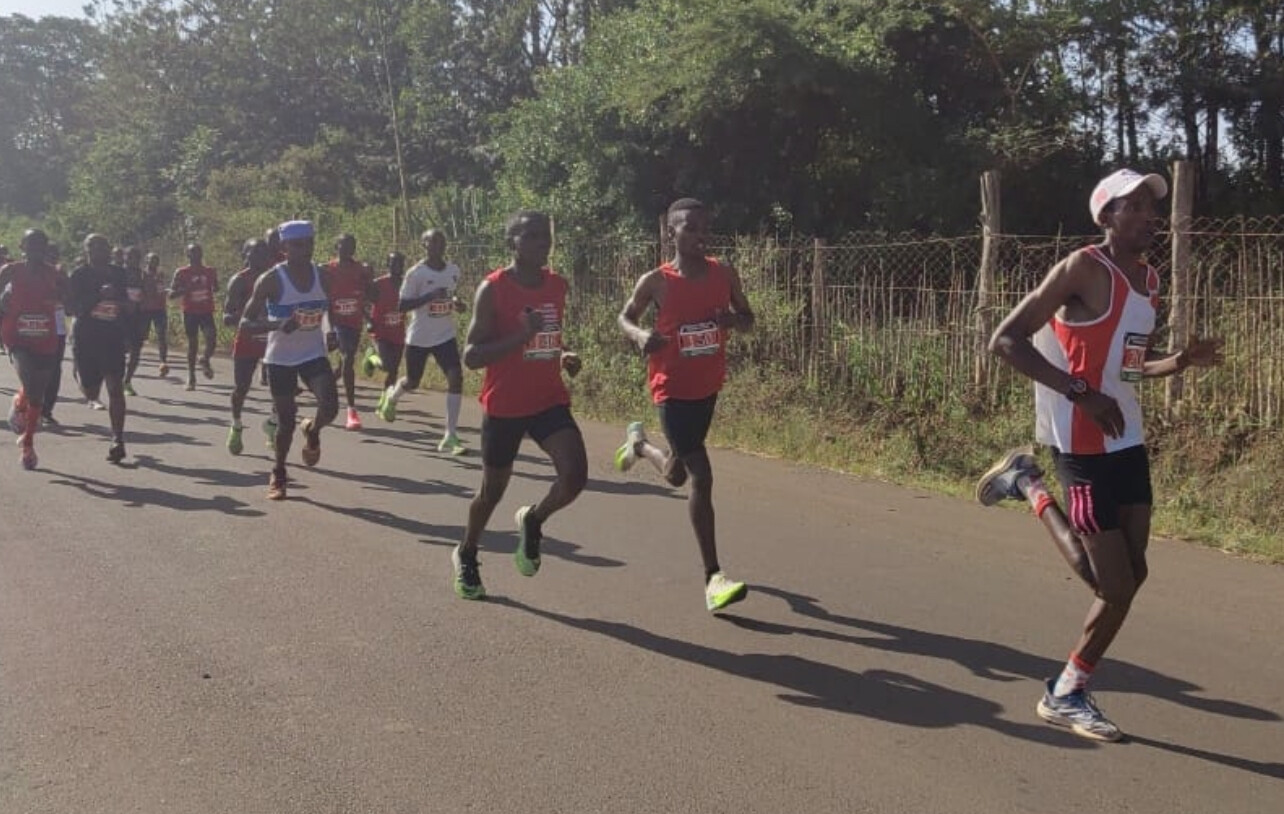
She was followed by Jacinta mwende who clocked 35:10 lowering her personal best by 57 seconds. Lois wambui was third in a time of 35:29 improving her previous time by 51 seconds. Kevin ragui won the 5k men race in a time of 14:53 which was 19 seconds of improvement from his previous time. He was followed by Charles ndirangu who posted a personal best of 15:42 lowering his previous time by 20 seconds. Lilian musenya gave KATA family smile and tears of joy at the same time by winning the 5k race in a time of 19:07 improvement of 11 seconds from her personal best. Her time was indeed impressive because she has been unwell.
The overall performances were very impressive. We have posted improvement in all aspects of our athletes. We performed in the schocing heat and we prevailed. This is a clear indication that we are on the right track. As a team we have managed to exercise and apply the strength and the power of information and knowledge. Getting athletes to understand the art and the dynamic of training bore fruits. Scintillating indeed.
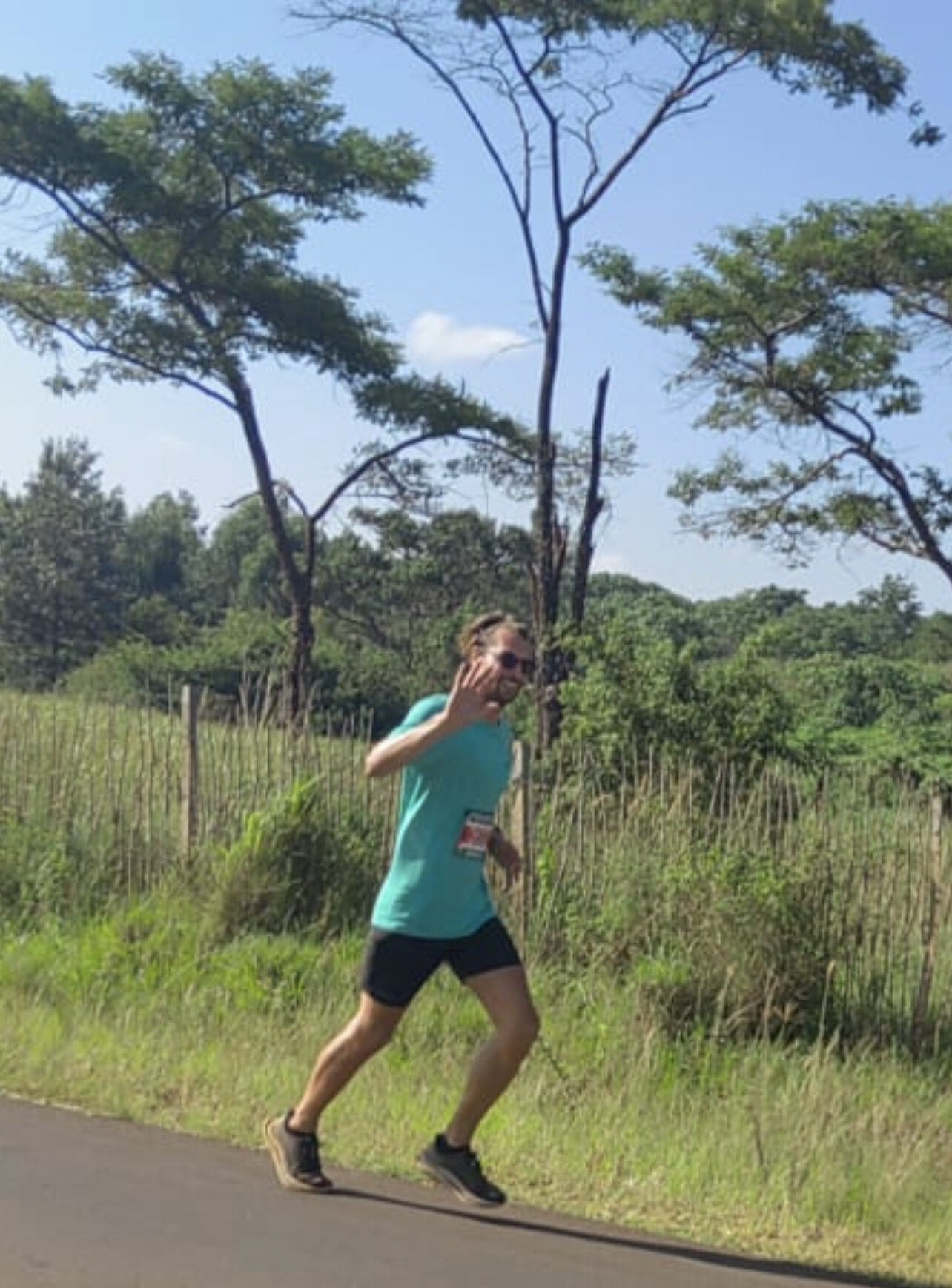
KATA's guests from France also participated, Arthur and Marie ran the 5k.
The next KATA Time Trial (#31) is set for March 13, 2024
MEN 10k
1 Raphael karita 24 150 29:20
2 Martin ndungu 24 143 30:36
3 Zacharia kirika 22 158 31:11
4 Boniface mungai 24 191 31:17
5 Anthony Mukundi 35 488 31:30
6 Kenneth gichoya 26 442 31:39
7 Fredrick kiprotich 23 250 32:18
8 Levi's kuria 22 164 33:06
9 Vincent kosgei 29 133 33:10
10 Alfred kamande 26 198 33:27
11 Bernard gicheha 35 188 33:52
12 Ramadan ambani 25 159 35:27
13 Charles ndirangu 64 150 39:11
WOMEN 10k
1 Karen waithera 37 130 33:59
2 mwende Jacinta 22 248 35:10
3 Lois wambui 23 246 35:29
4 Jane wanja 33 445 37:06
5 Virginia wanjiru 22 249 37:31
MEN 5k
1 Kelvin ragui 21 247 14:53
2 Charles ndirangu 23 479 15:42
3 peter mburu 23 448 15:43
4 Amos chirchir 23 146 15:55
5 Dickson mangera 29 435 16:19
6 Joseph wanjiru 35 251 16:45
7 Jeremiah obura 18 440 17:18
8 Geoffrey ngama 50 205 17:31
9 Colins maina 20 152 17:44
10 peter Mukundi 24 180 17:46
11 Brian njenga 20 253 17:57
12 John mwangi 35 199 18:31
13 Ismael mbugua 23 455 20:35
14 Arthur legourd 31 202 20:58
15 Alex kamau 21 254 23:45
WOMEN 5k
1 Lilian musenya 23 162 19:07
2 Susan njuu 36 188 19:37
3 Marie barin 28 444 24:48
(02/14/2024) ⚡AMPby KATA Coach John
KATA Time Trial Series
Welcome to the KATA Monthly Time Trial Held at the Kenyan Athletics Training Academy in Thika, Kenya, the KATA Monthly Time Trial is a unique and inclusive event designed to support runners of all levels in achieving their goals and showcasing their fitness. This event offers both 10K and 5K distances on an accurate, certified course, providing participants with...
more...Running date ideas
Sometimes staring across a table at someone you’ve only just met, as you delicately attempt to eat in a way that won’t give them the ick, can be too much pressure for a date early on in a relationship.
Instead of meeting at a restaurant, why not meet for a first date run instead? Other than having to make your debut in lycra, there’s not much else to put you off a running date—unless, of course, you’re more into your 4K TV than your 5K runs.
Choose your running date route
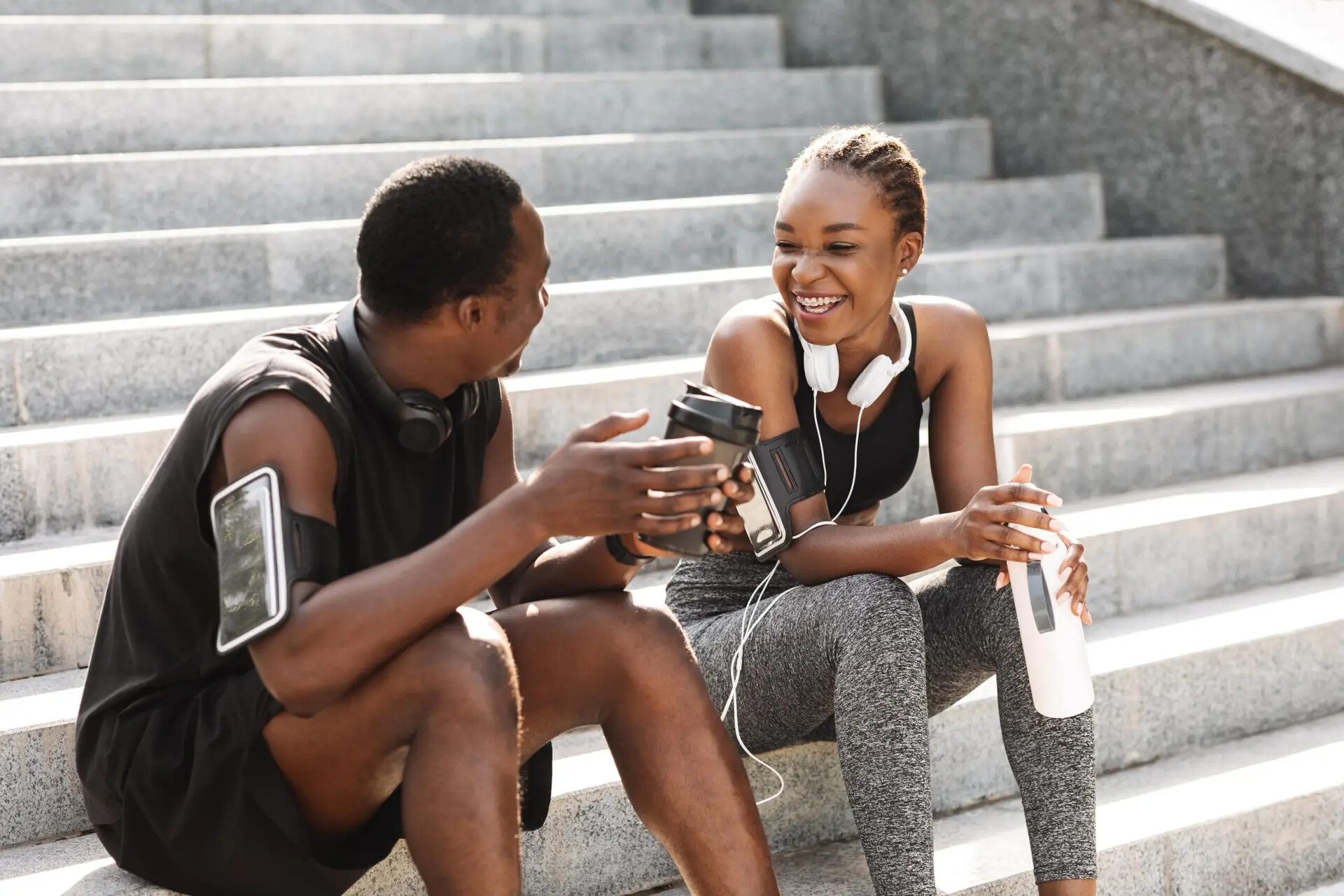
First things first—you’ll have sussed out if your date is into running during those first Bumble chats, or at an early in-person meet-up, so suggesting an active date shouldn’t come as too much of a surprise.
But be specific—rather than just saying “shall we go for a run?” suggest a route, a meeting point and even, if you like to plan ahead, a spot for a little post-run refuel.
It might be a nice date idea to explore a new area together as you run. Perhaps look for a local park in a part of town neither of you know well. Just make sure that there are good running routes and most importantly, nice resturants or cafes to stop in after.
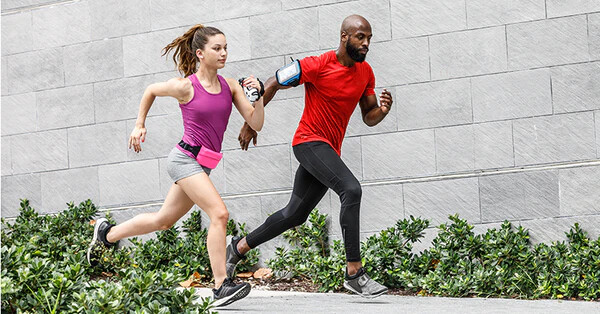
You don’t want the run to be so short that it’s over too soon, or too long that it becomes hard work and not enjoyable. A 5k route feels about right for a first date run.
How to start a first date run
Arrange to meet somewhere that you can warm up together first. You can get the small talk out of the way and break the ice, so that when you do set off you can settle into a more natural kind of conversation.
Perhaps for the warm up stretch, you could both alternately suggest exercises as a cute way of getting to know each other. Make sure you get those hamstrings nice and loose!
It’s a good idea for one person to take the lead and navigate during your running date—you can swap next time so it’s equal. But this means you both aren’t looking at your phones and potentially falling out over directions when you’ve only just met!
Have a look at the route together before you set off, so you know what to expect. And be willing to compromise or change your plans if your date doesn’t fancy the uphill section. And once you do set off, set a good pace. Go slow enough to be able to comfortably chat as you go.
Remember this is a running date, not a race
If you’re a sporty person, it can be easy to turn a first date run into a competition, even without meaning to. You want to show how fit you are, how fast you are—you want to impress your date, it’s only natural! But you’re not really here for a workout–though that is a nice bonus–it’s a date, and getting to know each other should be the priority. Don’t run off ahead, and if your date is struggling to keep pace, slow down. Don’t be afraid to walk for a bit of the date run too, particularly if there’s nice scenery.
How to make a running date more challenging
This might be best saved for a third or fourth date, but setting goals and challenging each other can keep running dates feeling fresh—even if it isn’t the first time. Running with a partner can be a great way to push yourself to reach new goals. Before you start your date, set a goal for the distance or time you want to run, and challenge each other to reach it. This can help motivate you both to push yourself and make the experience more enjoyable.
How about incorporating interval training? Interval training involves alternating between periods of high-intensity exercise and recovery. This can be a fun way to mix up your run and challenge yourselves. You can sprint for a short distance, walk, then sprint again.
Another good idea for your running date is to make it a game: Try playing tag or running backwards for short distances. You can also add challenges like stopping to do push-ups or jumping jacks every kilometer. Yes, this is fun for some people!
Running date chat: what do you talk about as you go?
There’s a lovely cadence to running, and once you relax into it, conversation can begin to flow without having to really think about it. If you’re struggling though, a great first date conversation starter could be asking about their fitness journey. Have they always enjoyed running? Have they ever completed a marathon? What do they like to listen to as they run?
And on that note—if you don’t fancy chatting on your running date, you could always make a playlist that you both listen to. Sharing music can be a nice way to share something of yourself and express your personality. Just keep it upbeat and energetic!
Plan a post-run treat
The date doesn’t end when you cross the imaginary finish line! Hopefully you’ll have identified a cute spot to recharge and refuel in advance, or even spied somewhere during the run that you can head back to. Take a leisurely walk there, cooling down as you go and then enjoy treating yourself. You deserve it! Hopefully, if this is a first date run, you’ll have bonded so much during the running part of the date, that by the time you get to the sitting down opposite each other part of the date, you’ll be able to just relax and enjoy each other’s company.
(02/14/2024) ⚡AMPby Bumble
Masai, Gebru to battle it out at Sevilla Marathon on Sunday
Vienna Marathon champion Magdalene Masai will battle Azmera Gebru at the Sevilla Marathon on Sunday even as the organizers promise to honor Kelvin Kiptum.
The organizers will observe a 42-second silence in respect to Kiptum, the world marathon record holder who died on Sunday in a road accident alongside his coach, Rwandese Gervais Hakizimana.
“Before the start of the marathon on Sunday, we will pay tribute to Kelvin Kiptum, the world record holder, and his coach, who died in a traffic accident. We will observe 42 seconds of silence, as many as kilometers of the race, in his memory,” the organizers said in a statement.
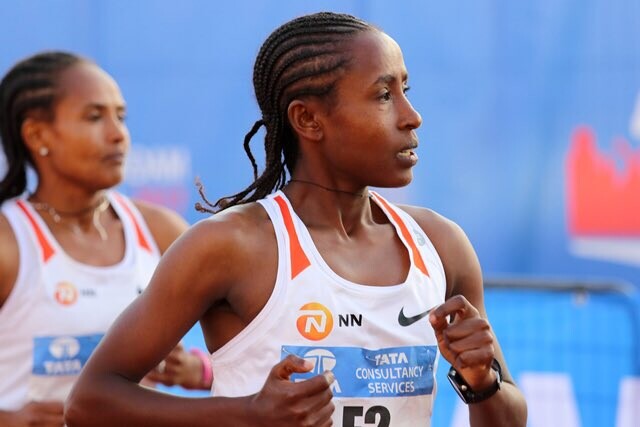
Masai won the Vienna Marathon in April last year in 2:24:12.
She also won the 2019 Toronto Waterfront Marathon in Canada (2:22:16) and was second at the Hasper Marathon in Hamburg, Germany, in 2:26:02.
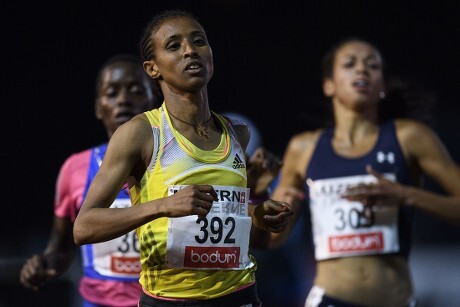
The 31-year-old is also a 2015 World Challenge gold medallist in 3,000m steeplechase from Dakar, Senegal, where she clocked 9:31.55.
Joining her will be 2018 Paris Half Marathon champion Antonina Kwambai. She clinched the Paris title in 1:08:07.
Gebru, from Ethiopia, won silver during the 2011 World U-20 Cross Country Championships in Punta Umbria, Spain, clocking 18:54.
She is also an African U-20 champion in the 3,000m from the 2011 Africa Junior Championships in Gaborone, Botswana, clocking 9:11.84.
The duo will face stern competition from Spanish champion Meritxell Soler, the Cursa dels Nassos (Barcelona) 10km champion (32:37).
Leading the elite men’s race is defending champion Gadisa Shumie of Ethiopia who won last year’s edition in 2:04:59.
He will be up against 2019 Gran Canaria Marathon champion Julius Kiprono, 2023 Hannover Marathon bronze medallist Fredrick Kibii, Collins Kemboi and 2023 Zurich Marathon San Sebastian champion Benson Tunyo.
(02/14/2024) ⚡AMPby Teddy Mulei
Zurich Marathon Sevilla
This urban, flat, fast and beautiful brand new race course will drive athletes through the most beautiful monuments of the city. Zurich Maraton de Sevilla brings the unique opportunity to brake the Best personal result over the mythical distance to all the athletes, professional or age groupers, in one of the most perfect international marathon circuits. This fast marathon takes...
more...Striking similarities between Kelvin Kiptum and Samuel Wanjiru who both died in tragic fashion
Pulse Sports explains how the careers of marathon sensations Kelvin Kiptum and Samuel Wanjiru followed the same path before they met their death in tragic fashion.
The world is still coming to terms with the untimely death of world marathon record holder Kelvin Kiptum, who passed away alongside his coach, following a road accident on Sunday.
Kiptum and his Rwandan coach Gervais Hakizimana had big plans for the year that included an attempt at running a sub-two at the Rotterdam Marathon as well as winning Olympics gold but that is now water under the bridge.
The athlete’s death has robbed not just Kenya but the world an incredible talent who was set to dominate the marathon, bringing back memories of the late Samuel Wanjiru, who passed away similarly in tragic fashion in May 2011.
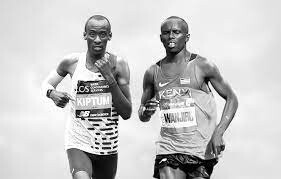
The two men’s careers and the manner in which they died have very striking similarities which will leave many surprised.
Died in tragic fashion
While Kiptum lost control of his car before hitting a tree, along the Elgeyo Marakwet-Ravine road, killing him on the spot, Wanjiru died following a mysterious fall off a balcony at his house in Nyahururu on May 15, 2021.
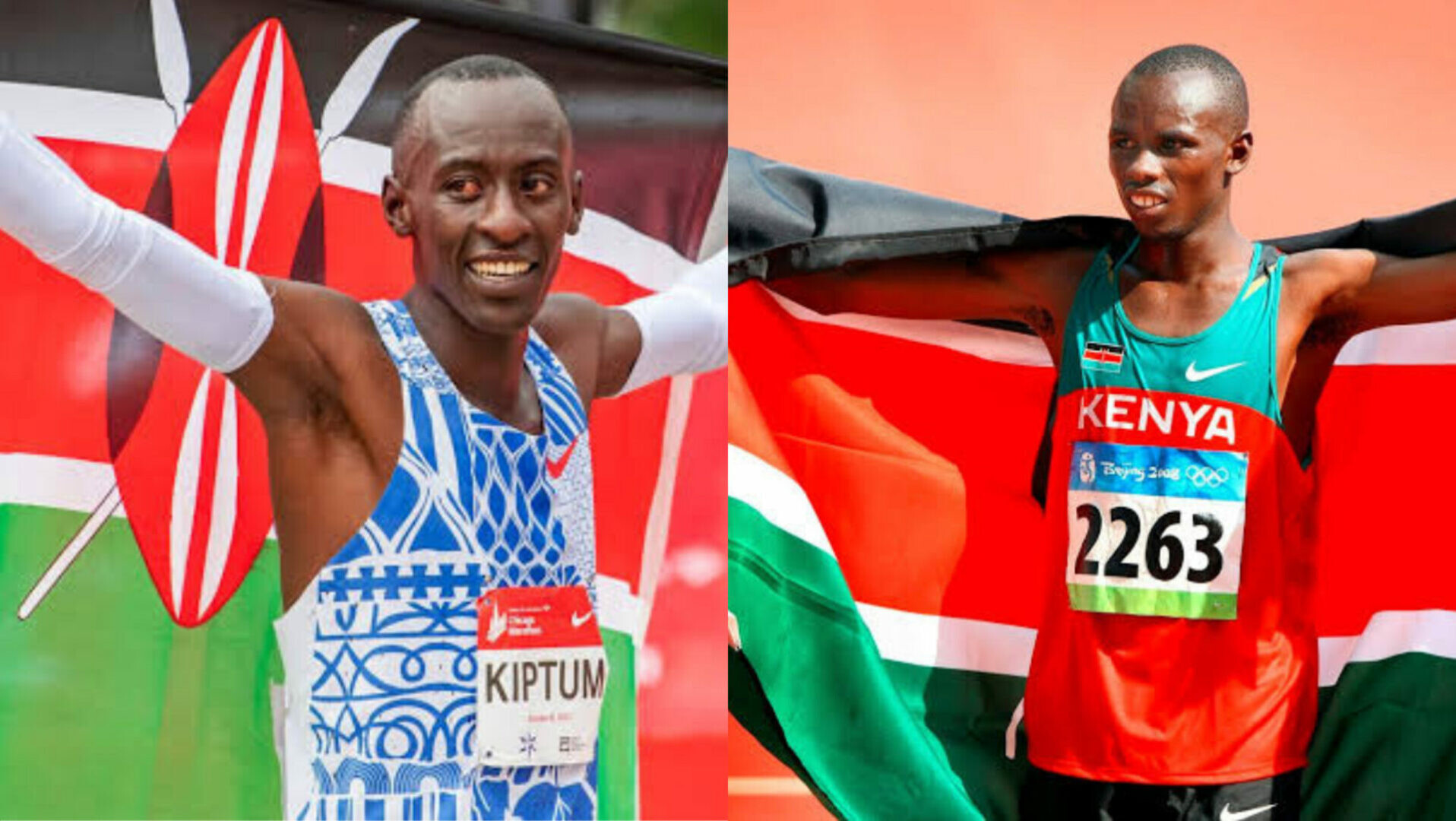
Just like Kiptum, the incident happened at night and his death remains a mystery that is yet to be unraveled to date.
Both died at 24
What is more heartbreaking is that the two runners died aged just 24 when they were just getting started.
Wanjiru had won the Chicago Marathon in 2009 and 2010 as well as the London Marathon (2009).
He was also the reigning Olympic marathon champion after winning gold in Beijing 2008 in an Olympic record time of 2:06:32.
For Kiptum, he held three of the six fastest times by the time he died, having broken the world marathon record in Chicago last year, clocking 2:00:35.
That came after an incredible win in London last April where he timed 2:01:25, coming close to the world record. Kiptum had run the fastest debut marathon in history when he won in Valencia in December 2022 in a time of 2:01:53.
Careers just taking off
Following their heroics in a short period of time, the two had the world at their feet by the time they died.
Wanjiru had been seen as the next big thing in marathon and was tipped to break the world record as well as retaining his Olympics gold in London the following year but he did not live to do it.
Kiptum was similarly tipped to be the man to take the mantle from legendary Eliud Kipchoge, especially after his astonishing run in London.
He was also seen as the man who would make history by running an official marathon under two hours and considered favourite to win Olympics gold in Paris, France this year.
Course records in London
In April 2009, Wanjiru won the London Marathon in a time of 2:05:10, a new personal record and also a new course record. That achievement saw him state that he was going to break Haile Gebrselassie's world record in the near future.
Fourteen years later in the English capital, Kiptum did the unthinkable, winning decisively with the second-fastest mark in history at 2:01:25, a course record which was only 16 seconds outside Kipchoge’s world record.
He would break the world record six months later in Chicago.
Sub-two-hour ambitions
Back in February 2008, Wanjiru declared he would become the first man to run a marathon under two hours.
"In five years' time, I feel capable of clocking a sub two hour-time for the marathon,” Wanjiru said at the Granollers Half Marathon which he won.
Meanwhile, since last year, the world has been waiting for Kiptum to run an official marathon under two hours.
He had already expressed his intentions of doing it at the Rotterdam Marathon in April.
“He had told me that he was feeling his body was in good shape and ready to run 1:59 or 1:58,” his heartbroken father Samson Cheruiyot told Citizen TV on Monday while recounting his last conversation with his son.
Last race in Chicago
The other striking similarity between Wanjiru and Kiptum is that Chicago Marathon was their last race before they died.
Wanjiru went to Chicago in October 2010 bidding to retain his title but a stomach problem had affected his preparations and his camp were just hoping for a podium finish.
He, however, surprised them when he defended his crown in a time of 2:06:24.
For Kiptum, Chicago was his third race in under a year and while he had set incredible times, not many expected a world record.
He delivered in style, clocking 2:00:35, to become the first man to break the 2:01 barrier, igniting hope that a sub-two-hour race was on the cards before death struck.
(02/14/2024) ⚡AMPby Joel Omotto
Should you run the half-marathon distance in training?
Marathoners won't typically run 42 kilometers in training, but should half-marathoners follow the same rule?
The unwritten rule in marathon training is to never run the marathon distance. But should the same rule apply to the half-marathon?
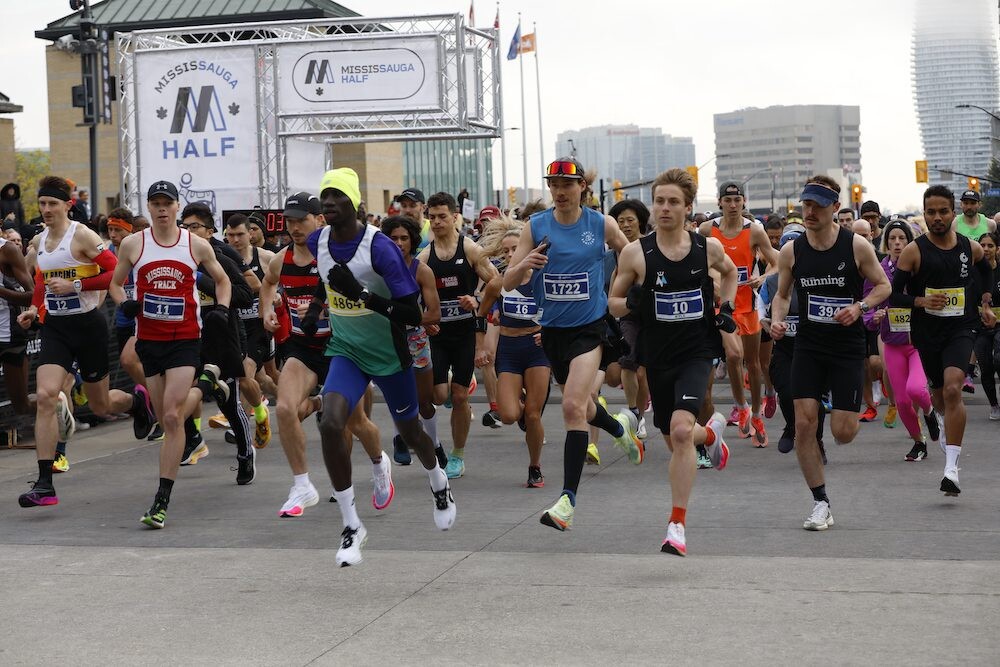
Most marathon training plans shy away from touching 42.2 kilometers, and for good reason. Running the marathon distance in training could result in injury and compromise recovery. Those training for a marathon focus more on building mileage and strength to prepare their body to tackle the distance on race day.
For example, someone training for a 3:30 marathon may build their mileage up to 60 to 80 kilometers a week, spread out across seven days. Building mileage over time helps build your endurance without subjecting your body to the full force of race day.

The same principles apply to half-marathon training, albeit with some subtle differences. While there are risks of running the 21.1 km distance in training, they are not as pronounced. Most runners will build up to long run distances of 16 to 19 kilometers two to four weeks before the race. This approach is popular for runners tackling their first or second half-marathon, or for shorter-distance runners stepping up to the half. This approach still helps the runner build the endurance and mental fortitude necessary for a personal best on race day.
If it’s not your first rodeo and you’re coming from a more experienced running background, you may need to push the envelope and add additional mileage to hit that PB, and the easy way to do that is by adding some distance to your long runs. But the key to success remains the same: listen to your body and find what works for you during training to avoid injury and overtraining (burnout).
As a run coach, there is no right or wrong answer besides finding out what works. If it’s your first or second half marathon and you’re used to lower mileage, I’d recommend saving the distance until race day to see how your body feels and reacts to training. If you’re coming from a high mileage or more experienced running background, a way you can keep your long runs short is by adding more distance to recovery runs and workouts.
(02/14/2024) ⚡AMPby Marley Dickinson
The mysterious death of Kenya's marathon world-record holder: Kelvin Kiptum's father calls for a police probe as he reveals four strangers came 'looking' for his son, 24, days before fatal car crash
Kiptum's death is thought to be an accident but his father (pictured with Kelvin wife and children) suspects foul play
He urged authorities to investigate circumstances surrounding his son's death
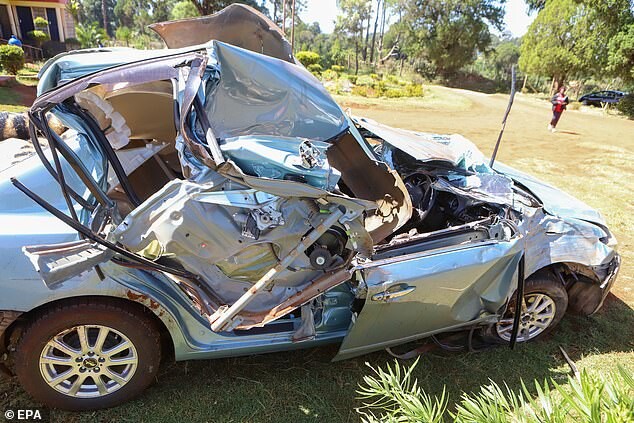
The shocking death of Kenyan marathon world record holder Kelvin Kiptum this weekend has left his family wracked with grief - and suspicious that their superstar was killed in circumstances tainted by foul play.
Kiptum, 24, died in a brutal car accident, which also killed his Rwandan coach Gervais Hakizimana, in the heart of the high-altitude region of Kaptagat in Western Kenya, long renowned as a training base for the best distance runners the world over.
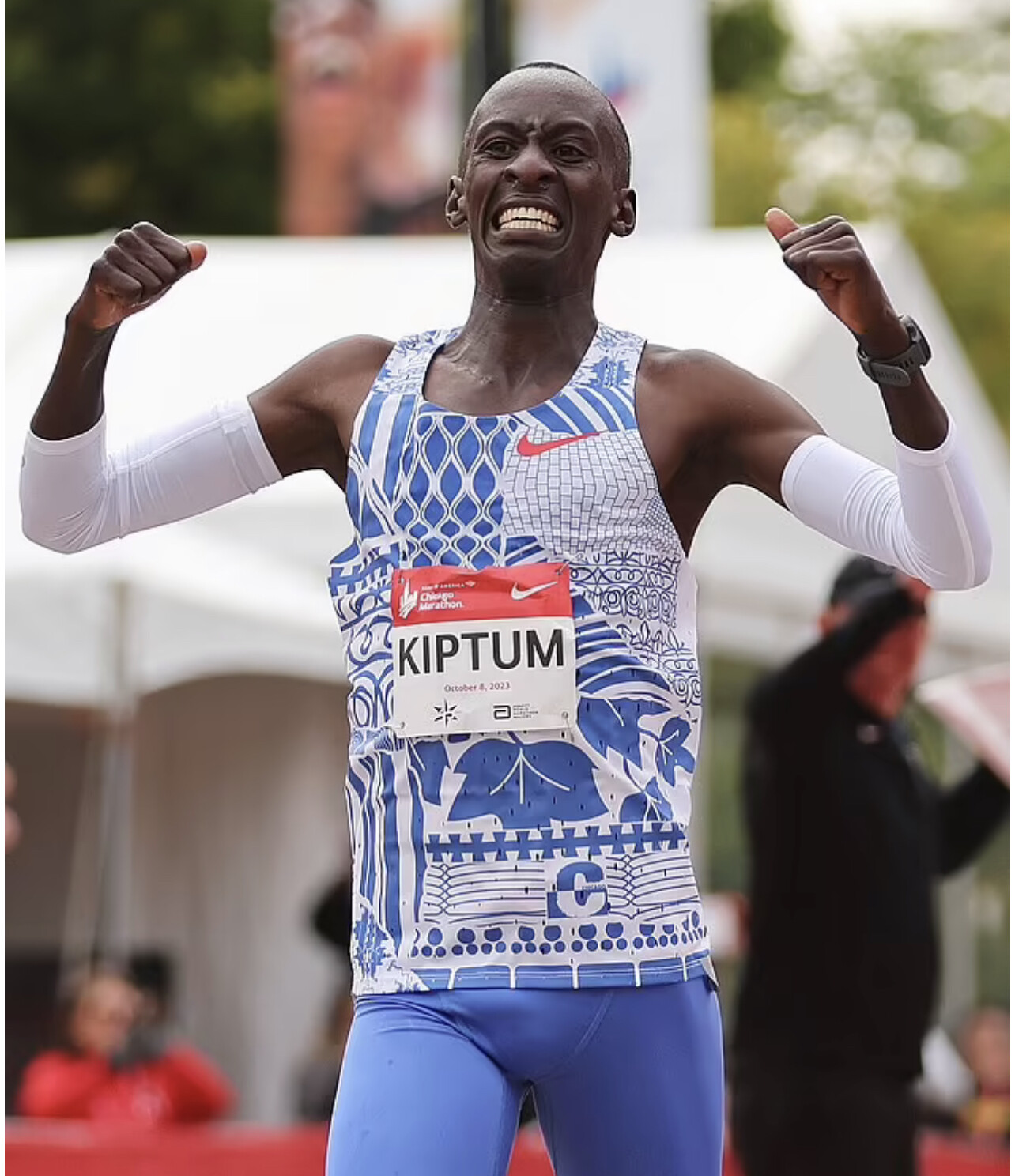
His death prompted an outpouring of grief and heartfelt tributes from family, friends, fellow competitors and sporting greats, including the likes of Sir Mo Farah, who spoke of his 'amazing, special talent' and said the world record holder had been robbed of 'an incredible career'.
The fatal smash was quickly chalked up as an accident by the authorities, who said the dad-of-two had lost control of his car and veered off the road, hitting a tree.
But now Kiptum's father has called for an investigationinto the circumstances surrounding his son's death, claiming a group of unidentified men had come looking for the athlete not long before the horror car crash.
Speaking to Kenya's Citizen TV, Kiptum's father Samson Cheruiyot said four men descended on his house unannounced one day and said they were looking for the runner.
'There are people who came home who were looking for Kiptum but they refused to identify themselves,' Cheruiyot said.
'I asked them to provide identification, but they opted to leave. It was a group of four people.'
The suspicious father said the men refused to say why they were looking for his son, and left when they realised Cheruiyot would not provide any details until they revealed their identities.
He is now pushing the authorities to investigate his son's death, believing the two incidents may have been linked - though he has given no evidence to explain why the men may have been looking for his son.
Horrendous images showed the extent of the damage to Kiptum's car following the collision with a tree.
The front of the blue Toyota Premio was completely crumpled and the windscreen smashed in, while the roof had been torn in two, such was the force of the impact.
According to Kenneth Kimaiyo - one of the first responders at the crash site - via Nation, Kiptum's body was found under the vehicle with the runner already dead.
Coach Hakizimana had managed to climb free of the wreckage and had crawled to the top of a nearby mound in an attempt to attract attention, but he later died of his injuries.
The car has now been towed to a police station for further investigation while the bodies of Kiptum and Hakizimana undergo post-mortem examinations.
However, a third passenger named Sharon Chepkurui Kosgei, somehow survived the incident with relatively minor injuries. The 24-year-old, who works in Civil Aviation Management according to LinkedIn, was taken to nearby Moi Teaching and Referral Hospital in Eldoret for treatment, and according to Kenyan press has now been discharged.
But it is unknown why she was in the car with the athlete and his coach, and she is yet to issue a statement to the press about the incident.
Kiptum's wife, Asenath Cheruiyot, said her husband had planned to take her to Rotterdam in April, where he hoped to become the first man to run a marathon in less than two hours under standard race conditions.
She added that Kiptum was also financing her business ventures, and was in the process of renovating the family home.
'At times I would tell him he's working out too much,' she said. 'He loved his children so much, I don't know what I would tell them.'
Revealing the pair's last phonecall prior to the crash on Sunday just hours before his death, Asenath said Kiptum had promised to buy their children new watches after he had to cancel a planned family day out.
Having gone to bed, she was later awoken around 11pm by her mother-in-law frantically knocking on the door and was informed of her husband's death.
'He hoped to run in sub-two hours. He was working hard and sometimes I told him he trained too much and when the time comes he will be too tired,' she said.
'But he would say 'no, it's fine' and that he is supposed to go 10 laps. I used to tell him to rest on Sundays, but he would refuse.
'We had planned to go with him to Rotterdam in April - and now it is not possible,' Asenath told African outlet Nation.
While the world awaits to see more details of Kiptum's death unravel, tributes continue to pour in for the fallen athlete.
(02/13/2024) ⚡AMPby David Averre (Daily Mail)
Are periods a hinderance to better performance for female runners?
In an exclusive interview with Pulse Sports, Ferdinand Omanyala's fiancee, Laventa Amutavi opened up on whether periods affect a female runner's performance.
Being a female runner has been encompassed with different challenges like bouncing back after childbirth, hormonal imbalance, and period cramps. In the recent past, female athletes have been forced to pull out or perform poorly in major championships due to stomach cramps that are brought on by periods.
A good example of such a scenario was during the 2022 European Championships where Dina Asher-Smith and Daryll Neita made it to the 100m women’s final.
However, Asher-Smith was forced to withdraw from the race and Neita was not too quick to bag a gold medal, both because of cramps. Later, Asher-Smith revealed hers to be a symptom of her period and shared her frustration at its impact on her sport.
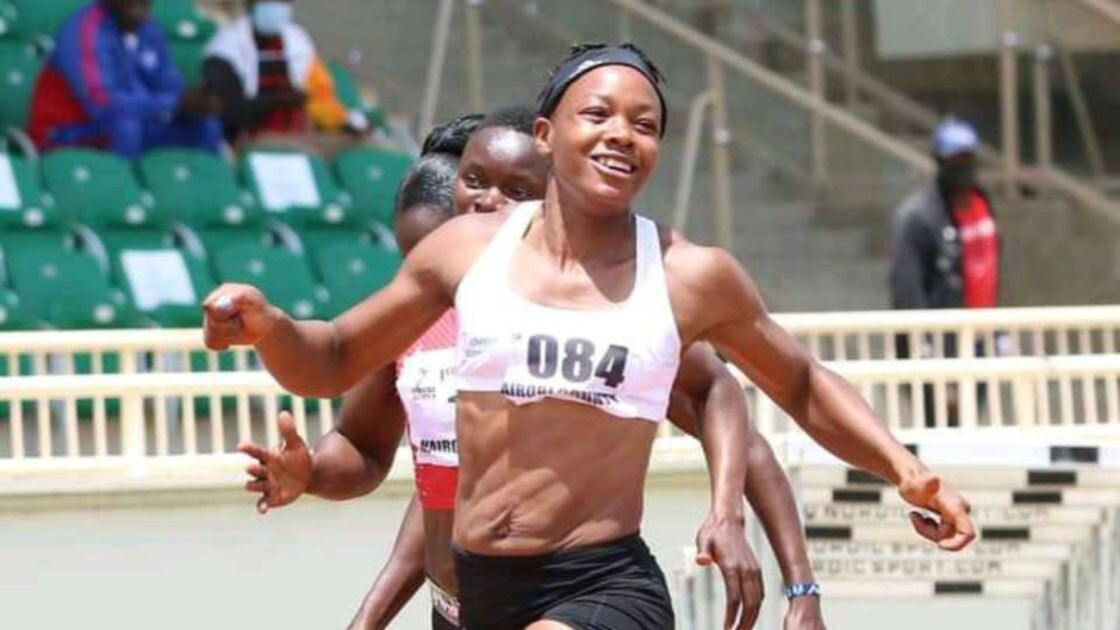
However, such case scenarios do not apply to every woman and some just treat those four or five days of their periods like normal days and maybe they would just adjust their training routines.
Ferdinand Omanyala’s fiancée, Laventa Amutavi, argues that her period days do not affect how she performs. Speaking to Pulse Sports, she insisted that it is not mentally draining since she has mastered the art of handling such days.
“It’s not challenging at all because I train even on days when I’m having my period…I can’t boycott my training because I’m on my period.
“I’m very lucky because I don’t experience cramps so I might not be able to understand the turmoil that women who have severe cramps go through.
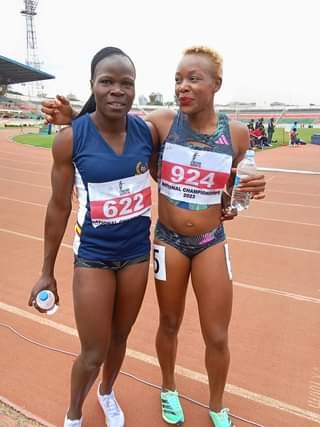
“Mostly, I don’t think cramps adversely affect sports people because, in my years in the sport, I’ve never heard people complain of severe cramps that force them to miss their training.
“I also think it’s because we are always very active so the effects and very minimal and the pain is manageable and it can’t stop someone from running their daily activities,” Amutavi said.
Amutavi added that her coach, Geoffrey Kimani, who is also Omanyala’s coach advised that during the time of a woman’s period, she is required to do very light training.
This is because women tend to lose a lot of nutrients during this time and heavy training will leave them weaker.
“During periods, my coach told me women tend to lose a lot of nutrients through the blood. So, during this period, an athlete is not supposed to train hard,” she added.
She also insisted that during competitions, periods should not be a hindrance to how an athlete performs.
“During a championship, you just compete…you need to take the safety measures to make sure you are okay and step on that starting line.
“It’s not a big deal…like at the World Championships, you can’t withdraw from the race due to that especially when you have made it to the final,” she said.
According to a study by Runner’s World, most women are keenly aware that the cramps menstruation can bring and elite athletes are not immune. Top Great Britain marathoner Aly Dixon says her cramps are so bad they have often left her curled into a fetal position.
“I’ve been very lucky that, in the last few years, races have fallen at the right time in my cycle. I’ve found that I can race quite well on day three, but the previous four days are not so good.
“I always try to make day one an easy or a rest day, as I often suffer with cramps so bad I can’t move from a curled-up ball on the sofa.
“I also get an achy back and heavy quads in the two days leading up to my period, which makes running hard a bit tougher, but my sessions still tend to go well,” she said.
While cramps might be horrible, they don’t need to ruin your race, and exercise itself can help to alleviate them. Paula Radcliffe proved the point when she broke the world marathon record in Chicago in 2002, despite suffering period cramps during the latter stages of the race.
Meanwhile, a journalist from the Mayo Clinic also asked Dr. Petra Casey about an elite athlete or some women who exercise a lot and tend to miss their periods.
“That is called hypothalamic amenorrhea, and what that means is that the hormones that are produced in the brain and then kind of cascade down to signal hormones that are produced in the ovary are not produced.
“So, GnRH, the gonadotropic releasing hormone that is produced, triggers the follicular stimulating hormone, and the luteinizing hormone that is produced in the ovary, that signal does not translate to production of estrogen and progesterone, so the woman loses her periods. They may become irregular initially and then they may stop completely.
“The trigger for that has been studied, and it’s still a little unclear whether it’s body fat percentage, whether it’s weight, whether it’s cortisol levels that stimulate a decrease in GnRH, based on stress and the intensity of workouts.
“All of that is a little bit unclear, but, at the end of the day, a woman will not have her period if she is too lean, and she may be working out too intensely for too long. Many women athletes are trying to become quite lean, because, in endurance sports, it’s advantageous to be lighter,” she said.
(02/13/2024) ⚡AMPby Abigael Wuafula
Sarah Chepchirchir slapped with an eight-year ban by AIU
39-year-old runner Sarah Chepchirchir has been slapped with an eight-year ban for violating the anti-doping rules for the second time following her first ban which happened from 2019 to 2023.
The Athletics Integrity Unit has slapped Sarah Chepchirchir of Kenya with an eight-year ban for violating an anti-doping rule.
Chepchirchir was banned for the Presence/Use of a Prohibited Substance (Testosterone) and her results from November 5, 2023have been disqualified.
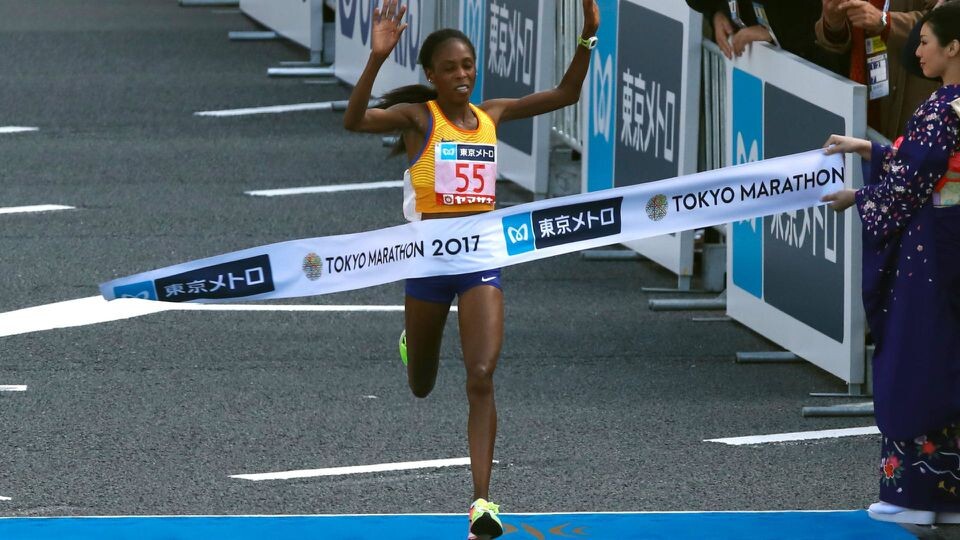
The AIU reported that the 39-year-old runner provided a urine sample on November 5, 2023, after competing at the Bangsaen42 Chonburi Marathon in Chonburi, Thailand.
An analysis of the sample by the World Anti-Doping Agency (“WADA”) accredited laboratory in Bangkok, Thailand (the “Laboratory”), revealed the presence of Metabolites of Testosterone consistent with exogenous origin (the “Adverse Analytical Finding”).
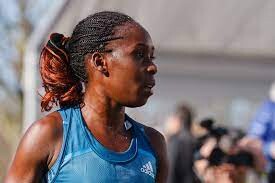
As per the AIU, testosterone is a Prohibited Substance under the WADA 2023 Prohibited List under the category S1.1 Anabolic Androgenic Steroids. It is a Non-Specified Substance prohibited at all times.
Meanwhile, the AIU further noted that the Chepchirchir previously served a period of Ineligibility of four (4) years from February 6, 2019 to February 5, 2023 for an Anti-Doping Rule Violation under Article 2.2 of the 2018 IAAF Rules (equivalent to Rule 2.2 of the Rules) (Use of a Prohibited Substance or a Prohibited Method) based on abnormal values in the hematological module of her Athlete Biological Passport.
“A period of Ineligibility of eight (8) years commencing on December 22, 2023, until December 21, 2031, and disqualification of the Athlete’s results on and since November 5, 2023, with all resulting consequences, including the forfeiture of any titles, awards, medals, points prize, and appearance money.
“The Athlete is deemed to have accepted the above Consequences and to have waived her right to have those Consequences determined by the Disciplinary Tribunal at a hearing,” the AIU said regarding her punishment.
(02/13/2024) ⚡AMPby Abigael Wuafula
Zurich Marathon organizers set to honor Kelvin Kiptum and his coach on Sunday
The Zurich Marathon race organizers have announced that they will honor Kelvin Kiptum and his coach as they mark their 39th edition on Sunday.
The Zurich Marathon race organizers are set to honor world record holder Kelvin Kiptum and his Rwandese coach Gervais Hakizimana as they mark their 39th edition on Sunday, February 18.
In a post on their X (Twitter) handle, it was noted that they would give their last respects to the fallen marathoner who is also the world’s fastest marathoner before starting the race.
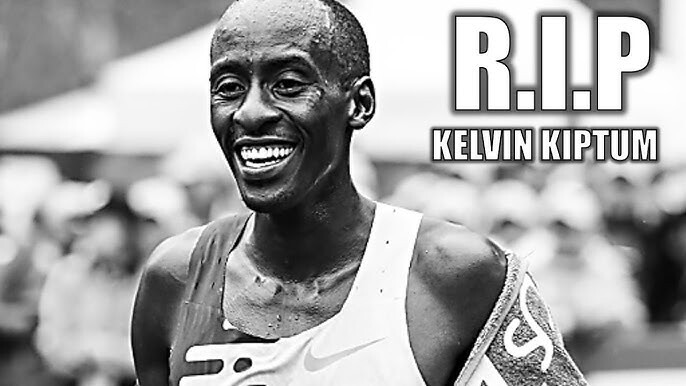
“On Sunday before the start (8h30) of the #ZurichMaratónSevilla24 we will pay tribute to Kelvin Kiptum, world record holder, and his coach, who died yesterday in a traffic accident in Kenya. We will observe 42 seconds of silence, as many as km of the race, in his memory,” the post read.
Despite Kiptum never running there, the organizers have observed the great significance the Kenyan had brought to the world of marathon running.
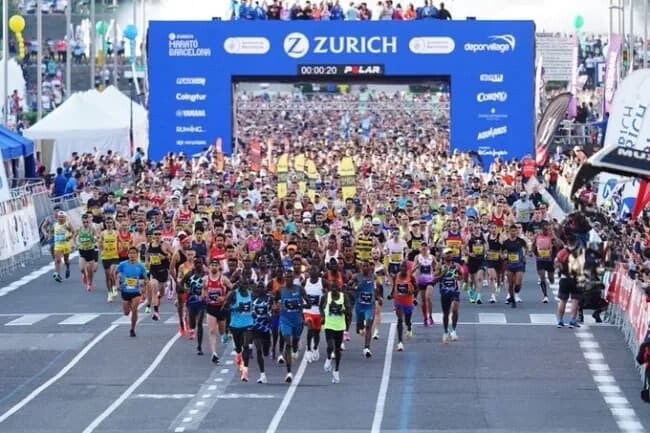
The reigning Chicago Marathon champion had so much potential and he would have shown us wonders, something that will never be fully realized from him.
He just turned 24 in December and he had a bright future ahead of him considering less than a year after making his marathon debut in the streets of Valencia, he ran faster than any man in history, taking over half a minute off the world record with his astonishing winning time of 2:00:35 in the Chicago Marathon last October.
In running the first sub 2:01, Kiptum bettered by 34 seconds the 2:01:09 set by five-time Berlin Marathon champion Eliud Kipchoge, in September 2022, running ever closer to breaking the two-hour barrier in a legitimate race.
His sudden death now ends that teasing possibility of going head-to-head with Kipchoge at the Olympic Games in Paris, France later this year, where Kipchoge is looking to become the first athlete in history to win three successive Olympic marathon titles with Kiptum appearing to be the athlete most capable of stopping him.
(02/13/2024) ⚡AMPby Abigael Wuafula
Zurich Marathon Sevilla
This urban, flat, fast and beautiful brand new race course will drive athletes through the most beautiful monuments of the city. Zurich Maraton de Sevilla brings the unique opportunity to brake the Best personal result over the mythical distance to all the athletes, professional or age groupers, in one of the most perfect international marathon circuits. This fast marathon takes...
more...Five foods to supercharge your running performance
Winter is the perfect time to introduce these nutrient-dense superfoods into your diet. From supporting immune function to providing sustained energy in the face of brisk temperatures, these foods will not only fortify you against the season’s demands, but will also help you lay the foundation for a resilient and powerful season. Try these simple and delicious recipes to elevate your nutrition and better fuel your runs.
1.- Quinoa
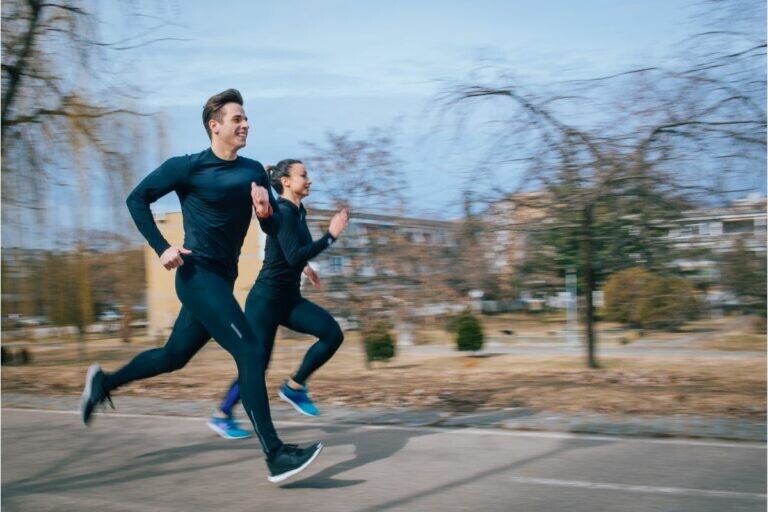
Why it’s a superfood: Quinoa is a complete protein source, containing all nine essential amino acids crucial for muscle repair and recovery. The grain is also packed with magnesium, an often under-consumed mineral that is linked to reduced risk of Type 2 diabetes.
Try: Quinoa Salad with Avocado and Chickpeas

Toss cooked quinoa, diced avocado, canned chickpeas (rinsed and drained), cherry tomatoes, cucumber and feta cheese in a bowl, drizzle with olive oil and lemon juice and season with salt and pepper for a protein-packed and nutrient-rich salad.
2.- Chia seeds
Why they’re a superfood: Chia seeds absorb water to aid in hydration during long runs and are rich in healthy Omega-3 fatty acids. The antioxidants in the seeds are thought to help reduce the inflammation that takes place when muscles suffer micro-tears.
Try: Chia Seed Pudding with Berries
Mix chia seeds with almond milk and vanilla extract, sweeten with honey, refrigerate overnight and top with fresh berries for a delicious pudding that can serve as breakfast or dessert.
3.- Spinach
Why it’s a superfood: Spinach is rich in iron, crucial for oxygen transport to muscles and packed with antioxidants for overall health.
Try: Spinach and Feta Stuffed Chicken Breasts
Sauté chopped spinach and garlic in olive oil, stuff mixture into sliced chicken breasts and season with salt and pepper. Bake until cooked throughout for an iron-packed and protein-rich main course.
4.- Sweet potatoes
Why they’re a superfood: Sweet potatoes provide complex carbohydrates, promote sustained energy levels and are rich in vitamins A and C for immune support. Each potato contains four grams of fat-fighting fibre, and supplies potassium, an electrolyte that helps your body convert carbohydrate to glycogen, to be used as fuel during exercise.
Try: Baked Sweet Potato Fries
Cut sweet potatoes into fry-size portions, toss with olive oil and seasonings of choice (try paprika, garlic powder and salt and pepper), and bake until crispy for a delicious and energy-boosting snack or side dish.
5.- Salmon
Why it’s a superfood: Salmon is loaded with Omega-3 fatty acids, supporting heart health, reducing inflammation and aiding in muscle recovery. It also packs a protein punch and is a great source of vitamin D.
Try: Grilled Lemon Garlic Salmon
Marinate salmon fillets in a mixture of lemon juice, minced garlic, olive oil, salt and pepper, then grill for a flavourful and nutritious pre- or post-run meal.
Incorporating these superfoods into your diet can provide the essential nutrients needed for optimal running performance while supporting endurance, recovery and overall well-being.
(02/13/2024) ⚡AMPby Keeley Milne


